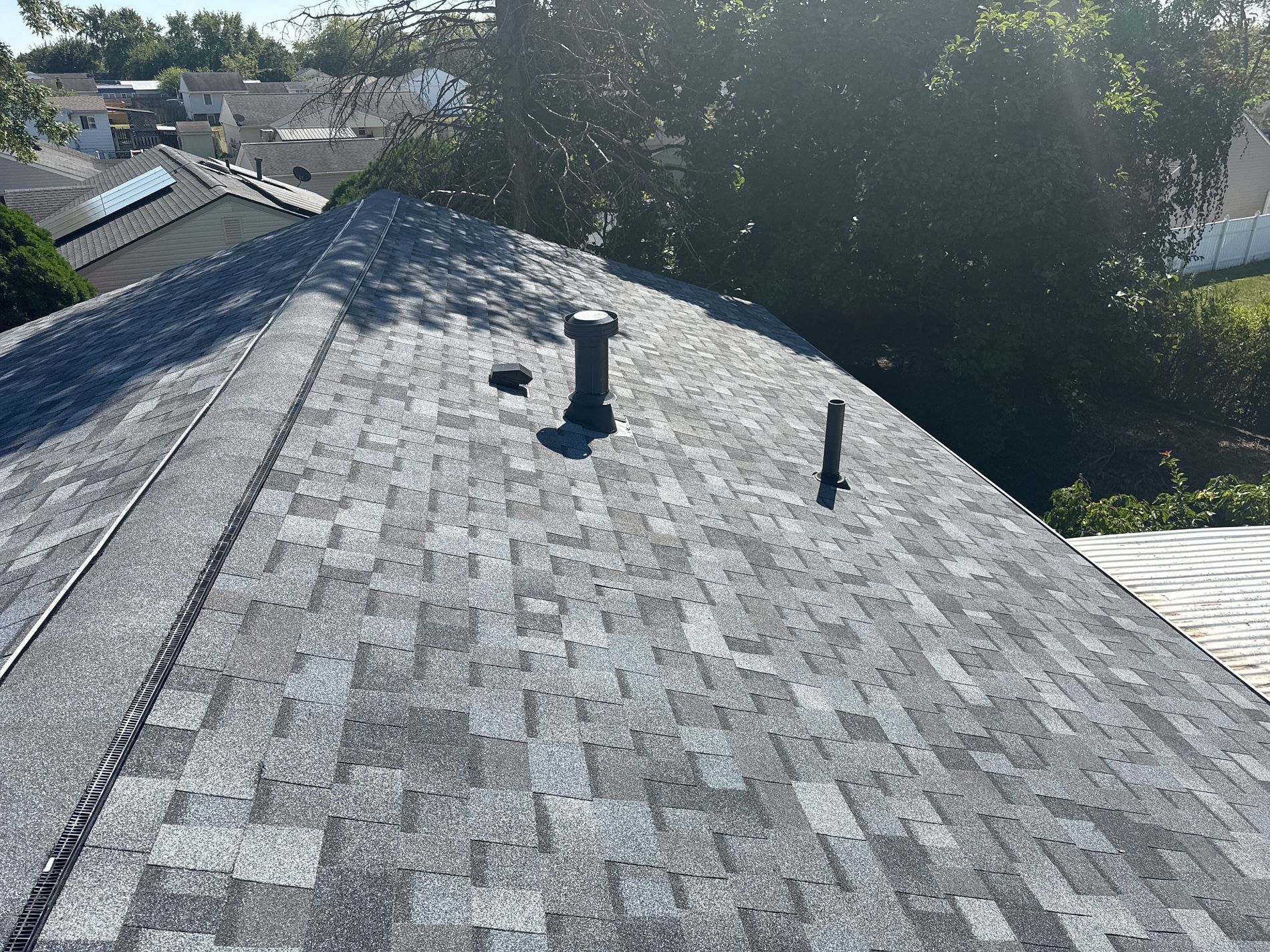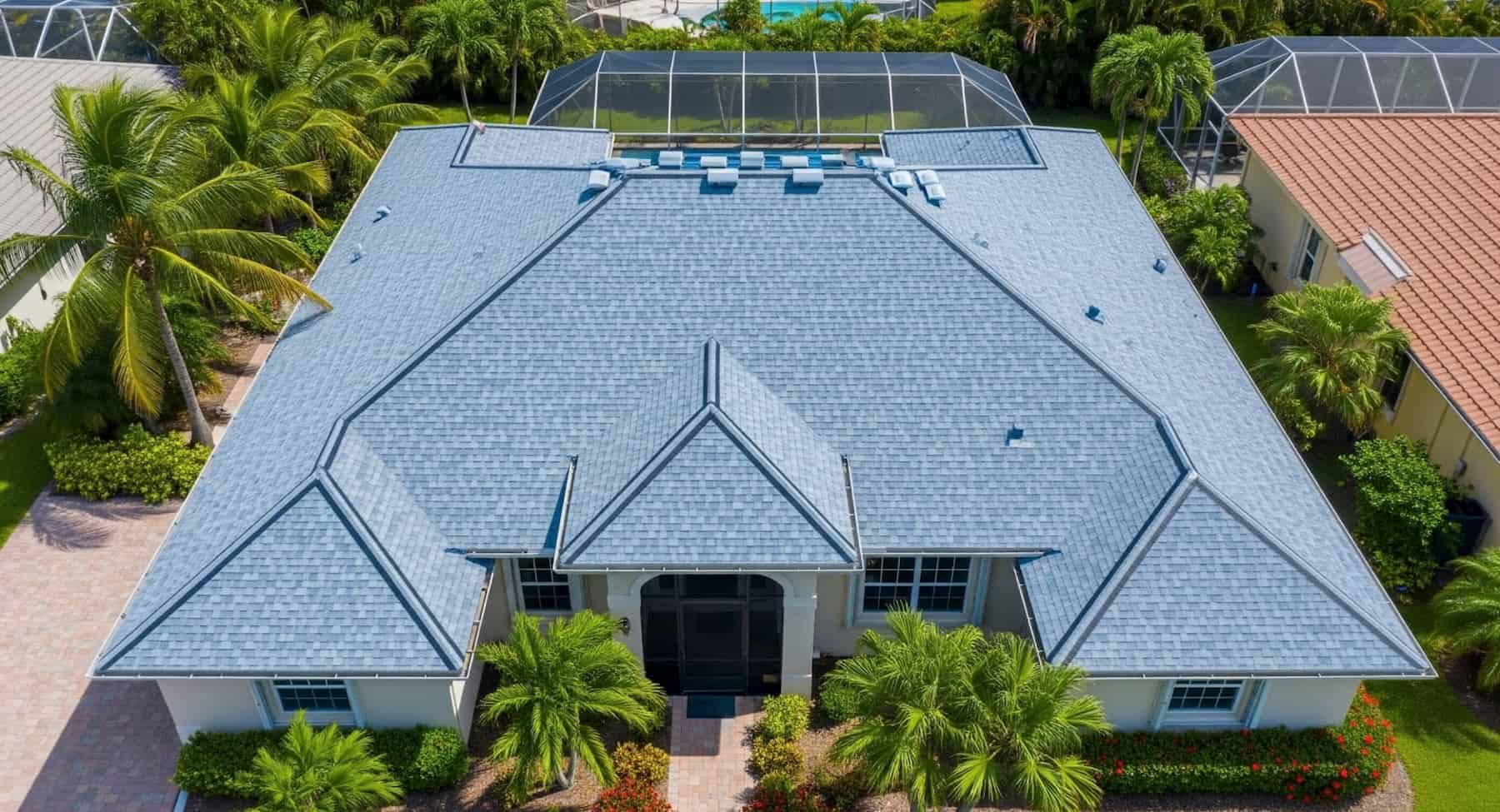Allstate Exteriors' Expert Guide:
Explore Our Blog
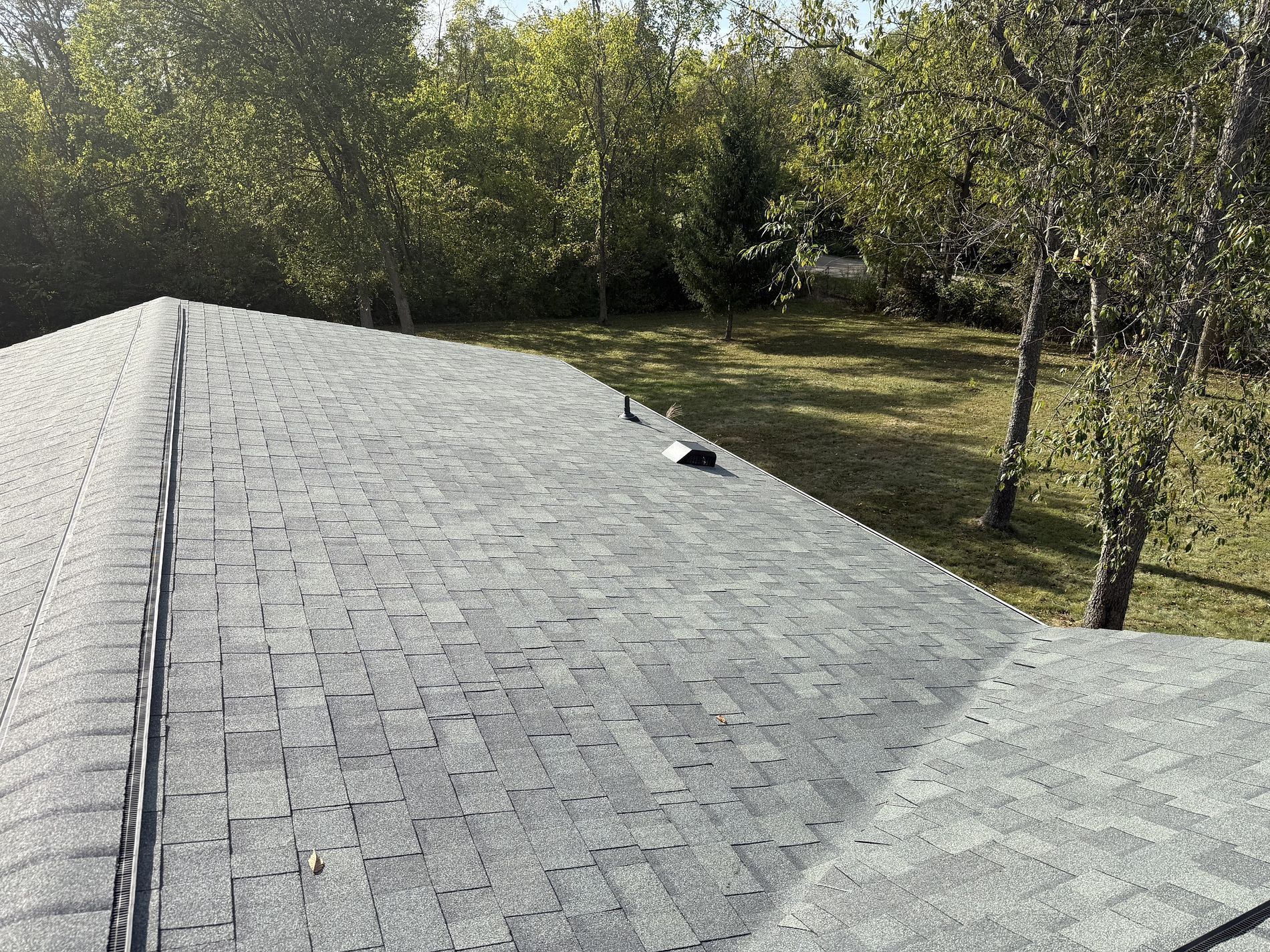
Your roof isn’t just a bunch of shingles nailed to wood - it’s the shield that protects your family, your home, and everything inside it. When it comes time for a roof replacement , you’ll quickly realize that not all shingles are created equal. In fact, choosing the right shingle can make the difference between a roof that barely holds up for 15 years and one that gives you decades of worry-free protection. The three most common options homeowners hear about are 3-tab shingles , architectural shingles , and Owens Corning’s Duration Flex shingles . Each offers unique advantages in terms of cost, appearance, and durability. Let’s break down the differences so you can feel confident about the decision you’re making for your home. What Are 3-Tab Shingles? If shingles had a “starter pack,” 3-tab shingles would be it. They’ve been around for decades and are often the most budget-friendly option. They’re called “3-tab” because each strip looks like three separate shingles once installed. Cost: The most affordable shingle option on the market. Lifespan: About 15–20 years, depending on weather and maintenance. Appearance: Flat, uniform look that gets the job done but doesn’t offer much style. Durability: Lightweight, which makes them more vulnerable to high winds, hail, and storm damage. Best fit: 3-tab shingles are ideal for homeowners on a tight budget, rental properties, or situations where you just need something practical without the frills. What Are Architectural Shingles? Now we’re moving into the “step-up” category. Architectural shingles (sometimes called dimensional shingles) are thicker, stronger, and designed with layers that create a more textured, upscale appearance. They’re by far the most popular option for homeowners upgrading their roofs today. Cost: A mid-range investment - more than 3-tab, but not luxury-level. Lifespan: 25–30+ years, which makes them a long-term solution. Appearance: A dimensional look that mimics wood shakes, adding instant curb appeal. Durability: Heavier weight and stronger adhesives help these shingles resist wind, storms, and general wear and tear. Best fit: Perfect for homeowners who want their home to stand out on the block, while still balancing cost and long-term protection. What Are Duration Flex Shingles? Think of Duration Flex shingles as the “luxury SUV” of the roofing world. Manufactured by Owens Corning, these shingles are built with a special polymer-modified asphalt that makes them incredibly flexible and impact-resistant. That means they can handle the kind of weather that destroys other roofs. Cost: A premium option - but you’re paying for unmatched protection. Lifespan: 30–40+ years when properly installed and maintained. Appearance: Similar to architectural shingles but with more refined, designer-level aesthetics. Durability: Class 4 impact rating (the highest available), which means they can stand up to hail, high winds, flying debris, and extreme temperature changes . Best fit: Duration Flex shingles are perfect for homeowners who live in storm-prone areas like Ohio (hail, tornadoes) or Florida (hurricanes). If you’re planning to stay in your home long-term, this is the roof that gives you the most peace of mind. Which Shingle Is Right for You? If you’re looking for the cheapest way to get a roof over your head, 3-tab shingles are your go-to. If you want a beautiful home upgrade that balances cost and quality, architectural shingles are the clear winner. If you want to protect your home against the worst storms nature can throw at you, Duration Flex is absolutely worth the investment. At the end of the day, the right choice depends on your budget, your style preferences, and how long you plan on living in your home. But no matter which way you go, choosing the right roofing contractor is just as important as choosing the right shingle. At Allstate Exteriors, we don’t just slap shingles on your house, we help homeowners across Ohio and Florida make informed decisions about protecting their biggest investment. As an Owens Corning Platinum Preferred Contractor , we have the training, experience, and warranties to make sure your roof lasts for decades. 👉 Schedule your free inspection today and let’s talk about the best roofing solution for your home, your budget, and your peace of mind.

When a storm rolls through, it doesn’t just shake up your roof — it shakes up your peace of mind. Shingles in the yard, water stains on the ceiling, the constant drip-drip-drip reminding you something is wrong… it’s stressful. And right when you’re at your most vulnerable, here come the knock-knocks at the door. “Good news!” the out-of-town roofer says. “We can patch this up cheap, quick, and today!” It might sound like a lifeline, but here’s the truth: those so-called “ storm chasers ” are only here for one reason — to cash in and move on. The difference between a roofer who chases storms and a roofer who calls your town home isn’t just a matter of convenience. It’s the difference between a quick fix that falls apart and a roof that protects your family for the next decade and beyond. 🚨 The Short-Term Fix vs the Long-Term Solution Storm Chasers: Show up immediately after severe weather, often canvassing neighborhoods like salesmen. Offer too-good-to-be-true prices to pressure you into a fast decision. Use low-quality materials and subcontractors you’ll never meet again. Cut corners, then vanish before you even know something went wrong. Local Roofing Companies: Take time to thoroughly inspect and document storm damage. Understand local building codes and climate-specific needs. Use proven crews, trusted materials, and tested installation methods. Stick with you after the storm to ensure your home is truly secure. Think of it like this: would you rather have a stranger fix your car in a parking lot, or a mechanic you know and trust in a certified shop? The same logic applies to your roof. 🏡 The Warranty You Can Actually Use Storm Chasers: Throw around “warranty” promises that evaporate the second they leave town. If leaks start in six months? They won’t be around to answer your call. Your roof could end up disqualified from insurance or manufacturer coverage. Local Roofing Companies: Offer real warranties backed by the manufacturer (like Owens Corning). Provide workmanship guarantees you can actually hold them accountable to. Will be standing by years later when you need a repair, inspection, or just peace of mind. A warranty only matters if the company is still around to honor it. 💰 The Real Cost of “Cheap” Storm chasers love the phrase “we’ll save you money.” But here’s the reality: Cheap work = Expensive repairs later. Improper installation leads to hidden leaks, mold, rotting decking, and ruined insulation. Non-compliant work can void your insurance coverage. Local companies may not always be the “lowest bid,” but they give you: Transparent estimates, with no hidden surprises. Long-term savings because the job is done right the first time. Help navigating your insurance claim so you don’t leave money on the table. It’s not about the lowest price. It’s about the best value over 10+ years. 🤝 The Community Connection Here’s the thing about storm chasers: they don’t know your town. They don’t know your weather patterns. They don’t know your neighbors. They don’t care. But local roofers? They’re woven into the fabric of your community. Their kids go to the same schools. They sponsor the local 5K and Little League teams. You see their trucks and signs long after the storms pass. When you choose local, you’re not just buying a roof — you’re investing in a relationship. One that comes with accountability, reputation, and roots. ✅ The 10-Year Difference So, what happens 10 years down the road? If you hired a storm chaser : You might be on your second or third roof by now, with insurance headaches, hidden leaks, and repair bills stacking up. If you hired a local roofer : Your roof is still strong, your warranty still valid, and you have the same trusted company just a phone call away. The real difference between storm chasers and local roofers isn’t just about who fixes your roof today — it’s about who’s still here when you need them tomorrow. 📞 Ready for a Roof You Can Count On? At Allstate Exteriors, we’ve built our reputation one home, one roof, and one relationship at a time. We’re not chasing storms — we’re standing strong in our community, year after year. ✅ Platinum Preferred Contractor ✅ Real warranties backed by trusted manufacturers ✅ Decades of experience serving Ohio and Florida families ✅ Local, dependable crews you can trust
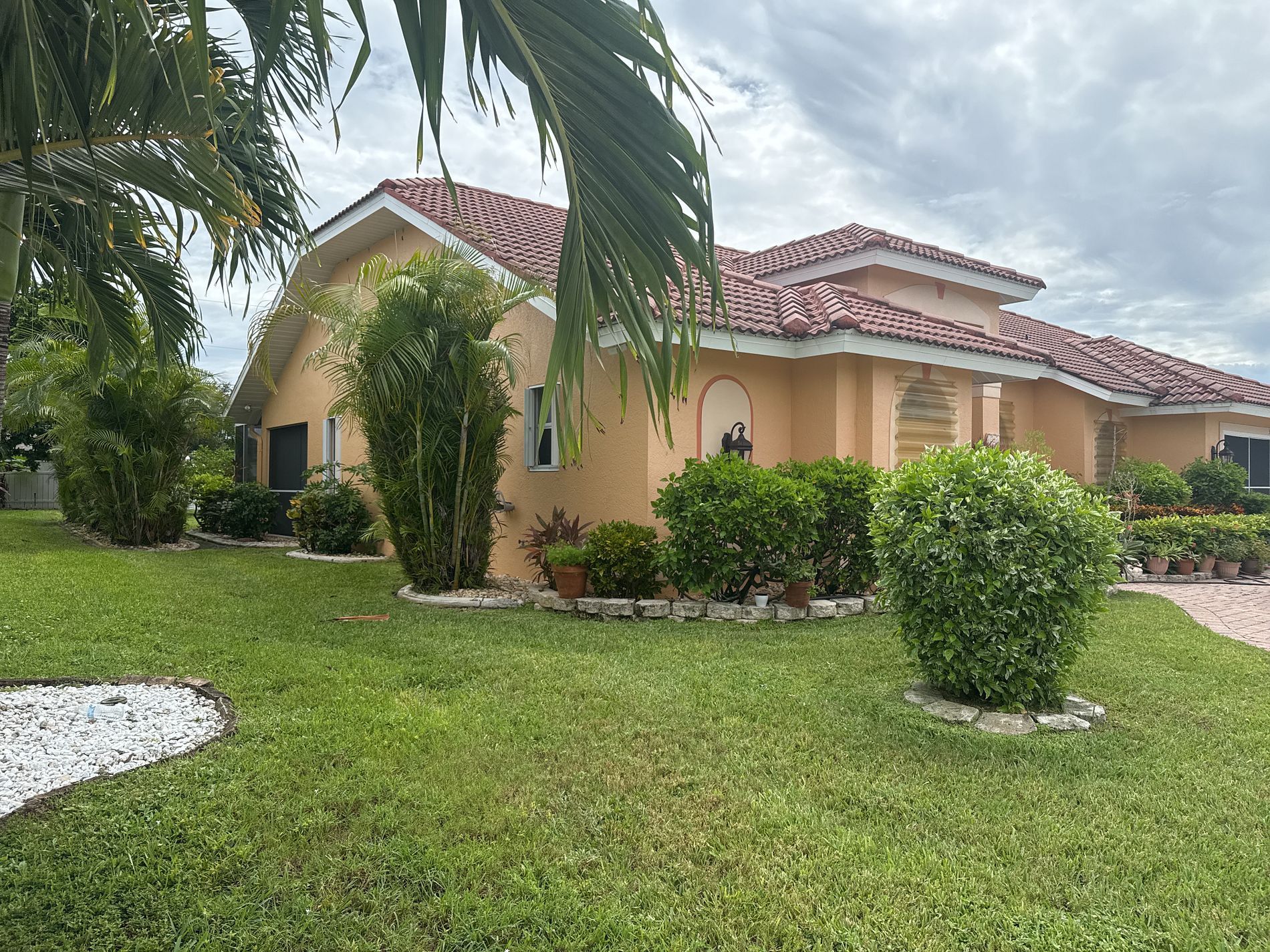
It’s easy to brush off a small roof leak. Maybe you noticed a faint water stain on the ceiling, a tiny drip during heavy rain, or some shingles that look out of place. You tell yourself, “It’s not that bad. I’ll deal with it later.” But here’s the truth: even the smallest roof leaks can snowball into major and expensive problems. At Allstate Exteriors, we’ve seen homeowners put off minor roof repairs only to face mold, rotten decking, and even structural damage down the road. If you’re wondering what really happens when you ignore a small roof leak, let’s break it down. 1. Water Damage Spreads Quickly Even a small leak allows water to creep into your attic, insulation, and drywall. Over time, that moisture soaks into wood, weakens materials, and spreads throughout your home. Rotting wood decking can compromise your roof’s structural integrity. Stained ceilings and walls lower your home’s curb appeal and value. Sagging drywall can lead to costly interior repairs. 2. Mold and Mildew Growth Where there’s moisture, mold is never far behind. A small leak creates the perfect environment for mold and mildew to grow inside your attic and walls. Mold spores can spread throughout your HVAC system. It can trigger allergies and respiratory issues for your family. Once mold sets in, remediation can cost thousands of dollars. 3. Higher Energy Bills A leaky roof doesn’t just let water in—it lets air out. Moisture damages insulation, making your home less energy-efficient. That means your AC or furnace has to work harder, and your utility bills creep up every month. Replacing insulation and fixing leaks later will cost far more than a simple repair today. 4. Structural Damage to Your Home If leaks continue unchecked, the consequences can be severe: Roof decking may collapse under pressure. Support beams can weaken, affecting your entire home’s stability. Water may even reach your foundation, causing cracks and shifting. What started as a “minor nuisance” could eventually compromise your home’s safety. 5. Shortened Roof Lifespan Your roof is designed to last 20–30 years or more, depending on the materials. But ignoring small leaks accelerates wear and tear. Moisture trapped beneath shingles or flashing will deteriorate roofing materials faster, often forcing homeowners into a full roof replacement years earlier than expected. 6. Insurance May Not Cover It Here’s a harsh reality: most insurance companies expect homeowners to handle routine maintenance. If you delay fixing a small roof leak, your insurance provider could deny your claim for damage, leaving you with the bill. Proactive repairs protect both your home and your wallet. How to Prevent Small Leaks From Becoming Big Problems At Allstate Exteriors, we recommend: Annual roof inspections to catch issues early. Storm damage checks after hurricanes, high winds, or hail. Prompt repairs for missing shingles, cracked flashing, or damaged gutters. Small roof leaks may not seem urgent, but the hidden damage they cause is real and often devastating. By acting quickly, you’ll protect your home, your family, and your investment. Call today to schedule your free estimate!
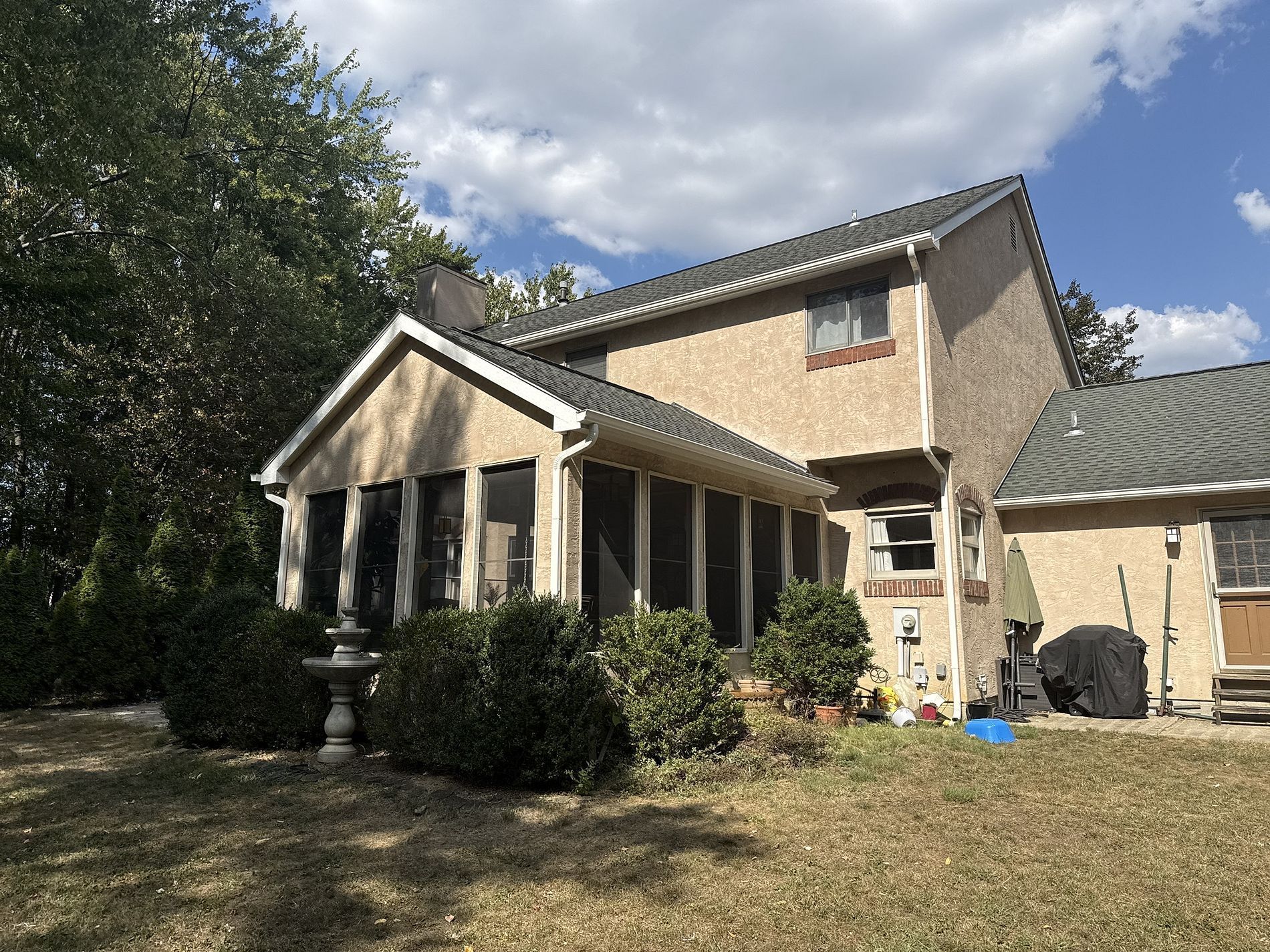
If you’ve ever gathered multiple roofing estimates, you’ve probably noticed something surprising: the numbers don’t always line up. One contractor might give you a low price, another comes in much higher, and the rest fall somewhere in between. So why do roofing estimates vary so much, and how can you make sure you’re comparing them fairly? At Allstate Exteriors & Restoration Services, we’ve been helping homeowners in Ohio and Florida replace and repair their roofs for decades. We know that your roof is one of the most important investments you’ll ever make for your home, and we believe you deserve clear, honest information when choosing a roofing contractor. Let’s break down the reasons estimates differ and what you should look for when reviewing them. 1. The Type and Quality of Roofing Materials One of the biggest factors in the price of a roof replacement is the type of roofing material. Not all shingles are created equal. For example: Three-tab shingles are typically the most affordable but also have the shortest lifespan. Architectural shingles cost more but are thicker, more durable, and add curb appeal. Impact-resistant shingles and premium options (like Owens Corning Duration FLEX) can provide enhanced protection against wind, hail, and severe weather. But it doesn’t stop at shingles. Quality underlayment, ice and water shield, flashing, vents, and even the type of nails used can all impact the total estimate. 👉 At Allstate Exteriors, we only use Owens Corning roofing products because they’re proven to withstand harsh weather while offering excellent warranties. Our detailed estimates include all the essentials so you’re not left with hidden costs down the road. 2. Labor Costs and Installation Standards Roofing isn’t just about materials - it’s about the people installing them. A roof can only perform as well as it’s installed. Contractors who invest in training, safety certifications, and skilled crews may charge more for labor, but the quality of the installation will save you money in the long run. Crews that are underpaid or rushed may cut corners, leading to leaks and premature roof failure. Certified roofing contractors follow strict manufacturer guidelines, ensuring your roof lasts as long as possible. 👉 As an Owens Corning Platinum Preferred Contractor, Allstate Exteriors is held to the highest installation standards in the industry. That means your roof is installed correctly the first time—giving you peace of mind for years to come. 3. Warranty Coverage Another reason roofing estimates vary is the type of warranty offered. Some companies only provide a basic one- or two-year workmanship guarantee. Others, especially certified contractors, can offer extended manufacturer-backed warranties that cover both materials and labor. 👉 Because of our Platinum Preferred status, Allstate Exteriors can offer extended Owens Corning warranties that most local contractors simply cannot. Pair that with our workmanship guarantee, and you’re covered from every angle. 4. The Scope of Work Not all estimates include the same level of detail. Some roofing contractors may only quote for shingle replacement, while others include additional work like: Replacing rotten decking Upgrading ventilation Installing new flashing around chimneys and skylights Removing and disposing of old materials 👉 At Allstate Exteriors, we provide clear, transparent estimates with line-by-line breakdowns, so you know exactly what’s included and what’s not. 5. Transparency and Reputation Sometimes the lowest bid isn’t really the best deal. Low-ball estimates may not include proper insurance, quality products, or experienced installers and that can cost you more in repairs later. When comparing estimates, always look beyond the price: Is the contractor licensed and insured? Do they have a proven reputation with 5-star reviews? Are they local and established, or could they disappear when you need warranty service? 👉 With thousands of satisfied customers, an A+ rating with the BBB, and countless 5-star reviews, Allstate Exteriors has built a reputation for doing things the right way. We’re a family-owned company that’s here to stay. How to Compare Roofing Estimates Fairly When you’re reviewing multiple bids, keep these steps in mind: Compare apples to apples. Make sure each estimate includes the same quality materials and scope of work. Ask questions. If something isn’t clear, ask the contractor to explain it. A good roofing company will be transparent. Consider long-term value. The cheapest roof may not last as long or provide the same level of protection as one installed by a certified contractor with premium materials. Frequently Asked Questions: Why is one roofing estimate so much lower than the others? It’s often because cheaper materials, limited warranties, or less experienced crews are being used. Always read the fine print. Should I always pick the lowest roofing estimate? Not necessarily. The lowest price may cost you more in repairs and replacements later. Look at the overall value, not just the number. How can I be sure my roofing estimate is fair? Work with a trusted, local roofing company with a solid reputation, certifications, and detailed proposals. At Allstate Exteriors, we believe homeowners deserve more than a number on a piece of paper. You deserve clarity, honesty, and peace of mind. That’s why we take the time to explain our estimates, show you exactly what’s included, and stand behind our work long after the project is complete. Contact Allstate Exteriors today to schedule your free estimate!
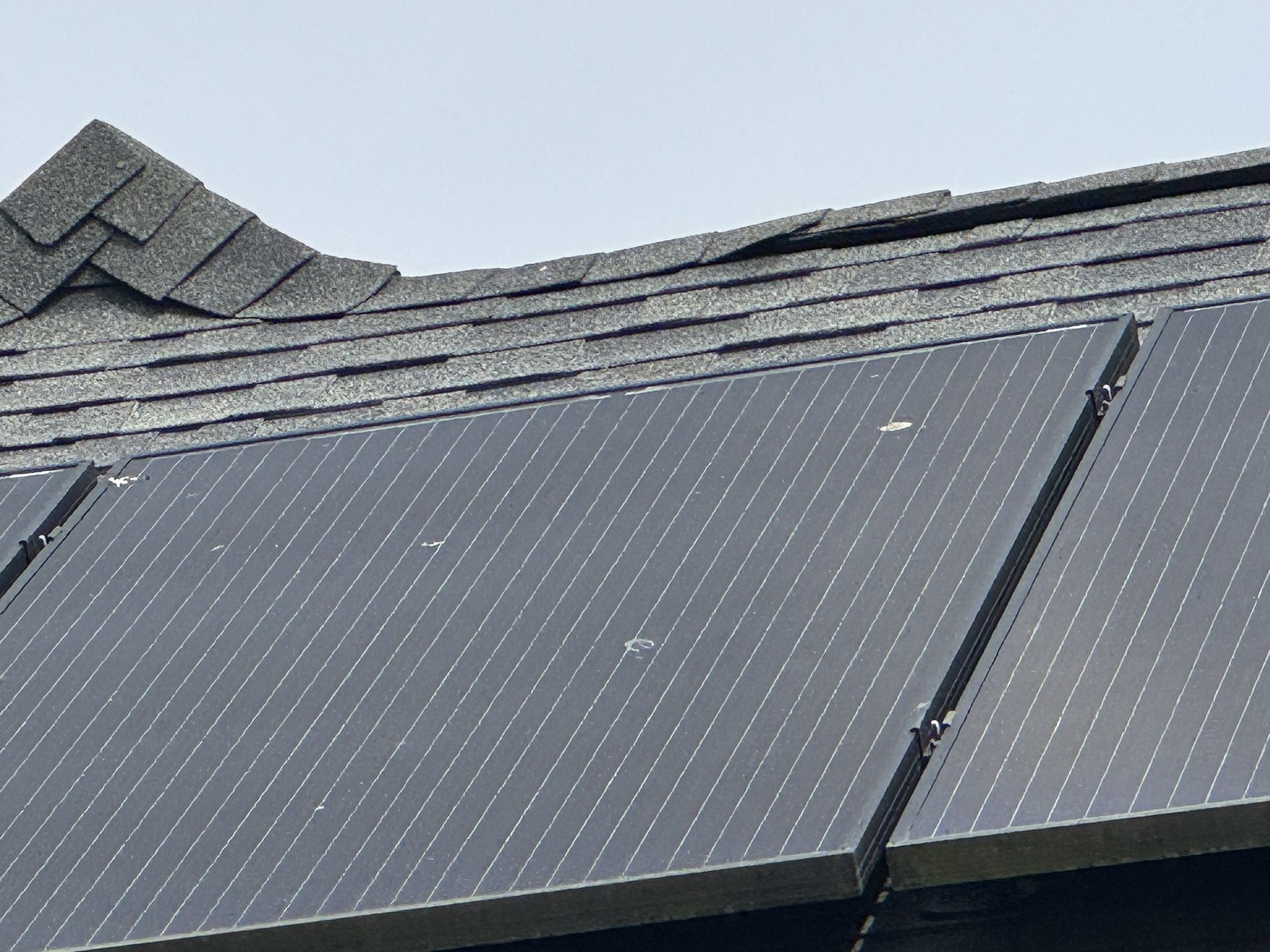
A strong storm can be unsettling. You hear the howling wind outside, watch the trees sway, and wonder if your home will hold up against Mother Nature’s power. Once the storm passes, most homeowners do the same thing: step outside, glance up at the roof, and breathe a sigh of relief when everything looks okay. But here’s the truth: what you see from the ground is only part of the story. Wind damage to your roof isn’t always obvious, and waiting until you spot a problem could mean costly repairs later. At Allstate Exteriors, we’ve inspected countless roofs in Ohio and Florida, and one of the most common phrases we hear is: “I thought my roof was fine—I didn’t see anything wrong!” Hidden wind damage is sneaky, but left unchecked, it can compromise your roof’s integrity and your home’s safety. How Wind Quietly Damages Your Roof When people picture wind damage, they usually imagine shingles flying off in big, dramatic chunks. While that can happen, wind often leaves behind subtle, invisible damage that isn’t easy to notice: Shingle Lifting – Even if shingles don’t blow off, strong gusts can loosen the adhesive seal. A lifted shingle might lay flat again, but the waterproof barrier is already broken. Granule Loss – The gritty texture on shingles protects your roof from sun and water. Wind rubs shingles against each other, knocking those protective granules loose—kind of like sandpaper wearing them down. Nail Stress – Wind pressure tugs on fasteners. Over time, it can weaken nails or pull them up slightly, creating hidden entry points for water. Moisture Intrusion – Once water finds even a hairline gap, it can seep into your roof’s underlayment and decking, quietly causing rot, mold, and stains that may not show up indoors for months. Why You Might Not Notice Damage Right Away Wind damage has a way of disguising itself. Here’s why so many homeowners overlook it: From the Ground, Everything Looks Fine – Unless shingles are curled, cracked, or missing, the roof might look completely intact. Symptoms Are Delayed – A roof leak doesn’t always happen the day after a storm. It might take weeks—or even a season—for damage to reveal itself inside. Rooflines Are Hard to See – On steep or tall roofs, the compromised areas are often out of sight. Think of it like a tiny crack in your car’s windshield—it may not seem like a big deal at first, but if left alone, it will spread and become a much bigger problem. The Cost of Ignoring Hidden Wind Damage Overlooking invisible damage can lead to much bigger headaches, such as: Costly Repairs Later – What could’ve been a quick repair may turn into replacing large sections of your roof. Insurance Claim Issues – Insurance companies may deny coverage if too much time passes before damage is documented. Interior Problems – Ceiling stains, peeling paint, mold, and insulation damage often trace back to wind-damaged shingles that looked “fine.” S hortened Roof Lifespan – A compromised roof simply won’t last as long, which means you’ll be replacing it sooner than expected. What Homeowners Should Do After a Windstorm You don’t need to climb up on your roof to check it yourself—in fact, it can be dangerous. Instead, follow these steps to protect your home: Schedule a Professional Roof Inspection – A certified roofing expert knows exactly what to look for and can spot issues the average homeowner would never notice. Keep Records – Write down the date of the storm, snap photos of your yard or siding if anything blew off, and save any news reports of wind speeds in your area. This helps if you ever need to file an insurance claim. Don’t Wait – Even if everything looks okay, time is critical. Acting quickly means repairs are easier, cheaper, and more likely to be covered by insurance. Protecting Your Home Starts with the Roof Your roof is your home’s first line of defense against the elements. It protects your family, your belongings, and the structure of your house itself. That’s why it’s so important not to trust a “quick glance” after a storm. At Allstate Exteriors, our trained professionals know how to spot wind damage that isn’t visible to the untrained eye. We’ll give you an honest assessment of your roof’s condition and recommend the best next steps - whether that’s a simple repair , maintenance, or a replacement. Call Allstate Exteriors today to schedule your free inspection.
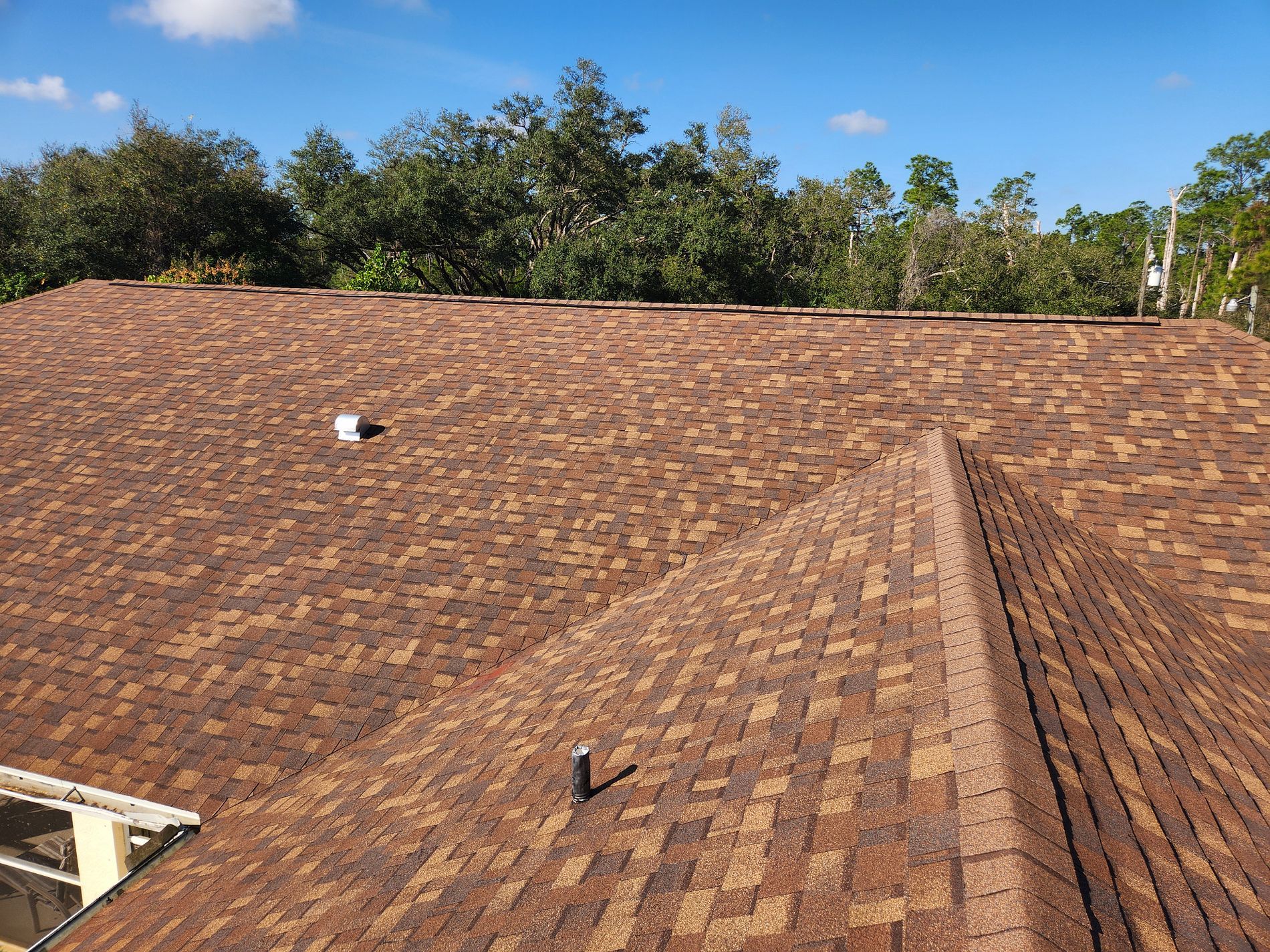
When hurricanes or tropical storms move through Florida, the damage they leave behind can be overwhelming. Roofs often take the hardest hit—leaving families vulnerable to leaks, water intrusion, and unsafe living conditions. Thankfully, federal programs like FEMA’s Temporary Roofing Assistance can help bridge the gap between disaster and recovery. At Allstate Exteriors, we’ve worked with countless homeowners who needed immediate protection after a storm while planning their permanent roof repairs. Here’s what you should know about FEMA’s roofing assistance and how our team can help you through the process. What Is FEMA’s Roofing Assistance? FEMA (Federal Emergency Management Agency) provides temporary roofing assistance after a federally declared disaster. The most well-known program is the Blue Roof Program, which installs durable, weather-resistant coverings to shield damaged roofs from the elements. It’s important to note that FEMA’s program is a short-term solution—its goal is to make homes safe and habitable until a permanent repair or replacement can be completed by a trusted roofing company. Who Qualifies? To be eligible, you typically must: Live in a federally declared disaster area Have roof damage that makes your primary residence unsafe or unlivable Provide documentation of ownership and residency FEMA may send an inspector to confirm the extent of damage before approving assistance. What It Covers (and Doesn’t) ✅ Temporary coverings or limited repairs to protect against further water intrusion ✅ Materials and labor provided through authorized contractors ❌ Full roof replacements ❌ Cosmetic upgrades or non-essential improvements ❌ Detached structures (sheds, garages, etc.) Insurance vs. FEMA Assistance Many Florida homeowners wonder if they should contact FEMA or their insurance company first. The answer: always start with your insurance provider. FEMA is meant to step in when insurance coverage doesn’t cover immediate needs. At Allstate Exteriors, we help homeowners every day with insurance claims, inspections, and repairs to ensure they get the coverage and long-term solutions they deserve. How Allstate Exteriors Fits In While FEMA may cover temporary protection, our team steps in to deliver the permanent, high-quality repairs or replacements your home needs. As an Owens Corning Platinum Preferred Contractor with an A+ BBB rating, we’re trusted across Florida to: Perform detailed storm damage inspections (with photo and video documentation) Work directly with homeowners through the insurance process Install durable roofing systems built to withstand Florida’s climate We know that after a storm, homeowners need more than just a tarp—they need peace of mind. That’s why our crews are on call and ready to respond quickly when disaster strikes. Final Thoughts FEMA roofing assistance can provide valuable short-term relief, but it’s only part of the recovery process. Once your home is safe, turn to a trusted local contractor like Allstate Exteriors for the permanent repairs that protect your family long-term. Whether you’re dealing with minor damage or a full roof replacement, our Florida teams are here to help you every step of the way. 👉 Need a roof inspection after a storm? Contact Allstate Exteriors today for your free storm damage assessment.
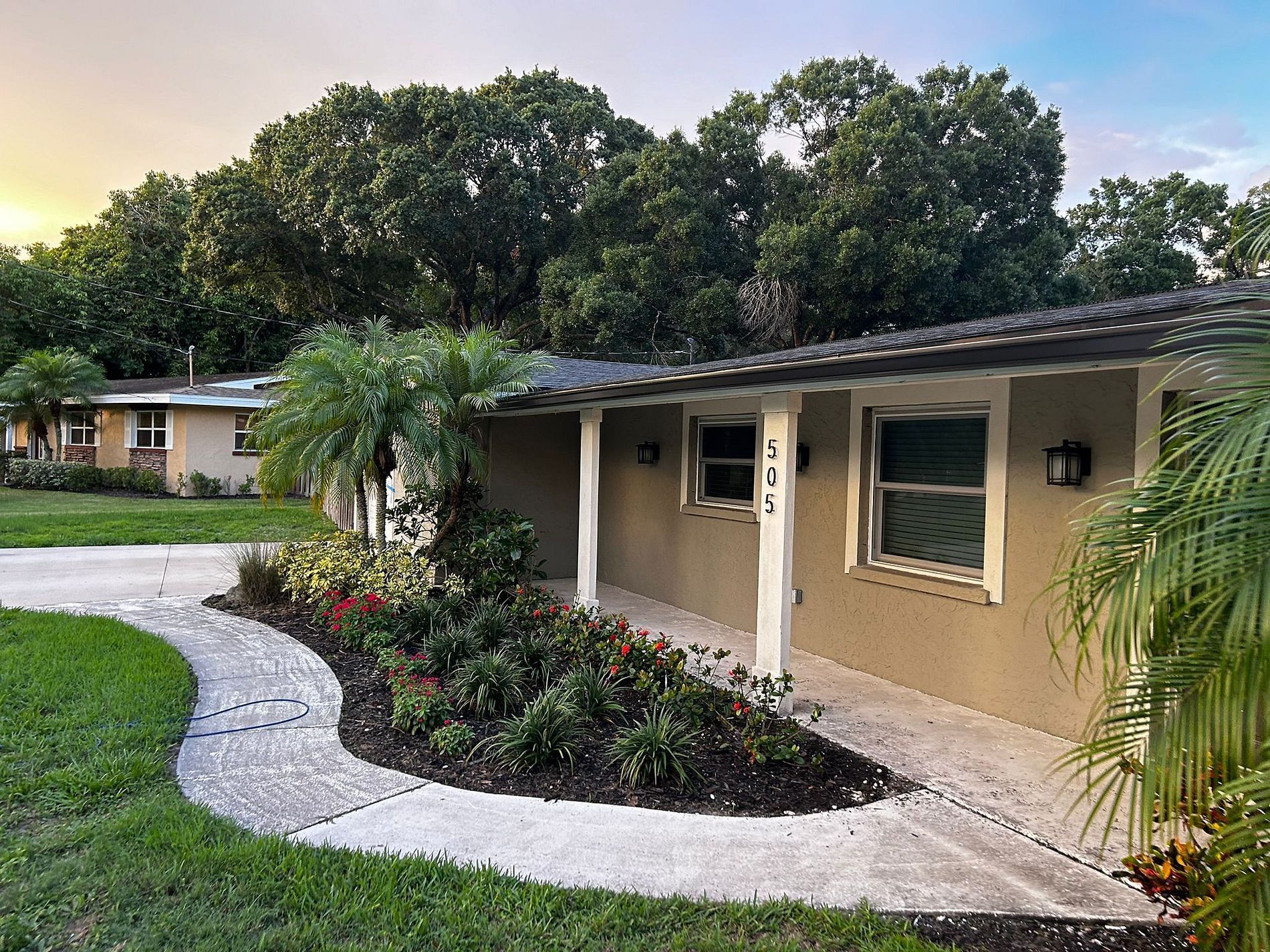
When Hurricane Ian struck Florida, it became one of the most powerful storms to ever hit the state. Winds howled, rain pounded, and neighborhoods braced for impact. While many homes across the region suffered devastating damage, something incredible stood out to us at Allstate Exteriors: over 200 of our roofs stood strong through the storm. That’s not just luck—that’s the result of combining top-of-the-line materials with quality craftsmanship. The Power of Owens Corning TruDefinition® Duration Shingles When the storm put homes to the test, the roofs built with Owens Corning TruDefinition® Duration Shingles proved why they’re trusted nationwide. Designed with SureNail® Technology, these shingles lock in place with gripping power that can withstand hurricane-force winds. Their durability and design make them one of the toughest defenses a homeowner can have when storms roll in off the coast. But shingles alone don’t win the battle against a hurricane. Installation makes all the difference. Craftsmanship That Goes Beyond the Surface At Allstate Exteriors, we don’t cut corners. Every nail, every shingle, every seam is carefully placed with precision and care. Why? Because we know that when the weather turns dangerous, families are relying on us to keep them safe. When Hurricane Ian arrived, that dedication showed. Roof after roof we installed stayed intact, shielding homeowners from the worst of the storm. Over 200 homes protected—200 families with peace of mind. That’s what we call results. More Than a Roof: A Promise of Protection A roof is more than just a structure on top of your home—it’s protection, security, and peace of mind. It’s what lets families rest easy at night, even when the wind howls outside. Knowing that our work helped protect so many families during one of Florida’s worst hurricanes is exactly why we do what we do. Why Homeowners Trust Allstate Exteriors Choosing a roofing company isn’t just about finding someone who can “get the job done.” It’s about finding a partner you can trust with your home, your family, and your future. Homeowners choose us because: We’re an Owens Corning Platinum Preferred Contractor, a title less than 1% of roofers nationwide earn. We’re family-owned and operated, which means we treat every home like it’s our own. We’ve earned thousands of 5-star reviews from happy homeowners across Ohio and Florida. We’re A+ rated with the BBB, recognized for our integrity, reliability, and commitment to excellence. Ready to Protect Your Home Before the Next Storm? If you want a roof that can stand up to whatever nature throws at it, trust the company that has already helped hundreds of families weather the storm. 📞 Call Allstate Exteriors today for your free inspection . Let’s make sure your home is ready for the next season, no matter what comes your way.
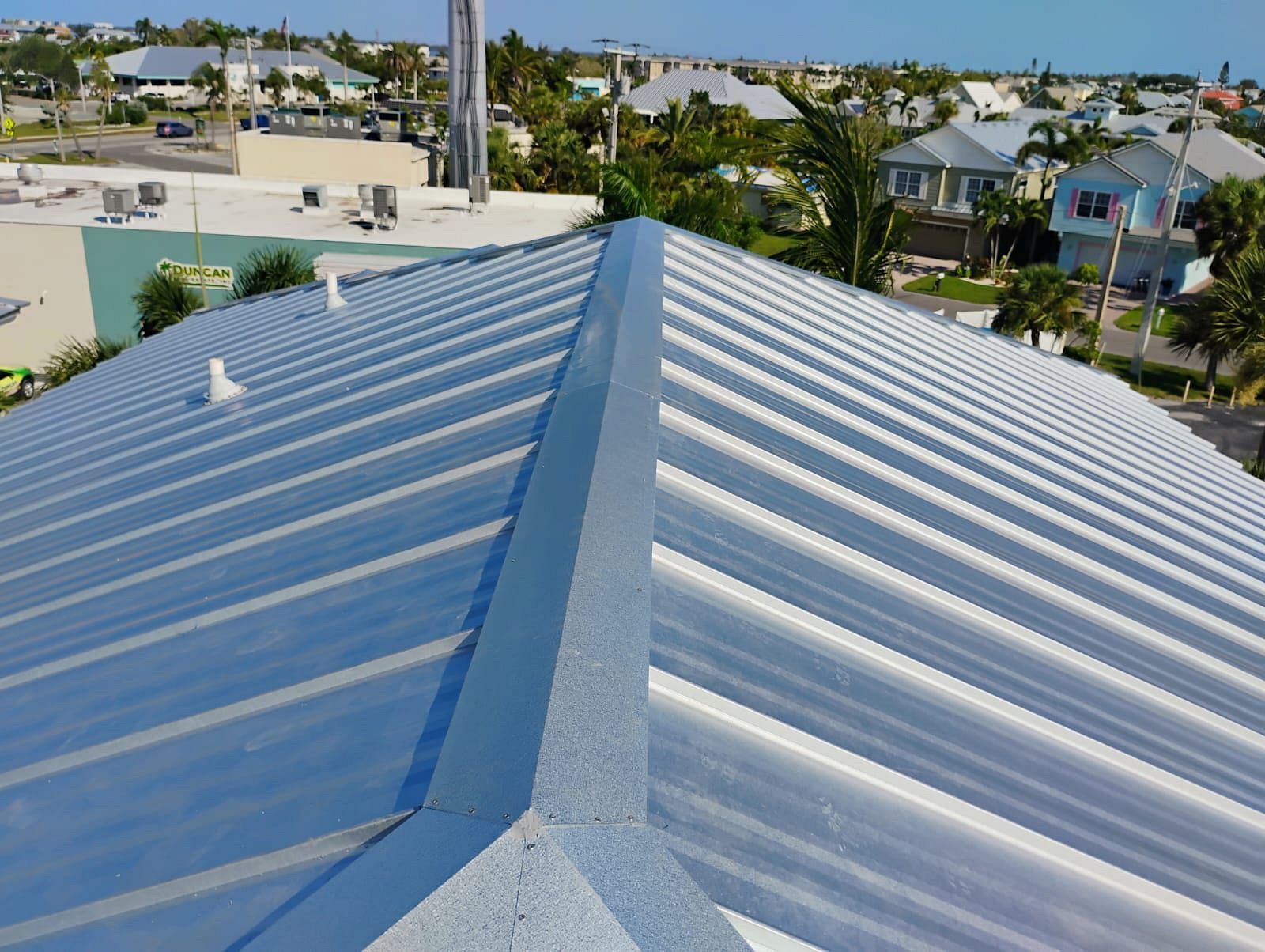
Your roof is more than just shingles and nails. It’s the crown of your home, the first line of defense against Mother Nature, and one of the biggest style statements your house will ever make. Whether you’re dealing with Florida’s blazing sunshine, Ohio’s snowy winters, or just want to boost your curb appeal, choosing the right roof type is one of the smartest investments you’ll ever make. But with so many materials out there, how do you know which one is right for your home, your climate, and your budget? Let’s break down the most popular roof types, their strengths, and where they shine brightest. Asphalt Shingles: The Classic All-American Choice Asphalt shingles are like the jeans of the roofing world — they never go out of style. Affordable, versatile, and available in nearly every color you can imagine, it’s no wonder most homes in America wear them proudly. Why homeowners love them: They’re easy to install, budget-friendly, and can be upgraded to architectural styles that look elegant without breaking the bank. Best for climates: Almost anywhere. They handle Midwest winters well and perform in warmer regions too, though extreme heat can shorten their lifespan. Perfect for: Homeowners who want a reliable roof without the luxury price tag. Metal Roofing: Sleek, Strong, and Energy Smart If asphalt shingles are jeans, metal roofing is the tailored suit — sharp, modern, and built to last. Why homeowners love it: Metal reflects heat like a champ, keeping energy bills lower. Snow and rain slide right off, and hurricane-force winds? No problem. Best for climates: Hot Florida summers, snowy Ohio winters, and windy coastal regions. Basically, if the weather throws a punch, metal can take it. Perfect for: Homeowners who want long-lasting performance (40–70 years!) and a roof that doubles as a style upgrade Clay and Concrete Tile: The Timeless Beauty Picture a villa on the coast of Spain or a home bathed in golden sunlight — chances are, it’s topped with clay or concrete tiles. These roofs bring old-world charm with modern staying power. Why homeowners love them: They can last a century, resist fire, and instantly elevate a home’s curb appeal. Best for climates: Hot, dry, or coastal areas where their durability truly shines. Perfect for: Homeowners who want a touch of Mediterranean elegance — and are ready for the stronger framing these heavy tiles require. Slate Roofing: Nature’s Luxury Upgrade Slate is the diamond of roofing materials. Quarried stone, hand-cut, and nothing short of breathtaking. Why homeowners love it: Its natural beauty is unmatched, and it can outlive several generations of homeowners (we’re talking 100+ years). Best for climates: Cooler, wetter regions where longevity is prized. Perfect for: Homeowners who want the best of the best — and don’t mind paying for craftsmanship that lasts a lifetime. Wood Shingles & Shakes: Rustic Warmth with Character There’s something undeniably charming about a wood roof. From quaint cottages to stately homes, wood shingles and shakes give off warmth and authenticity. Why homeowners love them: They’re natural insulators and offer a look that synthetic materials can only imitate. Best for climates: Dry, moderate climates where moisture and humidity aren’t constant battles. Perfect for: Homeowners who want that rustic, storybook feel — and don’t mind a little extra TLC to keep them looking their best. Synthetic Roofing: The Best of Both Worlds Want the look of slate or wood without the weight, cost, or upkeep? Enter synthetic roofing — a modern material designed to mimic premium options while being easier to live with. Why homeowners love it: It’s lighter, more affordable, and built to stand up to weather without the weaknesses of natural products. Best for climates: Pretty much all of them — it’s a versatile, low-maintenance choice. Perfect for: Homeowners who want high style, lower stress, and long-lasting protection. Flat Roofing: Practical and Modern For homes with low slopes or modern architecture, flat roofing systems (like TPO, EPDM, or modified bitumen) get the job done. Why homeowners love them: They’re affordable, efficient, and open up opportunities for rooftop patios or gardens. Best for climates: Dry regions are best, though proper drainage systems can make them work in wetter areas too. Perfect for: Modern homes, additions, or commercial buildings. Matching Roofs to Climates & Needs Hot & Sunny (Florida): Metal, clay, or concrete tiles keep homes cool and resist hurricane winds. Cold & Snowy (Ohio & Midwest): Metal and slate roofs shed snow and stand strong through freeze-thaw cycles. Coastal & Humid: Metal or tile resist moisture, salt air, and high winds. Budget-Friendly: Asphalt shingles are reliable and practical. Luxury & Longevity: Slate or premium synthetics are worth the investment. Final Thoughts Choosing a roof isn’t just about picking a material — it’s about picking peace of mind. The right roof protects your home, boosts your curb appeal, and saves you money in the long run. At Allstate Exteriors, we’ve seen firsthand how the right choice makes all the difference. From storm-ready roofs in Cape Coral to snow-shedding systems in Columbus, we’ll help you find the perfect fit for your home and lifestyle. SCHEDULE YOUR FREE ESTIMATE!
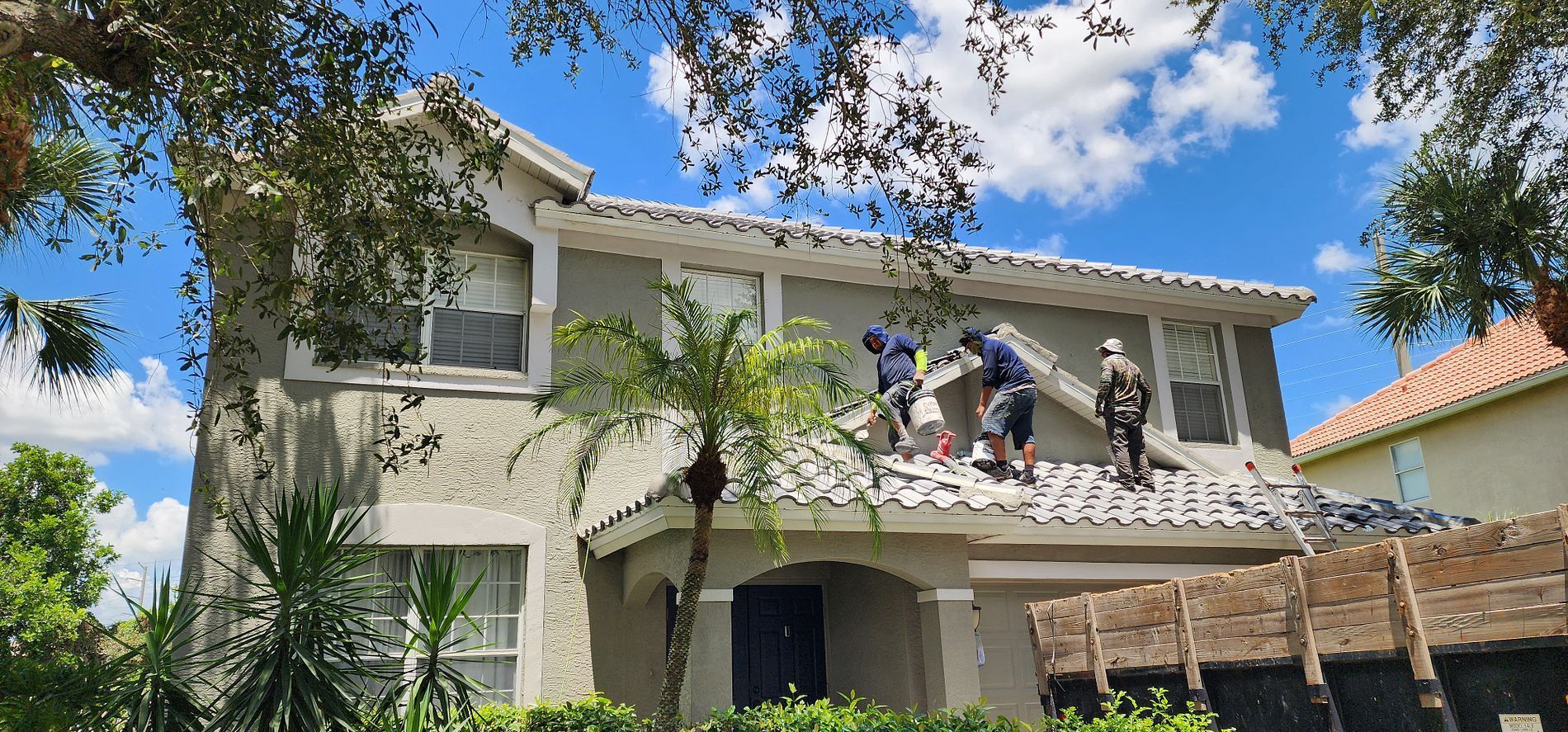
Living in Florida comes with a lot of perks—beautiful beaches, endless sunshine, and year-round warm weather. But it also comes with one not-so-glamorous reality: our homes take a beating. Between hurricane season, tropical downpours, and blazing hot summers, Florida roofs face challenges that most other states never have to think about. That’s exactly why Florida building codes are so strict when it comes to roofing. If you’ve ever wondered why roof replacements in Florida seem more detailed or why your contractor talks so much about inspections and “meeting code”- this blog will walk you through what those codes mean, how they affect your roof, and why they’re actually a good thing for homeowners. Why Florida Building Codes Matter for Your Roof Here’s the truth: in a state where storms can whip through at 150+ mph, the little details make all the difference. Florida’s building codes were designed after decades of lessons learned from hurricanes like Andrew, Charley, Irma, and Ian. Each time Mother Nature tested us, the codes were updated to make homes stronger and safer. So, what does that mean for your roof? In short, it means: Your roof is designed to stay put in hurricane-force winds. Water barriers and underlayments are in place to stop leaks before they start. Materials have to be tough enough to handle both sun and salt air. Your insurance company may even reward you for having a roof that meets today’s code. Think of Florida building codes as a built-in guarantee that your roof isn’t just “good enough”—it’s ready for whatever our wild weather throws at it. Key Florida Roofing Code Requirements The Florida Building Code (FBC) is updated every three years, and with each update, the standards get tighter. Here are a few of the most important roofing rules that protect your home: 1. Wind Resistance That Matches Your Zone Florida is divided into wind zones, with coastal areas like Cape Coral, Miami, and Naples requiring the highest protection. Roofs here must withstand winds up to 180 mph. That’s no small feat, and it’s why proper fastening and installation are non-negotiable. 2. Stronger Roof Decking & Fasteners It’s not just about shingles. The wood decking under your roof must be securely nailed down using special fasteners. In many homes, hurricane clips or straps are required to anchor the roof structure to your walls, giving your entire house more stability. 3. Secondary Water Barrier Protection Imagine your shingles get torn off in a storm—what then? That’s where the secondary water barrier comes in. This extra layer under your roofing material helps keep rain from seeping into your attic and causing thousands of dollars in damage. 4. Tested & Approved Roofing Materials Not every shingle or tile is Florida-approved. All roofing materials must pass tests for wind uplift, impact resistance, and durability. This ensures you’re not wasting money on something that won’t survive the climate. 5. Licensed Contractors Only Florida codes require that roofing work be done by licensed contractors who know the ins and outs of compliance. This protects you from fly-by-night “storm chasers” who often cut corners after a big hurricane. What This Means for Roof Replacements Here’s where it gets real for homeowners: if your roof is more than 15–20 years old, chances are it was installed under older codes. When you go to replace it, your new roof has to meet today’s stricter Florida Building Code standards. That might mean: Using upgraded materials that cost a little more but last a lot longer. Re-fastening roof decking to meet current nail spacing rules. Installing water barriers or hurricane straps that weren’t required decades ago. Yes, the upfront investment can be higher—but the payoff is worth it. Not only do you get peace of mind knowing your roof is storm-ready, but many insurance companies also offer discounts for homes with code-compliant roofs. That means long-term savings. Why Homeowners Should Care Let’s be honest: no one loves hearing about “building codes.” It sounds technical, boring, and like one more hoop to jump through. But when it comes to your roof, those codes are there to protect your biggest investment—your home. A roof that meets Florida building codes: Keeps your family safe during hurricane season. Protects your belongings from leaks and water damage. Boosts your home’s value if you ever decide to sell. Helps lower insurance premiums in many cases. And here’s the bottom line: cutting corners might save you a few dollars now, but it could cost you thousands if your roof fails an inspection or worse—fails during a storm. At Allstate Exteriors, we’ve built our reputation on doing things the right way—not the easy way. Our team knows Florida building codes inside and out, and we make sure every roof we install is designed to stand the test of time (and weather). From Cape Coral to Orlando to Palm Bay, our crews bring local knowledge, licensed expertise, and top-quality materials to every project. When you work with us, you don’t just get a new roof. You get confidence that your home is protected, inspected, and ready for the Florida elements. SCHEDULE YOUR FREE ESTIMATE!
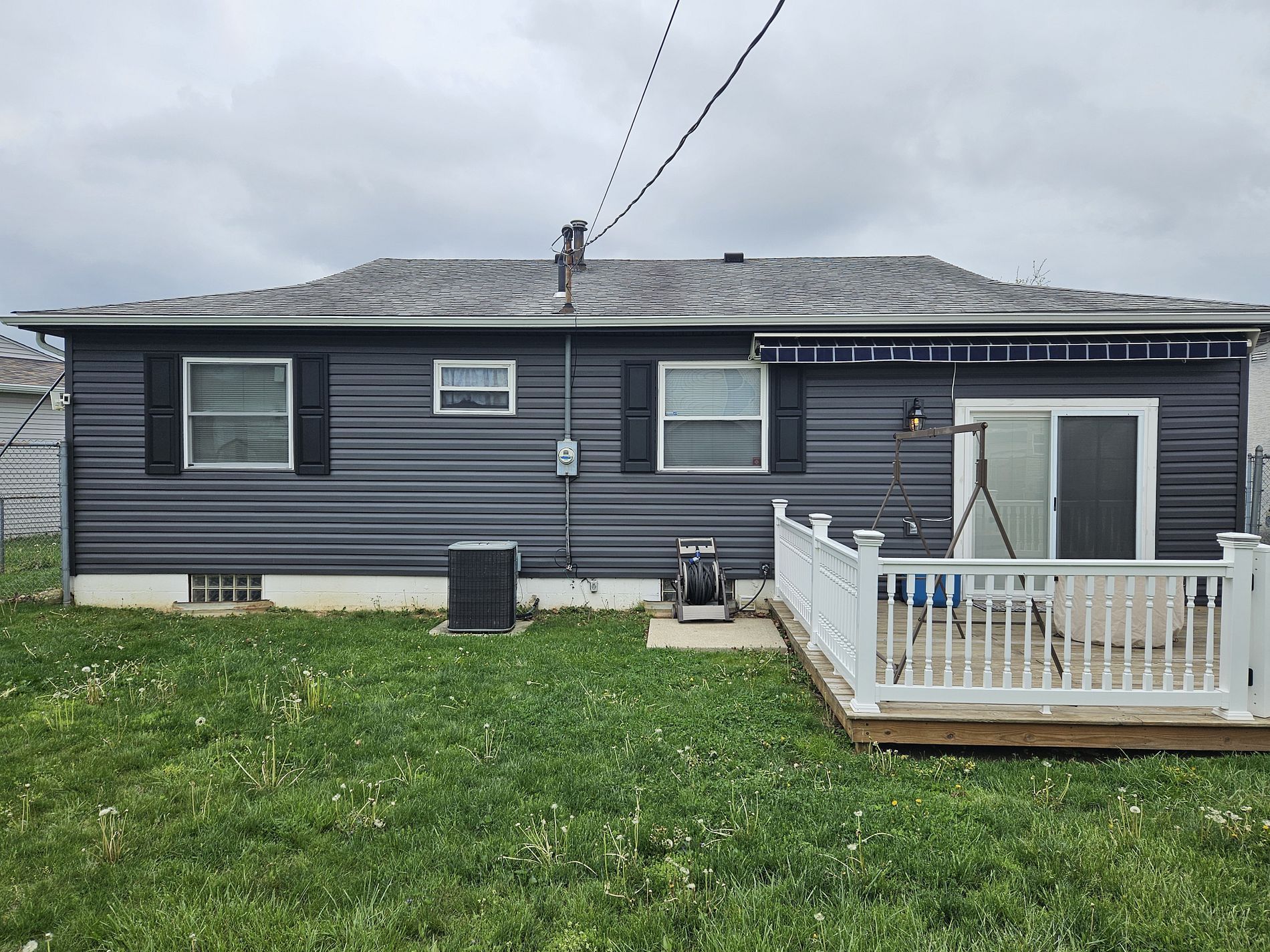
Your home is more than just four walls—it’s where memories are made, where family gathers, and where you feel safe at the end of the day. At Allstate Exteriors, we believe your siding should reflect that same comfort and protection. Replacing your siding isn’t just about giving your home a facelift—it’s about strengthening its defenses against the elements, boosting energy efficiency, and adding curb appeal that makes you smile every time you pull into the driveway. We’ve been helping homeowners for over 25 years, and our siding replacement process is designed with one goal in mind: to make the experience easy, enjoyable, and stress-free. Here’s what it looks like when you partner with us. Step 1: Friendly Consultation & Honest Inspection Every project begins with a conversation. One of our experienced team members will come out to your home for a free inspection. We take the time to listen to your goals, answer your questions, and evaluate your current siding. Our promise? Straightforward, honest feedback—no gimmicks, no pushy sales tactics. Just the information you need to make the best decision for your home. Step 2: Picking the Perfect Look This is where the fun begins! Siding is one of the biggest ways to transform the look of your home, so we walk you through different options—whether it’s classic vinyl, durable fiber cement, or energy-saving insulated siding. With so many colors, textures, and finishes available, you’ll get to create a look that truly reflects your style. Think of this step as designing a fresh new “outfit” for your house—it’s a chance to show off its personality while adding lasting value. Step 3: Clear Proposal, No Surprises We know home improvement can feel overwhelming, which is why we keep everything transparent and simple. After your inspection and design choices, we’ll provide a detailed proposal with costs, timelines, and exactly what’s included. You’ll also get photos and videos of the areas we’ll be working on, so you can see exactly what we see. Step 4: Preparing Your Home with Care Before installation begins, we treat your home like it’s our own. Landscaping, walkways, and outdoor spaces are carefully protected. We remove old siding and check the structure underneath to make sure your home’s foundation is solid. If we find any surprises, we address them right away so your new siding is built to last. Step 5: Expert Installation That Lasts This is the exciting part—watching your home transform before your eyes. Our skilled crews work with precision, installing each panel so it fits perfectly, seals tight, and looks stunning from every angle. We don’t cut corners—ever. The details matter, and our installation process ensures your siding not only looks beautiful but also protects your home for decades to come. Step 6: Spotless Cleanup & Walkthrough When the last piece is in place, we don’t just pack up and leave. Our crews do a complete cleanup—removing every scrap, nail, and piece of debris—so your yard looks as fresh as your new siding. Then, we’ll walk through the project with you, step by step, making sure everything is exactly as promised. Step 7: Standing Beside You for Years to Come One of the biggest things that sets us apart is our commitment long after the job is done. With strong warranties and a team that’s always a phone call away, you’ll have peace of mind knowing we’re here if you ever need us. We care about our customers like family, and that means we’ll always have your back. Why Homeowners Love Working with Us Family-owned values, treating every home like it’s our own 25+ years of trusted experience Owens Corning Platinum Preferred Contractor status BBB A+ Rating and countless happy customers When you choose Allstate Exteriors for your siding replacement, you’re not just getting new siding—you’re getting a full transformation, backed by a team who cares about doing it right. SCHEDULE YOUR FREE ESTIMATE!
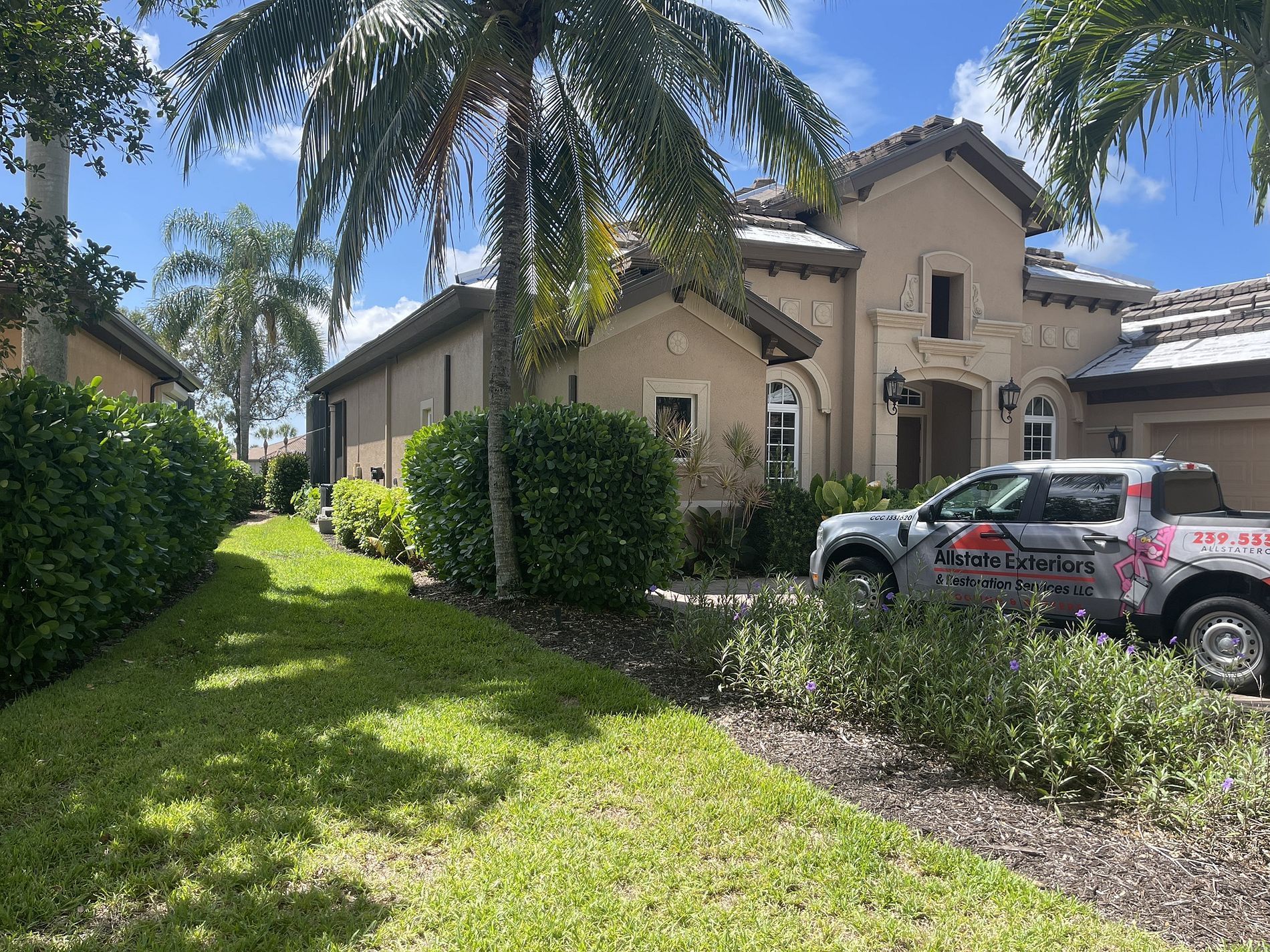
When you live in Florida, hurricane season isn’t a question of if—it’s a question of when. Homeowners often prepare by stocking up on supplies, securing outdoor furniture, and checking emergency kits. But one of the most important defenses against hurricane damage is something you can’t pick up at the store: the hidden hardware that holds your roof in place. Hurricane clips, nails, and fasteners might look small, but in the middle of a storm, they’re the unsung heroes protecting your biggest investment —your home. The Overlooked Heroes of Hurricane Season High winds don’t just blow against your home; they pull upward, trying to lift your roof right off the walls. Without the right reinforcements, even a brand-new roof can be vulnerable. That’s why Florida building codes require hurricane clips and specialized fasteners—to literally tie your home together from the roof to the foundation. Think of these details as the seatbelt for your roof: you may not see it, but when disaster strikes, you’ll be grateful it’s there. What Exactly Are Hurricane Clips? Hurricane clips (also called straps or ties) are heavy-duty metal connectors that link your roof trusses or rafters to the wall structure of your home. Instead of relying on just a few nails, these clips create a reinforced, storm-resistant connection that helps keep your roof anchored in place. In fact, studies have shown that homes with properly installed hurricane clips are far less likely to experience catastrophic roof loss during hurricanes. It’s a small piece of metal with a massive impact. Nails and Fasteners: Tiny Details, Big Protection When it comes to storm-ready roofing, not all nails are created equal. The right fasteners provide stronger hold, resist pull-out, and ensure shingles stay secure even when 100-mph winds are pounding down. Ring-shank nails bite into wood better than smooth nails, locking shingles in place. Longer nails ensure shingles, underlayment, and decking are all securely fastened. Proper placement matters—too few nails or incorrect spacing leaves shingles vulnerable to lift and tear. At Allstate Exteriors, we don’t just “nail it down”—we follow strict Florida codes and manufacturer specifications to make sure every piece of your roof is reinforced where it matters most. Why Homeowners Should Care About the Small Stuff You may never see these clips and nails, but you’ll definitely see the difference they make after a storm. Greater protection: Your roof is less likely to rip away in high winds. Lower insurance premiums: Many insurers offer discounts for wind-mitigation features like hurricane clips. Peace of mind: Instead of wondering, “Will my roof hold?” you can feel confident that your home is secured with the right details in place. Choosing a Contractor Who Pays Attention to Details Here’s the reality: not all roofing contractors treat the “little details” like they matter. But we know that when it comes to protecting homes in Florida, details are everything. At Allstate Exteriors, our crews are trained to install clips, nails, and fasteners with precision, ensuring every home we work on is as hurricane-ready as possible. Because to us, it’s not just about finishing a project—it’s about protecting families, memories, and the place you call home. SCHEDULE YOUR FREE ESTIMATE TODAY!
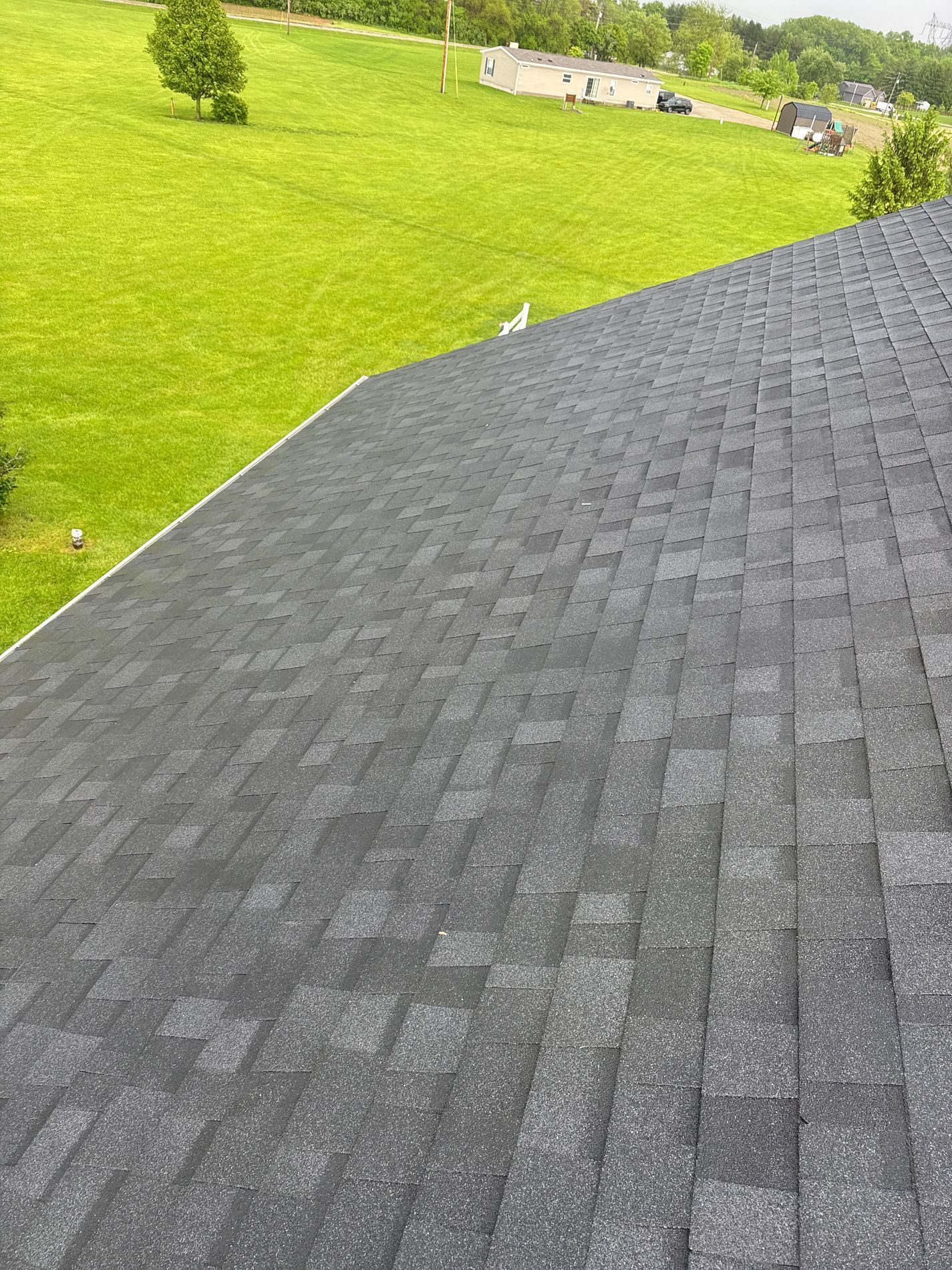
When it comes to protecting your home, the roof is one of the most important investments you’ll ever make. That’s why choosing the right roofing contractor matters. At Allstate Exteriors, we’re proud to be connected to the National Roofing Contractors Association (NRCA), one of the most respected organizations in the entire construction industry. But what does that mean for you as a homeowner? Let’s dive into why being part of the NRCA sets roofing companies apart and how it directly benefits the families we serve. Setting the Standard for Excellence The NRCA isn’t just another trade group—it’s the gold standard for roofing professionals nationwide. Membership represents a commitment to integrity, craftsmanship, and accountability. When a contractor is part of the NRCA, it shows they care about more than just “getting the job done.” They care about getting it done right—from the smallest repair to a full roof replacement. Always Learning, Always Improving Roofing materials and technology are constantly evolving. From impact-resistant shingles to energy-efficient underlayments, the industry looks completely different than it did even 10 years ago. NRCA members have access to cutting-edge training, certification programs, and education that keep them sharp and current. For homeowners, this means peace of mind knowing your contractor is never “stuck in the past”—they’re bringing today’s best practices, products, and techniques straight to your home. Advocacy That Protects You The NRCA plays a big role in shaping building codes, safety requirements, and roofing standards across the country. That means when you choose a contractor affiliated with the NRCA, you’re choosing a company that is part of a larger voice fighting for quality, safety, and fairness in the roofing industry. Simply put—it’s not just about us, it’s about protecting you and your home. Backed by a Nationwide Network One of the most powerful aspects of being part of the NRCA is community. Members are connected to thousands of other roofing professionals, sharing resources, insights, and best practices. This collective knowledge means you’re not just hiring one local contractor—you’re benefiting from the expertise of an entire national network of roofing leaders. Why It Matters to Homeowners At the end of the day, being part of the NRCA is about trust. It means your contractor is serious about their craft, values accountability, and is dedicated to constant improvement. When you invite us to work on your home, you can feel confident knowing you’re working with a company that’s recognized at the highest level of our industry. At Allstate Exteriors, we’re more than just roofers—we’re homeowners too. We know how important it is to feel safe under your own roof, and we take that responsibility seriously. That’s why we’re proud to be part of the NRCA and proud to bring that level of commitment to every job we do. SCHEDULE YOUR FREE ESTIMATE!

Your roof is more than just shingles nailed to wood—it’s your home’s first line of defense and one of the biggest factors in curb appeal. With so many shingle brands out there, it can feel overwhelming trying to figure out which one truly delivers. At Allstate Exteriors, we’ve worked with them all, and that’s why we confidently stand behind Owens Corning shingles. They aren’t just another option on the shelf—they’re the gold standard in roofing. Let’s break down what makes Owens Corning stand out from the rest. Built Strong Where It Matters Most Not all shingles are created equal. While other brands may look similar at first glance, the difference is in the details. Owens Corning shingles feature SureNail® Technology, a one-of-a-kind reinforced strip in the nailing zone that locks each shingle into place. Think of it as a seatbelt for your roof—it holds tight when the wind tries to rip it loose. With wind ratings up to 130 mph, you can rest easy knowing your roof is built to handle even the nastiest storms Mother Nature can throw your way. Beauty That Lasts A roof shouldn’t just protect your home—it should make it shine. Owens Corning shingles use TruDefinition® Color Technology, which delivers bold, vibrant, dimensional colors that don’t fade into the background. Whether you want a classic look or something more modern and eye-catching, there’s a style to fit your home perfectly. Many competing brands simply can’t match this level of color depth and long-lasting vibrancy. A Warranty You Can Actually Trust We’ve seen it time and time again—other shingles come with warranties that sound good, but when push comes to shove, the fine print leaves homeowners unprotected. Owens Corning does things differently. Their warranties are some of the most comprehensive in the industry, and when you work with a Platinum Preferred Contractor like Allstate Exteriors, you get even greater coverage. That means your roof isn’t just covered for materials—it’s covered for the workmanship too. That’s real peace of mind. More Than Shingles: A Complete Roofing System Here’s another reason Owens Corning rises above the rest: they don’t just sell shingles. They’ve engineered the Total Protection Roofing System®—a full suite of products designed to work together seamlessly. From the underlayment that keeps moisture out to the ventilation that lets your home breathe, every piece is designed to maximize performance. Other brands often take a piecemeal approach, which can leave your roof vulnerable. Long-Term Value That Pays for Itself We understand that price is always a factor when choosing shingles. While some competitor products may seem less expensive upfront, they often cost homeowners more down the road due to repairs, replacements, and shorter lifespans. Owens Corning shingles are built to last and backed by strong warranties, meaning you’ll save money—and stress—in the long run. Investing in Owens Corning is really investing in your home’s future. Why We Recommend Owens Corning Every Time At Allstate Exteriors, our mission is to protect your home like it’s our own. That’s why we choose Owens Corning. Their innovation, beauty, strength, and warranty protection give our customers something no other shingle brand can match: confidence. When you choose Allstate Exteriors, you’re choosing: ✅ Superior Owens Corning products ✅ Professional installation from a Platinum Preferred Contractor ✅ A roof that’s built to look great and last for decades Don’t Settle for “Any Other Shingle” Your home deserves the best—and with Owens Corning shingles installed by Allstate Exteriors, that’s exactly what you’ll get. Contact us today for a free consultation and experience the Owens Corning difference for yourself.
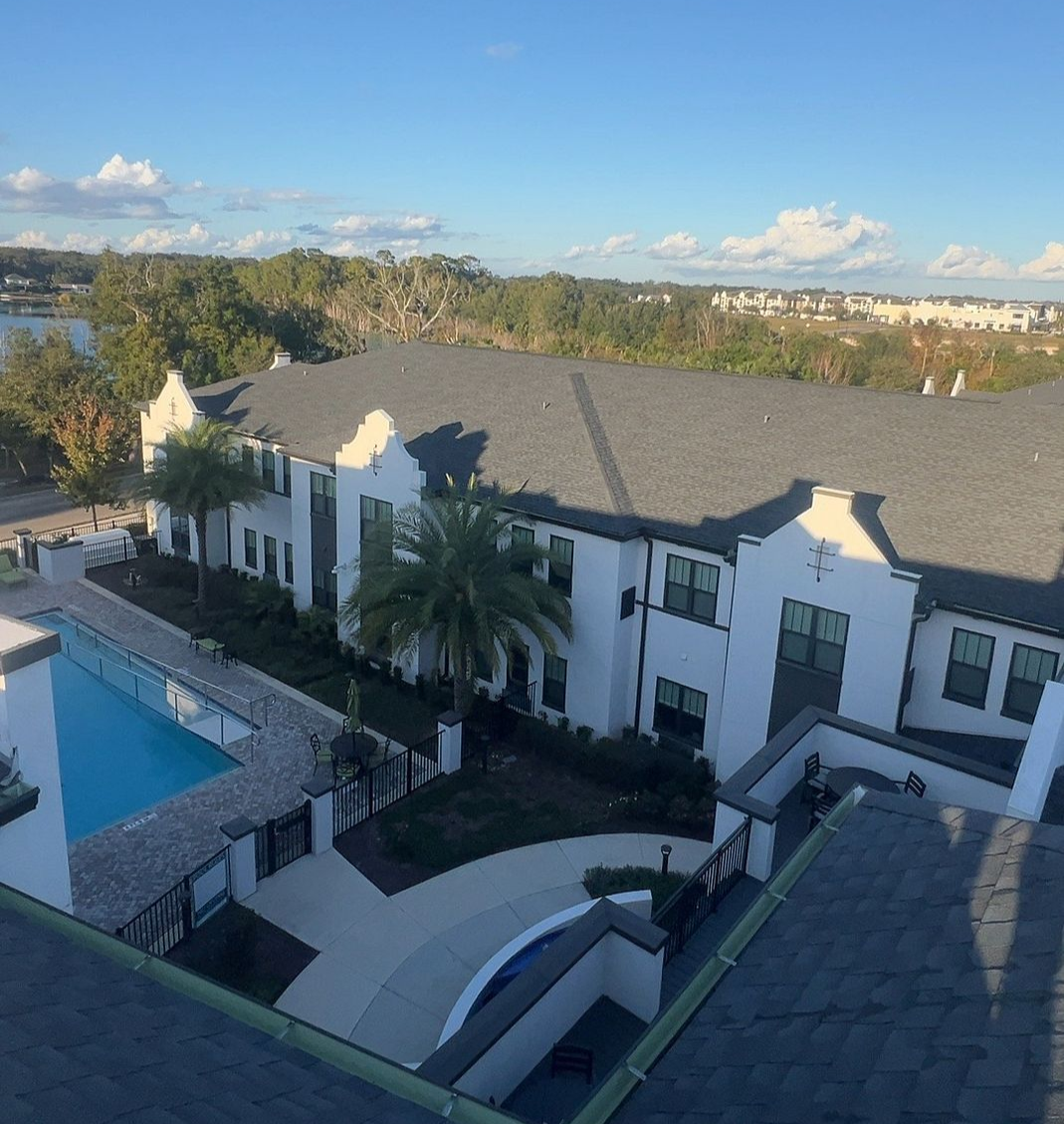
Replacing your roof is one of the biggest home improvement projects you’ll take on as a homeowner. Whether you’re dealing with storm damage, aging shingles, or simply upgrading to improve your home’s value, knowing what to expect can make the process smoother and less stressful. If you live in Orlando, where heavy rains, hurricanes, and sun exposure take a toll on roofs, being prepared is especially important. Step 1: Roof Inspection & Estimate Every roof replacement begins with a thorough inspection. A professional roofing contractor will: Check for leaks, water stains, and structural issues Assess the condition of shingles, underlayment, and decking Look for storm damage, especially from hail and high winds After the inspection, you’ll receive a written estimate outlining the scope of work, materials, and pricing. Make sure your contractor explains the different options available—whether that’s asphalt shingles, tile, or energy-efficient roofing systems designed for Florida’s climate. Step 2: Choosing Materials In Orlando, roofing materials need to hold up against intense UV rays, humidity, and hurricane-force winds. Popular options include: Architectural Asphalt Shingles – Affordable, durable, and stylish Tile Roofing – Long-lasting and ideal for Florida homes Metal Roofing – Energy-efficient and highly wind-resistant Your contractor will help you select the right color, style, and material to complement your home while meeting local building codes and HOA requirements. Step 3: Preparing Your Home Before the crew arrives, you’ll want to prepare your property: Move vehicles out of the driveway Protect outdoor furniture, grills, or landscaping Clear fragile items from walls or shelves inside (roof work causes vibrations) A professional contractor will also obtain the necessary permits and follow all Orlando building regulations. Step 4: Roof Removal & Installation On installation day, the old roofing materials will be removed and hauled away. The crew will inspect the decking underneath, replacing any rotted or weakened areas. Then, they’ll install underlayment, flashing, and your new roofing material layer by layer to ensure maximum protection. The average roof replacement in Orlando takes 1–3 days, depending on the size of the roof and weather conditions. Step 5: Clean-Up & Final Inspection A quality roofing company won’t leave a mess behind. They’ll use magnetic sweepers to collect nails and debris and walk you through a final inspection to make sure everything meets expectations. Many Orlando homeowners are also offered workmanship warranties and product warranties for peace of mind. Final Thoughts A roof replacement may feel overwhelming, but with the right contractor, it can be a smooth and stress-free experience. If you’re an Orlando homeowner, choosing a company that understands Florida’s climate and building codes is key. At Allstate Exteriors, we’re proud to be Owens Corning Platinum Preferred Contractors, which means we use industry-leading materials and back our work with trusted warranties. Whether you need a full replacement or just want to explore your options, our team is here to guide you every step of the way. 👉 Ready to schedule your free roof inspection in Orlando?
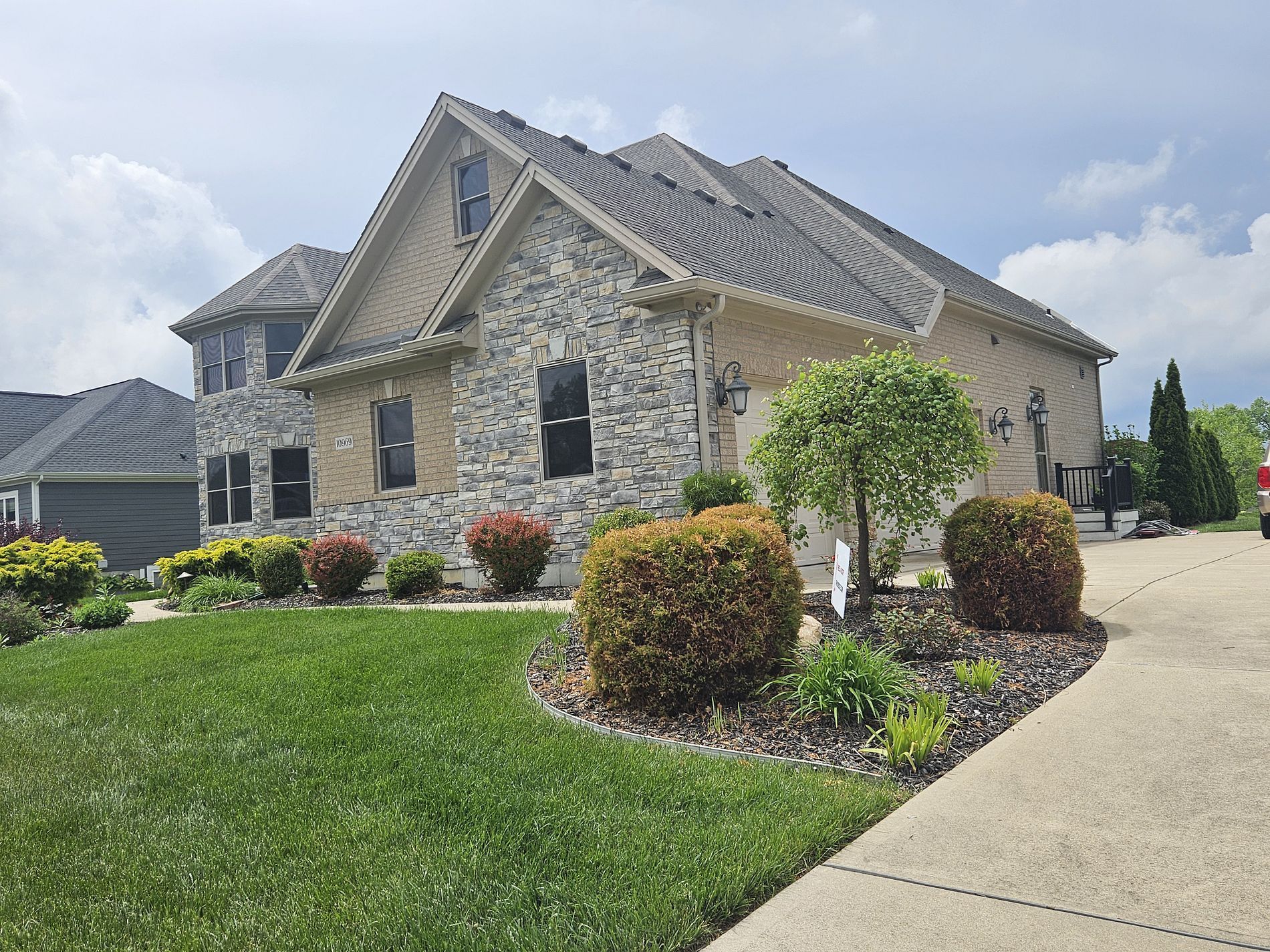
When most homeowners think about boosting the value of their home, they picture trendy kitchen remodels, sparkling new bathrooms, or freshly landscaped yards. While those upgrades are important, there’s one investment that often gets overlooked—yet it has a massive impact on your home’s curb appeal, resale price, and buyer confidence: your roof. At Allstate Exteriors, we’ve seen firsthand how a new roof can transform a property. It’s not just about shingles and nails—it’s about creating peace of mind, protecting your investment, and unlocking the hidden value of your home. 1. First Impressions Start at the Curb The very first thing people notice about your home isn’t your kitchen countertops or living room décor—it’s the exterior. And your roof makes up nearly 40% of what buyers and neighbors see. A roof with missing shingles, visible stains, or sagging lines doesn’t just look tired—it sends a message that the home may not be well maintained. On the other hand, a freshly installed roof immediately elevates your home’s curb appeal. It frames your siding, accents your landscaping, and makes the entire property look newer and more cared for. When buyers fall in love before they even step inside, you’re already ahead. 2. Buyers Want Peace of Mind For most people, buying a home is the biggest financial decision they’ll ever make. And nothing makes them more nervous than a roof that looks old or questionable. Why? Because it represents one of the largest potential expenses a homeowner can face. A brand-new roof takes that fear off the table. It reassures buyers that the home is move-in ready, free from leaks, and secure for years to come. That peace of mind often leads to faster offers, stronger bids, and smoother closings. 3. Energy Efficiency = Everyday Savings Today’s buyers are smarter than ever, and energy efficiency is top of mind. Modern roofing systems, like Owens Corning Duration shingles , are designed with technology that reflects heat, improves insulation, and lowers energy bills. This means homeowners save money every month—and buyers know it. Highlighting your home’s energy-efficient roof could be the edge that helps you stand out in a crowded market. 4. Warranties Build Buyer Confidence A roof isn’t just an upgrade—it’s an investment. And with a transferable warranty, that investment keeps paying dividends, even when you sell your home. Buyers love knowing that their new purchase is still covered years down the road. At Allstate Exteriors, our Platinum Preferred status with Owens Corning means we can offer some of the strongest warranties in the industry. That added protection is a powerful selling point that sets your home apart from the competition. 5. The ROI Is Better Than You Think According to national studies, a new roof can return 60–70% of its cost in increased home value. But the true return often goes beyond percentages. A strong roof helps you avoid price reductions after inspections, attracts more buyers, and prevents drawn-out negotiations. In short, a new roof isn’t just an expense—it’s an investment that pays you back in value, security, and peace of mind. The Bottom Line Your roof is more than shingles and flashing—it’s the crown of your home, the structure that ties everything together, and one of the biggest factors in how your property is perceived. Whether you’re planning to sell soon or simply want to protect your investment, upgrading your roof is one of the smartest moves you can make. At Allstate Exteriors, we don’t just replace roofs —we help homeowners unlock the true potential of their homes. Our expert team will guide you through color choices, materials, warranties, and financing options to ensure your new roof is both beautiful and built to last. Schedule Your Free Estimate!

When it comes to choosing a contractor for your roof, siding, or gutters, homeowners aren’t just looking for a crew with hammers and nails — they’re looking for a company they can trust with their home. That’s why at Allstate Exteriors, one of the things we’re most proud of is our A+ rating with the Better Business Bureau (BBB). It’s not just a letter grade. An A+ BBB rating is the gold standard in business credibility. It tells homeowners that we’ve built a reputation for doing the right thing, following through on our promises, and putting our customers first. But here’s the real question: what does it actually take to earn — and keep — that A+? What an A+ BBB Rating Really Means The Better Business Bureau exists to give homeowners peace of mind when they’re hiring someone for an important project. An A+ rating means the BBB recognizes us as a business that’s reliable, ethical, and committed to customer satisfaction. But it’s not just about avoiding complaints. It’s about proving, day after day, that we put integrity, accountability, and care at the center of everything we do. How We Earned Our A+ Rating Getting an A+ from the BBB doesn’t happen overnight. It comes from years of consistency, transparency, and hard work. Here’s what it takes: 1. Honesty From the Very Beginning We believe in being upfront. No gimmicks, no “too-good-to-be-true” quotes. When we meet with a homeowner, we take the time to explain the process, break down the costs, and answer every question honestly. 2. Taking Care of Issues the Right Way Let’s face it: no business is perfect. What matters most is how problems are handled when they pop up. The BBB looks closely at whether businesses respond fairly to customer concerns. For us, that means if something isn’t right, we fix it — quickly, fairly, and respectfully. 3. Putting People Before Projects At Allstate Exteriors, we don’t see a roof, siding, or gutters — we see the family inside the home. That perspective changes everything. Our team goes out of their way to make the process smooth and stress-free, because we know home improvement can feel overwhelming. 4. Doing Things by the Book (and Then Some) Another big factor in an A+ rating is compliance. We don’t cut corners, and we don’t “just get by.” Every roof, every siding project, every gutter installation is done according to manufacturer guidelines, building codes, and best practices. That protects your home, your warranty, and your investment. 5. Years of Proven Commitment An A+ isn’t just about one good project — it’s about consistency over time. With years of experience serving homeowners in Ohio and Florida, we’ve built a reputation that shows we’ll be here tomorrow, next year, and ten years down the road. Why It Matters to You An A+ BBB rating means when you hire us, you’re working with a company that has a proven record of: Standing behind our work. Treating homeowners with respect. Following through on our promises. Putting integrity above shortcuts. In other words, you don’t have to wonder if you picked the right contractor — you’ll know it. Earning an A+ rating with the Better Business Bureau isn’t easy. And that’s exactly why it means so much. It’s a reflection of our core values: care about others, always do the right thing, be a team player, and strive to be our personal best. At Allstate Exteriors, we don’t see our A+ as just a rating. We see it as a responsibility — to every homeowner who trusts us with their biggest investment. Schedule Your Free Estimate!
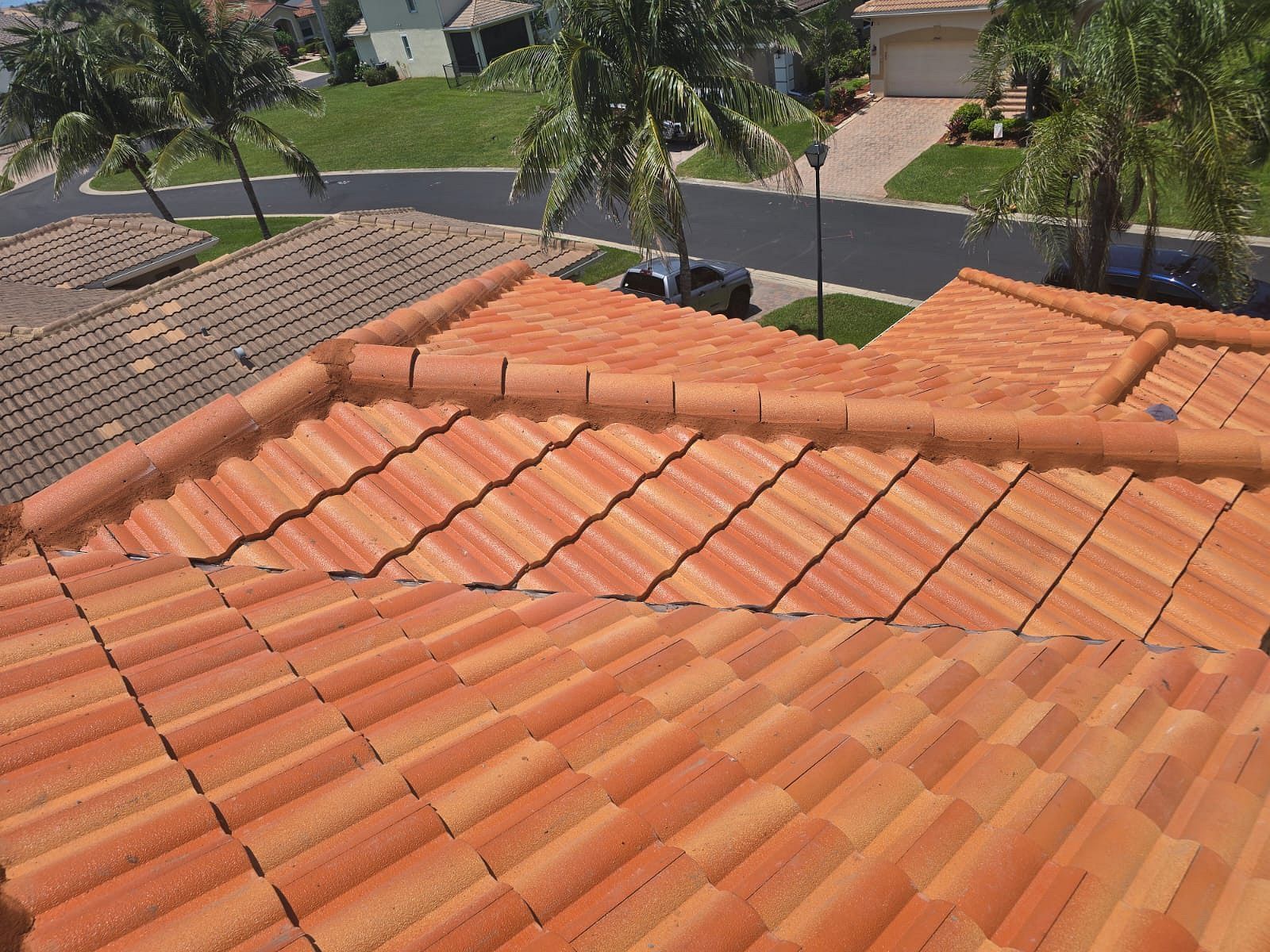
There’s nothing quite like living in Florida. From the year-round sunshine to the beautiful beaches, the lifestyle is second to none. But as every Floridian knows, paradise comes with a price: hurricane season. From June through November, powerful winds and pounding rain put your home to the test. And when it comes to protecting your biggest investment, your roof is your first and most important defense. The wrong roof can leave you with leaks, damage, and costly repairs. The right roof, however, can give you peace of mind — even when the weather outside looks like chaos. So, which roofing materials stand up best to Florida’s extreme climate? Let’s take a closer look at the top hurricane-resistant options and what makes them ideal for homes in the Sunshine State. Metal Roofing: Florida’s Storm Warrior When it comes to strength, metal roofing is hard to beat. Unlike standard shingles that can peel away in strong winds, metal panels interlock tightly, creating a nearly impenetrable shield. Many are rated to withstand winds of 140–160 mph — exactly what you want when a Category 4 hurricane is bearing down. But it’s not just wind resistance that makes metal roofing a Florida favorite. Metal reflects heat from the sun, helping keep your home cooler and lowering those summer electric bills (a big deal when your A/C is running non-stop). Plus, metal roofs can last 40 to 70 years with proper maintenance, which means most homeowners will never have to replace it again. Best for: Homeowners looking for maximum protection and long-term value. Concrete & Clay Tile: Heavyweight Protection Drive through a Florida neighborhood and you’ll see plenty of tile roofs — and for good reason. Concrete and clay tiles are heavy, which means they’re much harder for hurricane-force winds to lift. That extra weight is a big advantage during storm season. Tiles are also naturally resistant to fire, rot, and insects, all common issues in Florida’s hot, humid climate. When installed correctly with strong underlayment, tile roofs can last 50 years or more, giving you beauty and durability in one package. The tradeoff? Tiles can be brittle if hit by large hail or flying debris. That’s why installation quality matters. A poorly installed tile roof won’t hold up, but one installed to code by a professional roofer is a storm-proof powerhouse. Best for: Homeowners who want a balance of curb appeal and storm resistance. Architectural Asphalt Shingles: Affordable but Tough Not ready to commit to tile or metal? Architectural asphalt shingles have come a long way in recent years. Today, manufacturers produce shingles that are specially designed to resist high winds — some rated for up to 130+ mph. They’re more affordable than tile or metal and available in tons of colors and styles, making them a great choice if you want storm protection without breaking the bank. While they won’t last as long as metal or tile, a properly installed architectural shingle roof can give you 20–30 years of solid protection in Florida’s climate. Best for: Homeowners balancing budget with reliable storm resistance. Flat Roof Systems: Coastal & Modern Homes Florida also has many flat and low-slope roofs, especially in coastal communities and modern-style homes. These roofs require different systems than pitched roofs. The most durable options include: TPO (Thermoplastic Polyolefin): Highly reflective, energy-efficient, and resistant to UV damage. Modified Bitumen: Flexible and tough, able to handle both heat and storms. EPDM Rubber Roofing: Long-lasting and excellent at keeping water out. Flat roof systems don’t always get as much attention, but when installed correctly, they can be just as hurricane-resistant as other roofing types. Extra Features That Make a Big Difference Roofing material is only part of the equation. Florida homeowners should also consider: Hurricane Straps & Fasteners: Keep roofing materials secured under extreme wind uplift. Waterproof Underlayment: Creates a backup barrier to keep wind-driven rain out. Proper Ventilation: Helps reduce pressure buildup inside your attic during storms. These upgrades may not be visible from the outside, but they make all the difference when the weather turns ugly. The Bottom Line: Choose a Roof That Can Weather the Storm In Florida, your roof isn’t just about looks — it’s about survival. Every year, homeowners face the same question: Will my roof hold up if a major storm hits? Choosing the right roofing material now means fewer worries, fewer repairs, and far less stress when hurricane season rolls around. ✅ Metal for unmatched strength and efficiency. ✅ Tile for beauty and heavyweight protection. ✅ Architectural shingles for affordability and resilience. ✅ Flat roof systems for coastal and modern homes. Schedule Your Free Estimate!
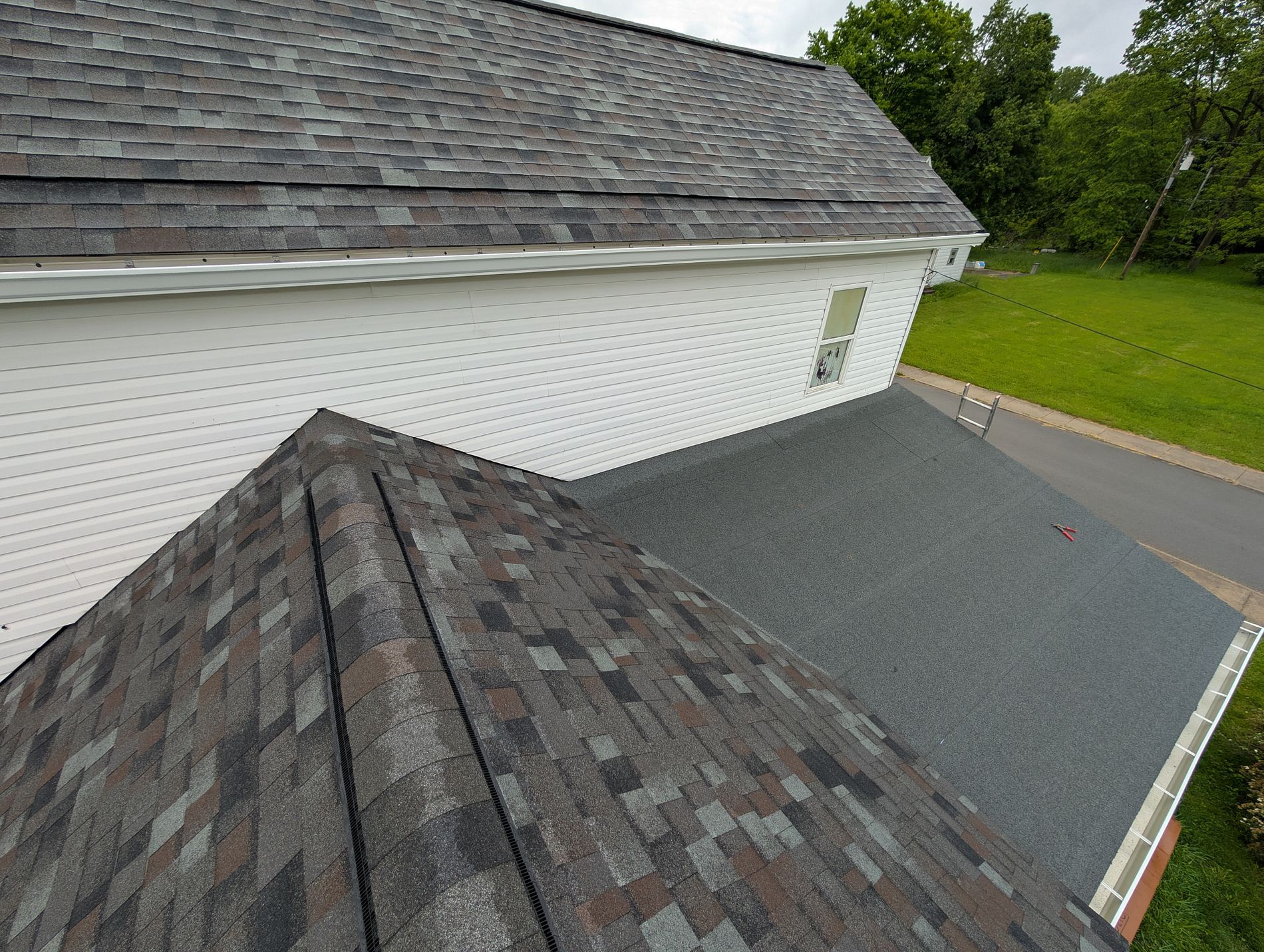
When it comes time to replace your roof , you want answers fast — especially about price. That’s why so many online tools and contractors advertise quick satellite roof estimates. They sound convenient: type in your address, and get an instant number without anyone ever stepping foot on your property. But here’s the truth: satellite estimates are rarely accurate. In fact, relying on them can lead to bigger headaches and more money spent in the long run. At Allstate Exteriors, we’ve seen it time and time again — homeowners who trusted a satellite number end up frustrated when the final cost is much higher. Here’s why that happens and why an in-person inspection is always the smarter choice. 1. Satellites Can’t See What’s Under the Shingles Satellite tools only measure the surface area of your roof. What they cannot see are the hidden details that make or break your project: Rotten or soft decking Damaged soffits and fascia Rusted nails and flashing Ventilation issues or mold Storm damage that isn’t visible from above These issues are uncovered only when a trained roofer gets on the roof and into the attic. Ignoring them doesn’t save you money — it sets you up for costly surprises later. 2. Pitch and Complexity Are Often Measured Wrong Satellite programs calculate pitch and slope based on averages. But if the system misreads your pitch, the numbers will be off. That means you could be quoted for fewer shingles, less labor, or even the wrong underlayment. By the time the contractor corrects it mid-project, your final bill can be thousands higher than the original “estimate.” 3. Materials and Labor Aren’t One-Size-Fits-All Every roof is unique. Maybe your home needs upgraded ice and water shield, special flashing around chimneys, or additional ventilation to meet today’s codes. Satellite tools don’t account for these custom needs — and they certainly don’t calculate for rising material costs that fluctuate monthly. Only a professional, on-site inspection can give you an estimate that reflects your actual roof. 4. You End Up Paying More in the End While a quick satellite quote may look attractive up front, homeowners usually end up paying more because: Additional work wasn’t included in the “instant” estimate. Change orders pile up once the project starts. You risk improper installation if the contractor never fully inspected the roof beforehand. In the end, the cheapest, fastest estimate is rarely the cheapest project . The Smarter Choice: A Professional, On-Site Inspection At Allstate Exteriors, we believe homeowners deserve accurate, honest estimates the first time. That’s why we always send a trained roofing professional to inspect your home. During an on-site visit, we: Check every layer of your roofing system, not just the shingles. Assess ventilation, decking, gutters, and siding connections. Identify potential issues before they become expensive problems. Provide a detailed, transparent estimate with no hidden costs. That way, you know exactly what to expect before work begins — no surprises, no “add-ons,” no last-minute sticker shock. Final Thoughts Satellite roof estimates may sound convenient, but in reality, they can never replace the accuracy of an in-person inspection. When you choose a contractor who takes the time to inspect your home, you’re not just getting a number — you’re getting peace of mind that the job will be done right, on budget, and built to last. At Allstate Exteriors, we don’t cut corners with technology gimmicks. We build trust the old-fashioned way: by showing up, inspecting thoroughly, and giving you the truth about your home. Schedule a free estimate!

From Your Local Roofing Experts at Allstate Exteriors. If you’ve taken a drive around your neighborhood lately, you’ve probably noticed it — more and more homes across Florida are trading in traditional shingles for sleek, modern metal roofs. And it’s not just a style choice. Metal roofing is quickly becoming the go-to option for Florida homeowners who want lasting protection, energy savings, and curb appeal that turns heads. From handling hurricane winds to keeping homes cooler in the summer heat, a metal roof is one upgrade that checks all the boxes for our unique Florida lifestyle. Here’s why your neighbors might already be making the switch — and why you might want to consider it too. 1. Built for Florida’s Wild Weather Here in the Sunshine State, “a chance of rain” can turn into a full-blown tropical storm in a matter of hours. Your roof has to be ready for hurricane-force winds, pounding rain, and the occasional flying palm frond. A properly installed metal roof can handle wind speeds up to 140–160 mph , depending on the system. And because the panels lock together, there are fewer gaps for wind to get under or for water to sneak through. 💡 Pro Tip: Metal roofs aren’t just tough — they’re also resistant to cracking, curling, and erosion, which means they hold up beautifully year after year, no matter what the weather throws their way. 2. Lasts for Decades (and Then Some) A standard shingle roof might last 15–20 years in Florida’s climate… if you’re lucky. Metal roofing? You’re looking at 40–70 years of protection with minimal maintenance. That means if you invest in a metal roof today, you could be set for the rest of the time you own your home — no more budgeting for another replacement down the road. 3. Keeps Your Home Cooler (and Your Bills Lower) Florida summers are beautiful, but let’s be honest — they’re hot enough to make your air conditioner work overtime. Metal roofs reflect the sun’s rays instead of absorbing them, which helps keep your home cooler naturally. Many homeowners see their cooling costs drop by up to 25% after switching to metal. Pair that with proper attic ventilation, and your roof becomes a built-in partner for your AC. 4. Low-Maintenance Living Between the humidity, salty air near the coast, and daily summer downpours, Florida is tough on roofs. The good news? Metal roofing is naturally resistant to mold, mildew, and rot — the three big enemies of many other roofing materials. Maintenance is a breeze: keep it clean, make sure fasteners are secure, and rinse off salt buildup if you live near the ocean. That’s it. 5. Designed to Look as Good as It Performs Forget the old-school image of plain silver panels. Today’s metal roofs can mimic the look of shingles, wood shake, or even clay tile — with a rainbow of color choices to match your home’s style. Whether you own a Key West cottage, a Spanish-style villa, or a sleek modern build, there’s a metal roofing style that will make your home stand out while giving you the storm protection you need. 6. A Greener Choice for Florida Homes Metal roofing isn’t just strong — it’s sustainable. Many systems contain 25–95% recycled content and are 100% recyclable at the end of their lifespan. For Florida homeowners who care about protecting our beautiful environment, that’s a big bonus. The Bottom Line Between its hurricane resistance, long lifespan, energy efficiency, and gorgeous design options, it’s no wonder metal roofing is quickly becoming Florida’s favorite. It’s the kind of upgrade that’s as smart as it is stylish — built to handle everything from blazing sunshine to the roughest hurricane season. 📞 Call us today to schedule your free estimate!
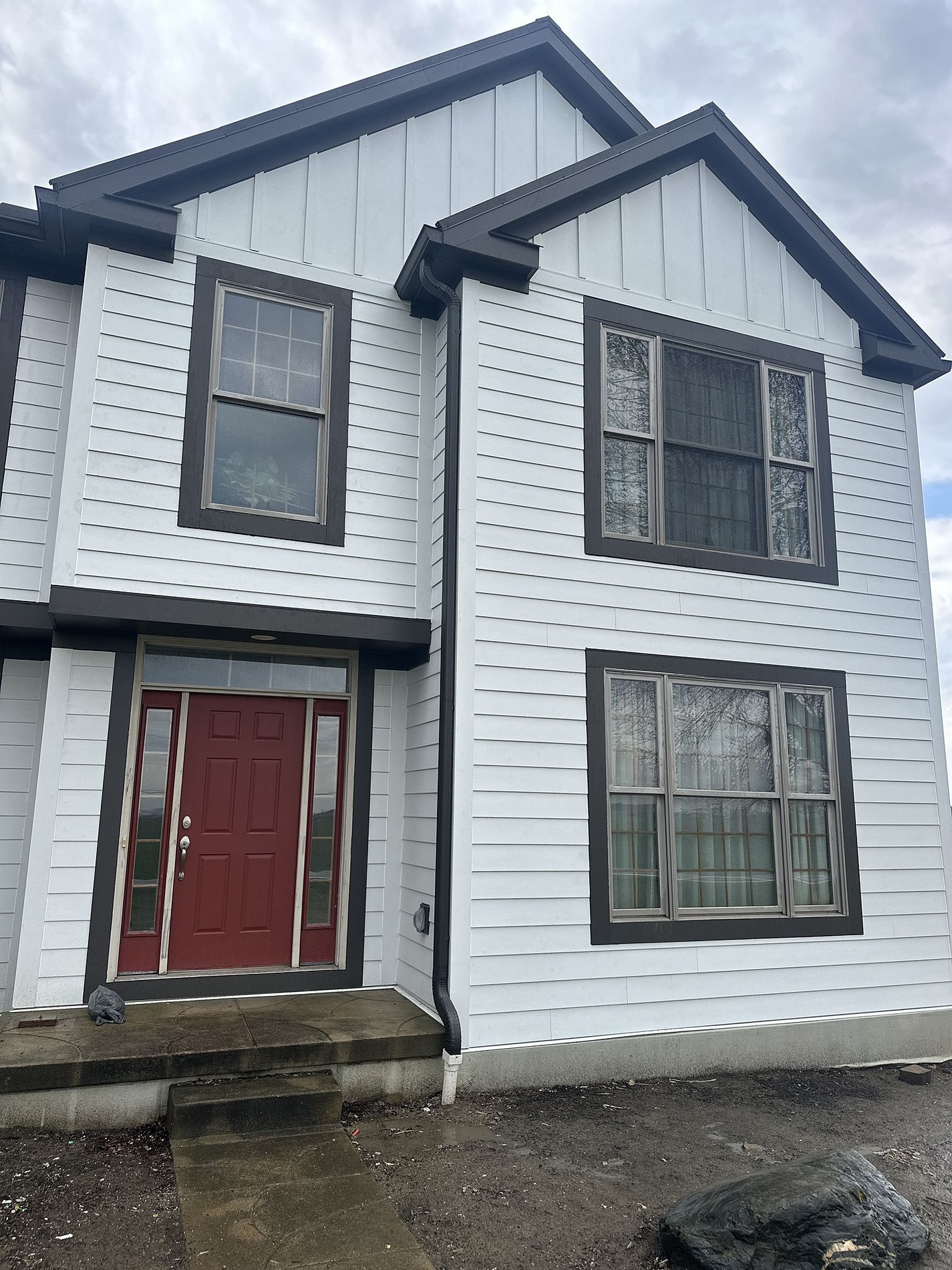
At Allstate Exteriors, we’ve seen just about every kind of siding there is. We’ve repaired it, replaced it, and tested it against everything Mother Nature can throw at it—blazing Florida sun, pounding Ohio hail, hurricane-force winds, and icy winter freezes. After all those years in the field, there’s one siding brand we recommend time and time again to our customers: James Hardie. Why? Because it’s not just siding. It’s a shield for your home. A gorgeous, durable, long-lasting investment that protects your biggest asset while keeping it looking incredible for decades. Built to Handle Whatever Weather You’re Up Against Ohio and Florida might be on opposite ends of the weather spectrum, but both can be brutal on a home’s exterior. In Ohio: Winter’s freeze-thaw cycles can wreak havoc on lower-quality siding, causing it to crack, warp, or swell. James Hardie’s fiber cement is engineered to resist all that—no warping, no peeling, no surprise repairs in the spring. In Florida: Between scorching summer sun, salty coastal air, and tropical storms, you need siding that doesn’t fade, melt, or buckle under pressure. James Hardie holds up beautifully - even when the winds pick up. This isn’t “good enough” siding—it’s siding built specifically to last in challenging climates like ours. Curb Appeal That Lasts for Years Your home deserves siding that looks as good as it protects. James Hardie offers a wide range of colors and styles—lap siding, board-and-batten, shingle—so you can create a look that’s perfectly yours. And thanks to ColorPlus® Technology, those colors stay vibrant year after year. We’re talking fade resistance that blows paint and vinyl siding out of the water. Whether you’re going for coastal chic in Florida or classic craftsman charm in Ohio, you’ll still be in love with the way your home looks 10 years from now. Low Maintenance = More Time for You Nobody wants to spend their weekends scraping, painting, or repairing siding. With James Hardie, you won’t have to. Fiber cement doesn’t rot. It doesn’t attract pests. It doesn’t buckle in the heat or crack in the cold. That means less time fixing and more time enjoying your home. A True Investment in Your Home New siding is one of the best ways to boost your home’s value—and James Hardie gives you a return that lasts. It’s energy efficient, which means your home stays cooler in summer and warmer in winter, helping lower those energy bills. And when it comes time to sell, buyers recognize and appreciate the quality. Why Allstate Exteriors Trusts James Hardie We don’t recommend products lightly. If we wouldn’t put it on our own homes, we won’t put it on yours. James Hardie has proven itself job after job—standing up to storms, holding its color, and keeping homes protected year after year. From our crews in Columbus, Ohio to our team in Cape Coral, Florida , we’ve seen firsthand how well this siding performs in every condition. If your siding is starting to show its age—or you’re just ready for a fresh new look—let’s chat. We’ll walk you through your style and color options, show you exactly how James Hardie will perform on your home, and give you a quote that’s fair, honest, and straightforward. Protect your home. Boost your curb appeal. Choose siding that’s built to last. Contact Allstate Exteriors today for your free estimate!

If you’ve never had a roof replaced before, you might picture a crew showing up, tearing off shingles, and slapping on new ones in a single afternoon. Simple, right? Not quite. A roof replacement is more like a carefully choreographed production — one where timing, skill, and attention to detail all have to work together perfectly. At Allstate Exteriors, we treat each project like it’s the main event, because for you and your home, it is. Here’s your behind-the-scenes pass to see what really happens when we replace your roof — from the quiet planning stage to the final reveal. 1. The Pre-Project Planning Stage This is the part you don’t usually see, but it’s one of the most important steps. Think of it as setting the stage before the show begins. Thorough Roof Inspection – We check every slope, every valley, and every vent, looking for the sneaky signs of trouble that other contractors sometimes miss — soft decking, hidden leaks, or ventilation issues. Material & Design Choices – This is where your roof’s “personality” comes to life. Whether you’re in snowy Ohio or hurricane-prone Florida, we help you choose shingles and materials built for your climate. Permits, Scheduling & Weather Watching – We handle all the paperwork, keep an eye on the forecast, and schedule your project for the perfect weather window. 2. Tear-Off Day: The Big Reveal The first day of visible work is always exciting. This is where your old roof comes off and your home starts its transformation. Protecting Your Property – We lay out tarps and plywood to safeguard your landscaping, siding, and windows from stray debris. Complete Tear-Off – Every old shingle, nail, and worn-out underlayment is removed, exposing the decking underneath. Decking Inspection & Repairs – If we find rotted wood or soft spots, we replace them immediately so your new roof has a strong, healthy foundation. 📸 Pro tip : This stage is the perfect time to grab a “before” photo — the transformation will be even more dramatic when you compare it later . 3. Building the New Roof Now, the magic happens. The hum of nail guns, the rhythm of shingles being laid, and the sight of your new roof taking shape is something special. Waterproofing First – We install underlayment and ice/water shields to protect your home from leaks. These are the unsung heroes of a long-lasting roof. Flashing & Ventilation – Every chimney, skylight, and roof valley gets precise flashing to keep water out. We also ensure your attic ventilation is just right — not too much, not too little — so your shingles last longer. Shingle Installation – Whether it’s impact-resistant shingles for Florida storms or architectural shingles for Ohio winters, each one is placed with care for maximum wind resistance and beauty. 4. The Grand Finale: Clean-Up & Walkthrough We believe a roofing crew should leave your home better than they found it. That means cleaning up like it’s our own property. Magnetic Sweep – We run powerful magnets across your yard, driveway, and flower beds to collect any stray nails. Debris Removal – Every scrap of old roofing is hauled away — no lingering dumpster, no leftover mess. Final Inspection – Our project manager climbs up, checks every seam and shingle, then invites you to join us for the final walkthrough so you can see the craftsmanship up close. 5. What’s Happening Behind the Curtain While you’re watching the visible work, here’s what’s going on in the background: Coordinating material deliveries so nothing delays your project. Communicating with your insurance company to keep claims moving smoothly. Tracking weather patterns daily to avoid any surprises. Documenting every step for your warranty and future records. Why All These Steps Matter A roof replacement isn’t just about curb appeal — it’s about protection, safety, and peace of mind for decades to come. Skipping steps or rushing the process can lead to costly repairs later. When you choose Allstate Exteriors, you get more than just a roof. You get a team that treats your home like our own, follows every best practice, and makes sure you’re informed and comfortable through every stage. Is Your Roof Ready for Its Makeover? 📞 Call us today or Request Your Free Estimate to start your roof’s transformation.
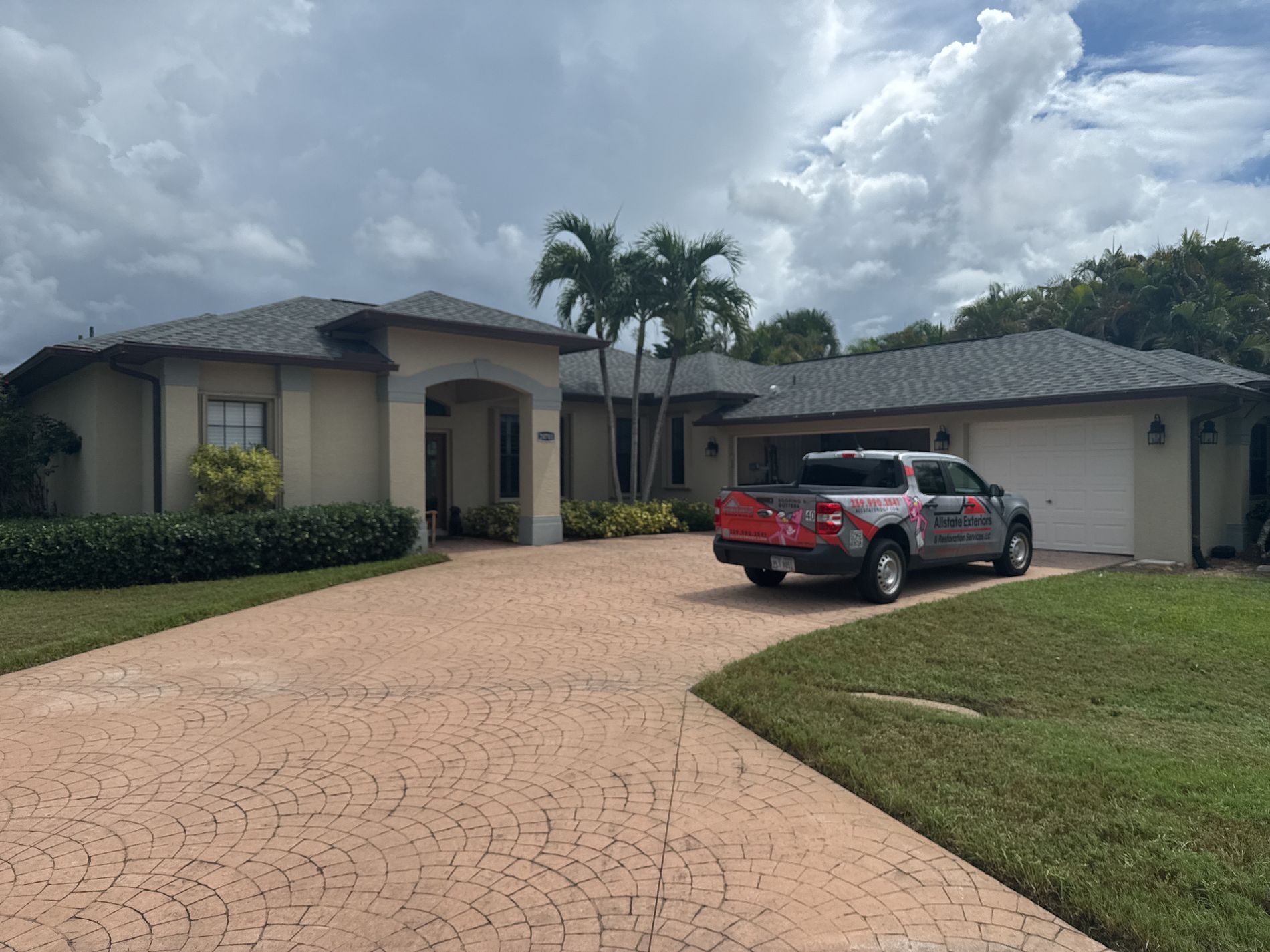
When a hurricane barrels through Cape Coral , your roof is your home’s first line of defense — and sometimes, it takes the hardest hit. We’ve seen it all: shingles ripped away, decking exposed to the rain, and even entire sections of roofing torn off in the storm’s path. At Allstate Exteriors, we know how overwhelming those first hours can feel. That’s why we put together this guide to help you take the right steps immediately after a hurricane, so you can protect your home, secure your roof, and start the recovery process as quickly as possible. 1. Safety Comes First — Always After a hurricane, it’s tempting to rush outside and see the damage for yourself. But safety must be your number one priority. Stay off the roof — hurricane damage makes surfaces slippery, unstable, and dangerous. Watch for downed power lines, broken glass, and loose debris. Wear gloves, closed-toe shoes, and protective eyewear if you need to move small debris. ⚠ Our Tip: If your roof has large openings or water is pouring inside, call for emergency help immediately. We provide 24/7 emergency tarping to keep your home safe until permanent repairs can be made. 2. Document Every Detail Insurance companies move faster when you provide clear evidence — and the sooner you start, the better. Take plenty of photos and videos from multiple angles, both inside and out. Focus on missing shingles, exposed wood, bent flashing, and water-stained ceilings or walls. Don’t throw away damaged materials until your adjuster sees them. Our team can also perform a professional storm damage inspection and provide a detailed report to support your claim. 3. Stop Water in Its Tracks Even small roof openings can cause big interior problems. Acting fast now can save you thousands later. Use tarps or heavy-duty plastic to cover exposed areas (we can handle this for you safely). Move valuables, electronics, and furniture away from leaks. Place buckets under drips and turn off electricity to affected rooms. 💡 Why It Matters: Mold can start forming in as little as 24–48 hours — so sealing up your roof quickly is essential. 4. Call a Trusted Local Roofer — Not a Storm Chaser After hurricanes, out-of-town contractors often flood Cape Coral offering “quick fixes” that don’t last. Protect yourself by working with a local, licensed, and insured roofer who has proven hurricane repair experience. We’ve helped countless Cape Coral homeowners restore their roofs after severe storms. We understand Florida building codes and hurricane-resistant roofing requirements. We’ll be here long after your repairs are done — we’re not going anywhere. 5. File Your Insurance Claim Right Away With so many claims after a hurricane, timing is everything. Contact your insurer within 24–48 hours. Share your photos, videos, and our inspection report. Keep detailed notes on every call, email, and receipt. We’ll even meet your adjuster on-site to make sure all damage is documented — not just what’s visible from the ground. 6. Schedule a Comprehensive Roof Inspection Storm damage isn’t always obvious. What looks like a small leak now can lead to major structural issues later. Our inspections check for: Lifted or loosened shingles that can let water in later Water damage hidden under the surface Cracked or damaged flashing around chimneys and vents Soft spots in the decking that indicate rot A proper inspection now helps ensure your home is truly protected — and your insurance claim covers everything it should. When you call Allstate Exteriors, you get: Emergency tarping within hours of your call Detailed inspections with clear, honest recommendations Expert hurricane roof repairs designed to withstand Florida’s harshest weather A local team that’s here for the long haul — before, during, and after the storm Call Allstate Exteriors Today If your Cape Coral roof has been damaged by a hurricane, don’t wait. The first 48 hours are your best chance to prevent further damage, protect your home, and get your claim moving. We’re ready when you need us — fast, reliable, and local.
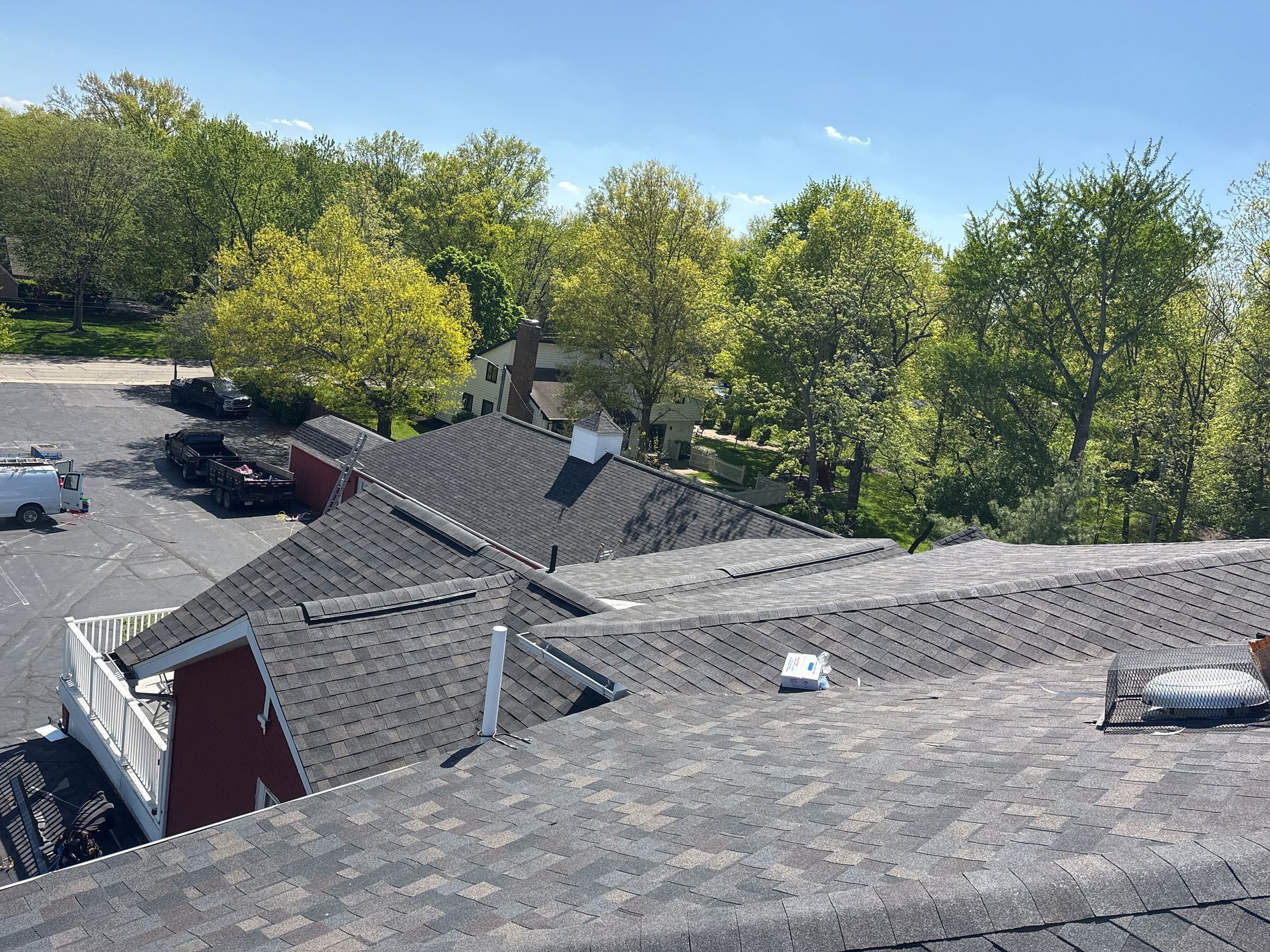
If you’ve been told that you can save money by putting new shingles over your old roof, you’re not alone. On the surface, a "roof-over" sounds like a great deal — less labor, fewer materials, and a quicker install. But as with most “too good to be true” offers, there's a big catch. At Allstate Exteriors, we believe in doing things the right way, not the fast or easy way — and that’s why we don’t offer roof-overs. Ever. Here’s why that shortcut might cost you more than you bargained for. 🏚️ What Is a Roof-Over, Exactly? A “roof-over” is when a contractor installs a new layer of shingles right on top of your existing roof — no tear-off, no inspection underneath, just one roof stacked on top of another. While it might seem like a quick fix, it’s really just a Band-Aid on a problem that needs surgery. Would you repaint over rotted wood or tile over a cracked foundation? Probably not. The same principle applies here. 🚫 5 Reasons Roof-Overs Just Don’t Cut It 1. You Can’t Fix What You Can’t See Underneath your shingles is a whole system that protects your home — decking, flashing, underlayment, ventilation, and more. If you don’t remove the old shingles, you can’t see if: The decking is soft or water-damaged There’s hidden mold or rot Past leaks have compromised your structure A roof-over covers it all up, which means problems are left to quietly get worse — until they become expensive (and sometimes dangerous) surprises. 2. It Adds Serious Weight to Your Home Your roof wasn’t designed to support two layers of shingles — and yet, that’s exactly what a roof-over forces it to do. This added weight can cause: Structural stress Sagging or bowing in your roofline Reduced attic ventilation (hello, moisture problems) Especially in Ohio winters when snow piles up, or during Florida’s heavy storm seasons, that extra weight isn’t doing your home any favors. 3. You’ll Likely Lose Your Warranty Many manufacturers clearly state in their warranties that shingles must be installed on a clean, properly prepared surface. If you opt for a roof-over, you might be waving goodbye to any product warranty you’d otherwise have. That means if something goes wrong — and let’s be honest, it often does — you’re on your own. 4. You’re Not Actually Saving Money Sure, skipping the tear-off might shave a few bucks off your upfront cost. But here’s what we see time and time again: A homeowner opts for a roof-over, only to discover leaks, rotting decking, or sagging a few months later. Now they’re paying for a full tear-off and repairs on top of what they already spent. It's like taping over a leaky pipe and hoping for the best. 5. It Just Doesn’t Look Good Let’s be real — curb appeal matters. Roof-overs often result in an uneven, wavy appearance. The new shingles conform to the bumps and imperfections of the old layer beneath them. It’s not the sleek, clean look most homeowners want after investing in a new roof. If you’re going to improve your home’s value, make sure the outside reflects that investment. 🔨 Why We Only Do Full Tear-Offs at Allstate Exteriors When you choose Allstate Exteriors, you're choosing quality over shortcuts, and integrity over convenience. We don’t believe in covering up problems. Instead, we: Fully remove your old roofing system Thoroughly inspect your roof decking and structure Replace any rotted or soft decking Install high-performance underlayment and flashing Finish with beautiful, warrantied shingles — installed to the manufacturer’s exact specs It’s a process that takes a little more time, but it’s the only way we’d want it done on our own homes — and that’s the standard we bring to yours. 🏡 Your Roof Deserves Better Your roof isn’t just another part of your house — it’s what protects everything underneath it. Your family. Your belongings. Your peace of mind. So when it’s time for a new roof, don’t settle for a shortcut. Don’t settle for “good enough.” Get it done right. Get it done once. At Allstate Exteriors, we’re here to guide you every step of the way — with honesty, quality craftsmanship, and zero pressure. ✅ Ready to upgrade your roof the right way? Book your free inspection today and let’s make sure your home is protected from the top down — no shortcuts, no surprises, just roofing done right.
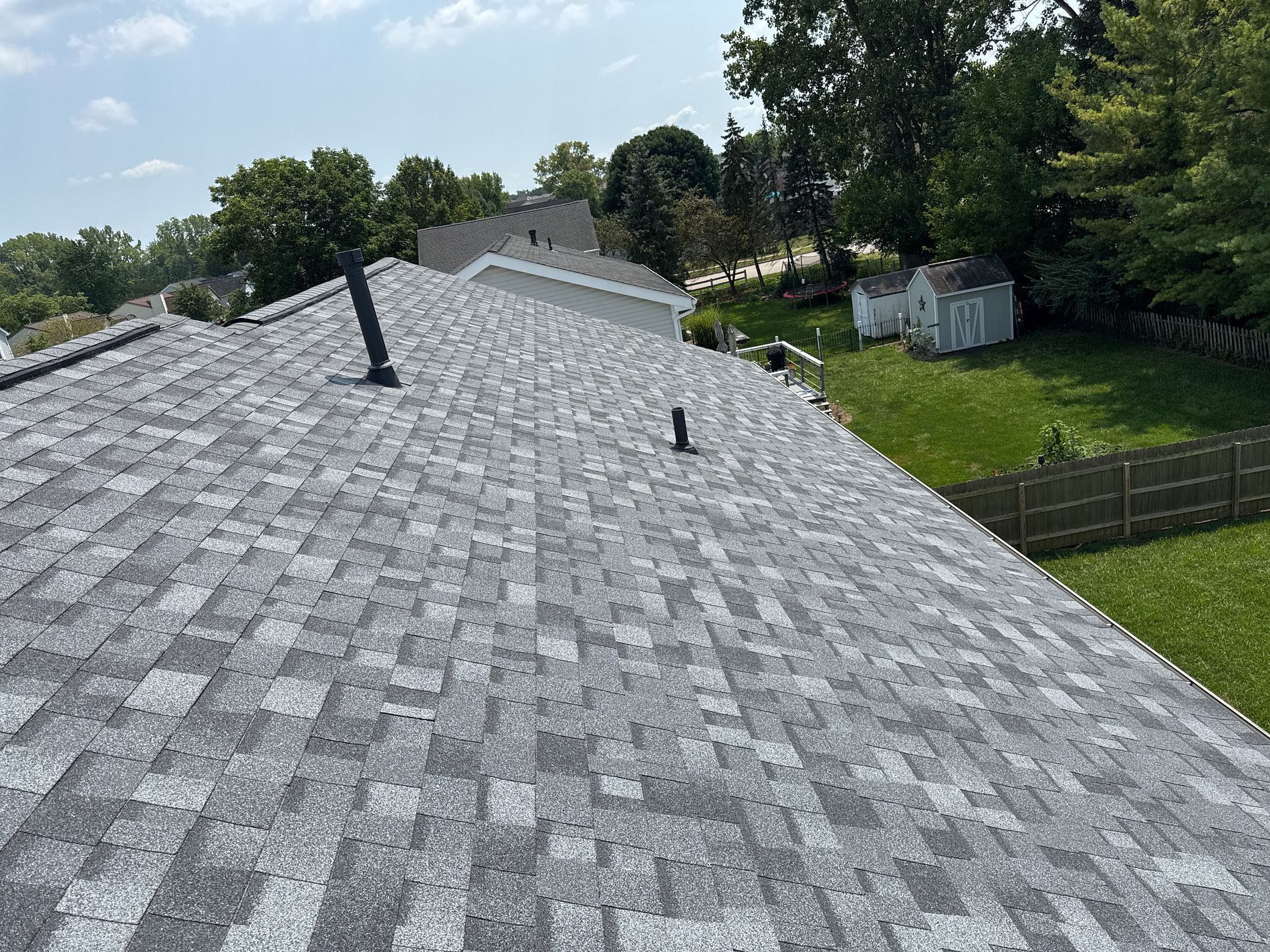
Let’s be honest—roofing isn’t cheap. So when you get multiple quotes and one of them is way lower than the others, it’s hard not to consider it. A new roof is a big investment, and who doesn’t love saving money? But here’s the truth : when it comes to your roof, cheapest doesn’t mean best. In fact, going with the lowest bid could end up costing you way more in the long run—and not just in dollars. At Allstate Exteriors, we’ll always give you a fair, honest price—but we’ll never be the cheapest. That’s not who we are. Because we believe your roof should be done right, not rushed. And by the time you hit your first storm or spot your first leak, you’ll be glad you chose quality. Here’s why 1. Cheap Materials Don’t Protect Your Home Long-Term The fastest way to slash a roofing estimate? Cut corners on materials. Some contractors use the cheapest shingles, low-grade underlayment, or skip important components like ice and water shield—all to keep that number nice and low. But in Florida’s heat or Ohio’s ice and snow, those shortcuts fall apart fast. You might save a couple thousand today… but when your “new” roof starts shedding shingles in a storm or leaking by year five, the regret sets in. We only use materials we trust—products that stand up to weather, time, and everything in between. 2. Low Labor Costs = Rushed, Unskilled Work Let’s talk about labor. When a company offers the “lowest price in town,” ask yourself: how are they paying their crew? The truth is, cheap roofing jobs often mean underpaid, inexperienced, or even uninsured workers. And when that happens, it shows. Shingles go on wrong. Flashing gets missed. Ventilation is an afterthought. It may not be obvious right away, but give it a few months—or one good storm—and the flaws come to the surface. At Allstate Exteriors, our crews are trained, professional, and proud of their work. We don’t cut corners, because we know what’s at stake: your home, your family, and your peace of mind. 3. What You Don’t See Can Hurt You Here’s the thing—most roofing issues aren’t obvious until they’re really obvious. By then, you're dealing with water damage, mold, soft spots in the decking, or rotted fascia boards. Many low-cost bids skip or rush the details you can’t see: They don’t check for hidden decking damage They reuse old flashing They ignore ventilation issues They skimp on cleanup and disposal That means more repairs (and stress) later. A proper roof replacement is more than just what you can see from the ground—it’s the work behind the scenes that keeps your home safe. 4. We're Not in the Business of "Good Enough" We’ve been in this business a long time, and we’ve seen it all. We’ve been called to fix the “cheap jobs.” We’ve heard the stories of roofs that failed after just a few years. And we’ve seen homeowners forced to pay twice for a job that should have lasted decades. That’s not what we want for you. We’re not here to be the cheapest—we’re here to be the team you trust to do it right the first time. Because that’s what you, your home, and your family deserve. Final Thoughts: A Roof Is an Investment—Treat It Like One We’ll always be transparent with our pricing. We’ll walk you through every line item. And we’ll never push upgrades you don’t need. But we will give you the best options to protect your home long-term—and we’ll stand behind every nail, every shingle, every decision we make. Because at the end of the day, it’s not just about getting a roof—it’s about getting it done right. Ready to Talk? Let’s schedule a free inspection and walk through your options. No pressure. No gimmicks. Just honest advice from a team that truly cares. 👉 Schedule Your Free Inspection – and find out why quality really does matter.
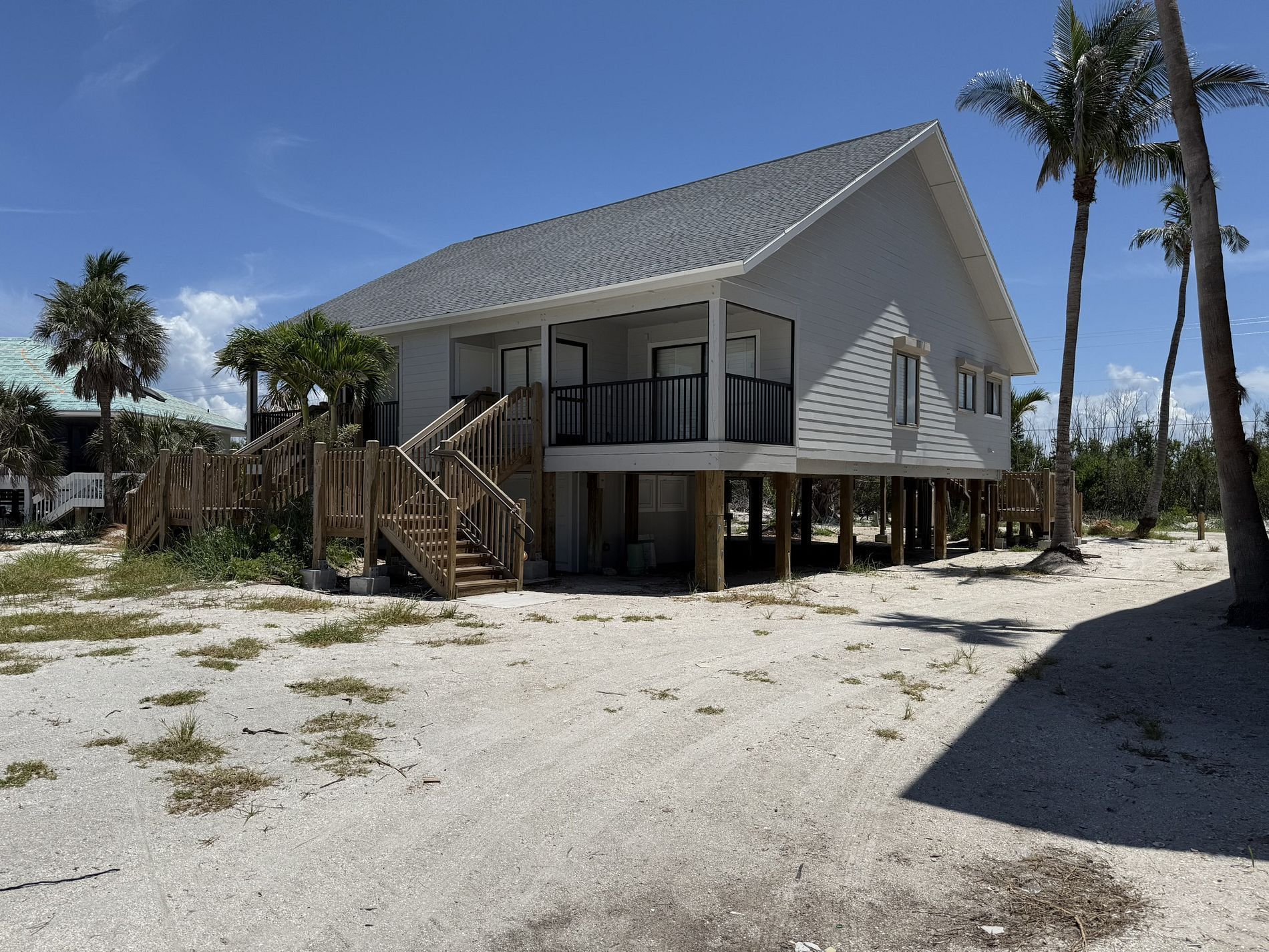
Florida life comes with sunshine, salty air, and unfortunately… hurricane season. From June through November, we Floridians stay alert to swirling systems off the coast. And while it’s easy to focus on flashlights and bottled water (which are important!), your home’s exterior is what truly shields you when the wind picks up. At Allstate Exteriors, we specialize in roofing , siding , and gutters —and we’ve seen firsthand how storms can impact homes that weren’t quite ready. So here are the most important things you should know to keep your home (and peace of mind) protected this hurricane season. 🏠 1. Your Roof Is Your First Line of Defense Your roof takes the brunt of every storm. But not all roofs are installed—or maintained—with hurricane-force winds in mind. What to know: Loose, curling, or missing shingles are early signs of risk Old or improperly installed roofs may not meet Florida wind codes Even small leaks can turn into massive water damage during a storm Solution: ✔️ Schedule a FREE r oof inspection before hurricane season hits full swing. ✔️ Ask about impact-rated roofing materials and storm-tough installation methods. ✔️ Consider upgrading to Owens Corning Duration shingles with wind resistance up to 130mph—yes, we install those! 💧 2. Gutters Matter More Than You Think You may not think about your gutters often… but you’ll definitely notice them when they’re overflowing in a downpour. Why they matter: Properly functioning gutters direct water away from your home and foundation Blocked or broken gutters lead to roof leaks, siding rot, and even basement flooding Hurricane rain is fast, heavy, and relentless—your drainage needs to keep up Solution: ✔️ Make sure gutters are cleaned, secured, and flowing correctly ✔️ Upgrade to seamless gutters to reduce leaks ✔️ Ask us about gutter guards—a small upgrade that saves big during storm season 🧱 3. Your Siding Can Take a Beating—If It’s Not Up to Par Strong winds, flying debris, wind-driven rain—your siding is right in the line of fire. What to check for: Cracks, gaps, or warping in your siding Loose panels or missing trim Signs of moisture or mold on your interior walls Solution: ✔️ Replace outdated siding with hurricane-resistant materials like fiber cement ✔️ Choose siding options that are impact-rated and properly sealed ✔️ Ask us about custom color-matched siding installations that boost both curb appeal and storm durability 🧰 4. You Need More Than Flashlights—You Need an Exterior Plan We always recommend building a storm kit, but your home itself needs a plan too. A few things we always advise Florida homeowners: Get your roof, gutters, and siding inspected yearly (ideally before summer hits) Take “before” photos of your exterior to simplify insurance claims Know your deductible and what’s covered under storm damage Have a trusted contractor saved in your phone (hint: it’s us 👋) When a storm rolls through and your roof’s leaking or siding’s blown off, you don’t want to be stuck Googling for help. You want someone local, licensed, and already familiar with your home. 🌬️ 5. A Little Prep Now Can Save Thousands Later We’ve had homeowners call us in a panic after a storm—wishing they had handled that soft spot on their roof or that cracked siding panel weeks ago. The truth? Most storm-related home damage is preventable when the right prep is done ahead of time. Here’s what we recommend for every Florida homeowner: ✅ Book a roof + exterior inspection before peak storm season ✅ Trim trees, secure outdoor items, clean gutters ✅ Consider upgrading to storm-rated materials if your roof or siding is older ✅ Document your home’s condition (photos, warranties, receipts) 🛠️ Bonus: What to Expect from an Allstate Exteriors Inspection Not sure where to start? That’s where we come in. When you schedule a free hurricane-readiness inspection with Allstate Exteriors, we’ll: 🔍 Check your roof for signs of wear, damage, or improper installation 🔍 Inspect your siding for cracks, loose panels, or rot 🔍 Evaluate your gutter system for clogs, drainage issues, or weak spots 🔍 Provide recommendations on how to strengthen your home’s defense before the storms hit You’ll walk away with a clear plan—whether that’s a simple fix or a full upgrade—and the confidence of knowing your home’s in good hands. Bottom Line: Don’t wait until you see your neighbor’s shingles in your yard to take hurricane season seriously. With a few smart moves—and a little help from your local pros—you can stay protected, dry, and storm-ready. 📞 Call us today or book your inspection online
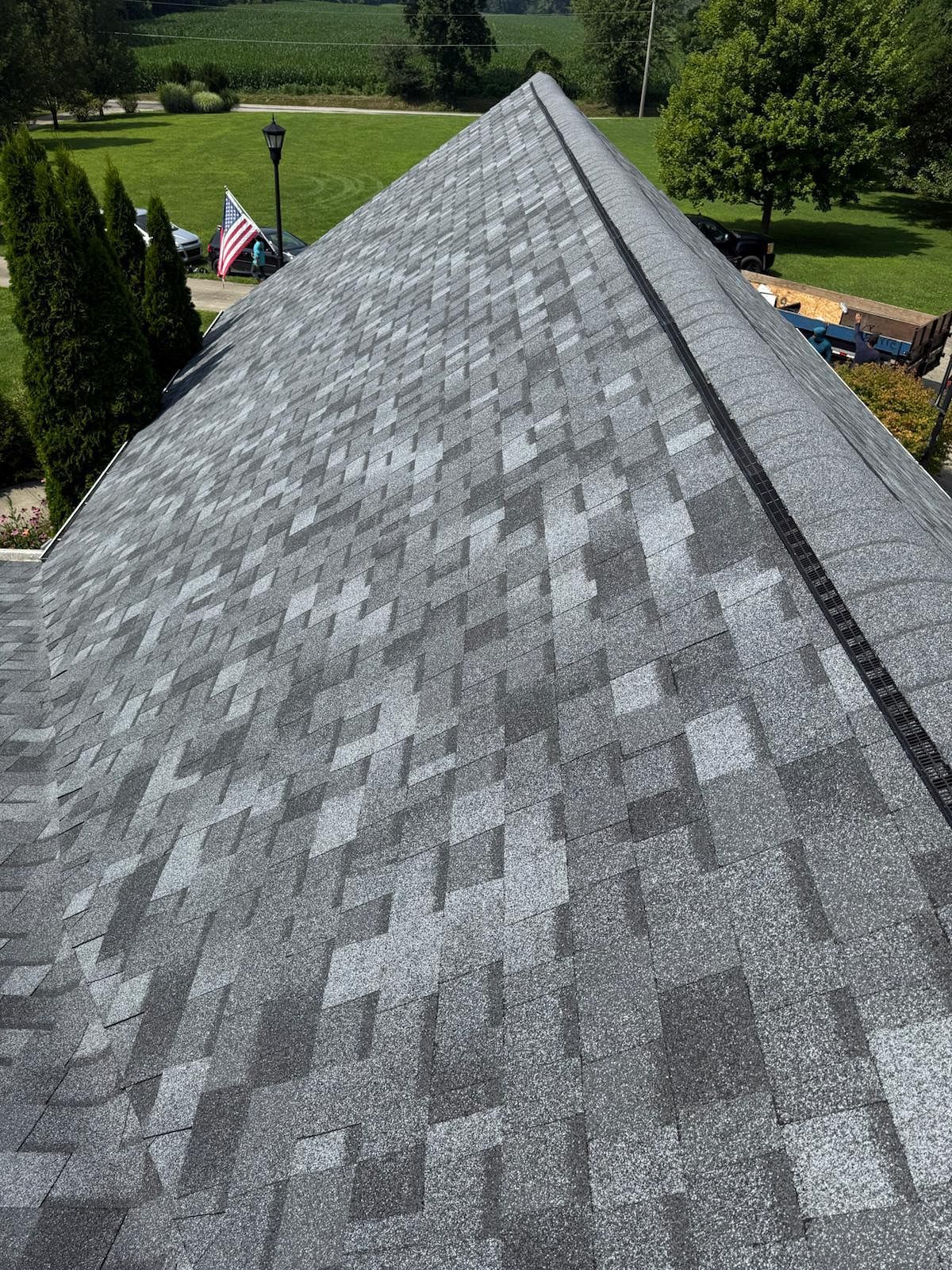
Allstate Exteriors Explains What Homeowners Should Expect When it comes to protecting your home, few things are more important than your roof. But how long does a roof actually last in Columbus, Ohio ? The answer depends on the materials used, the quality of installation, and how well it’s maintained over the years—especially in a place like Columbus where we see all four seasons (sometimes in the same week!). At Allstate Exteriors, we’re here to walk you through what you can realistically expect from your roof and how to get the most life out of it. First, Columbus Weather Plays a Big Role From humid, stormy summers to snowy, freezing winters, our Ohio weather puts roofs to the test. The freeze-thaw cycles, hail, high winds, and UV exposure all take a toll—meaning roofs in our region often wear faster than in milder climates. Roof Material vs Lifespan Here’s what we typically see for central Ohio homes: Roof Types & Expected Lifespan Asphalt 3‑tab shingles : 15–20 years Architectural (dimensional) shingles : 25–30+ years Metal roofing: 40–70 years Slate, tile, or concrete roofs: 50–100+ years Wood shake roofs: 20–30 years (with upkeep) At Allstate Exteriors, we specialize in high-quality asphalt and metal roofing solutions—and we’re a proud Owens Corning Platinum Preferred Contractor, which means our architectural shingles come with enhanced warranties and long-term durability. What Shortens a Roof’s Life? Even the best shingles won’t last forever if a few key things are ignored. Here's what we see that causes premature wear: Poor ventilation – This leads to moisture and heat buildup in your attic, which damages decking and curls shingles. Inadequate installation – Sadly, we’ve seen it all: Improper nail placement, skipped underlayment, or flashing errors. That’s why our trained installers never cut corners. Clogged gutters and overhanging trees – Keep your roof debris-free! Storm damage – Hail, high winds, and heavy snow buildup can slowly chip away at your roof’s lifespan. Signs It’s Time to Replace (Not Just Repair) Wondering if your roof’s at the end of the road? Keep an eye out for: Curling or cracked shingles Missing sections of shingles Granules showing up in your gutters Moss or dark streaks (a sign of algae) Sagging rooflines or ceiling stains inside If your roof is 15+ years old, it’s smart to get a professional inspection every 1–2 years so you can plan ahead—rather than react to leaks or damage after the fact. How Allstate Exteriors Can Help We’ve been helping homeowners in Columbus and surrounding areas protect their homes since 2002. When you choose Allstate, you’re getting: Local expertise on Ohio weather and roofing codes Certified, in-house installers Honest roof evaluations (we’ll never sell you something you don’t need) Options to fit your budget—including flexible payment options Extended warranties through our Platinum Preferred partnership with Owens Corning Whether your roof is nearing the end of its lifespan or you just want peace of mind, we’re here to help you make a confident, informed decision. Ready for a Free Roof Inspection?
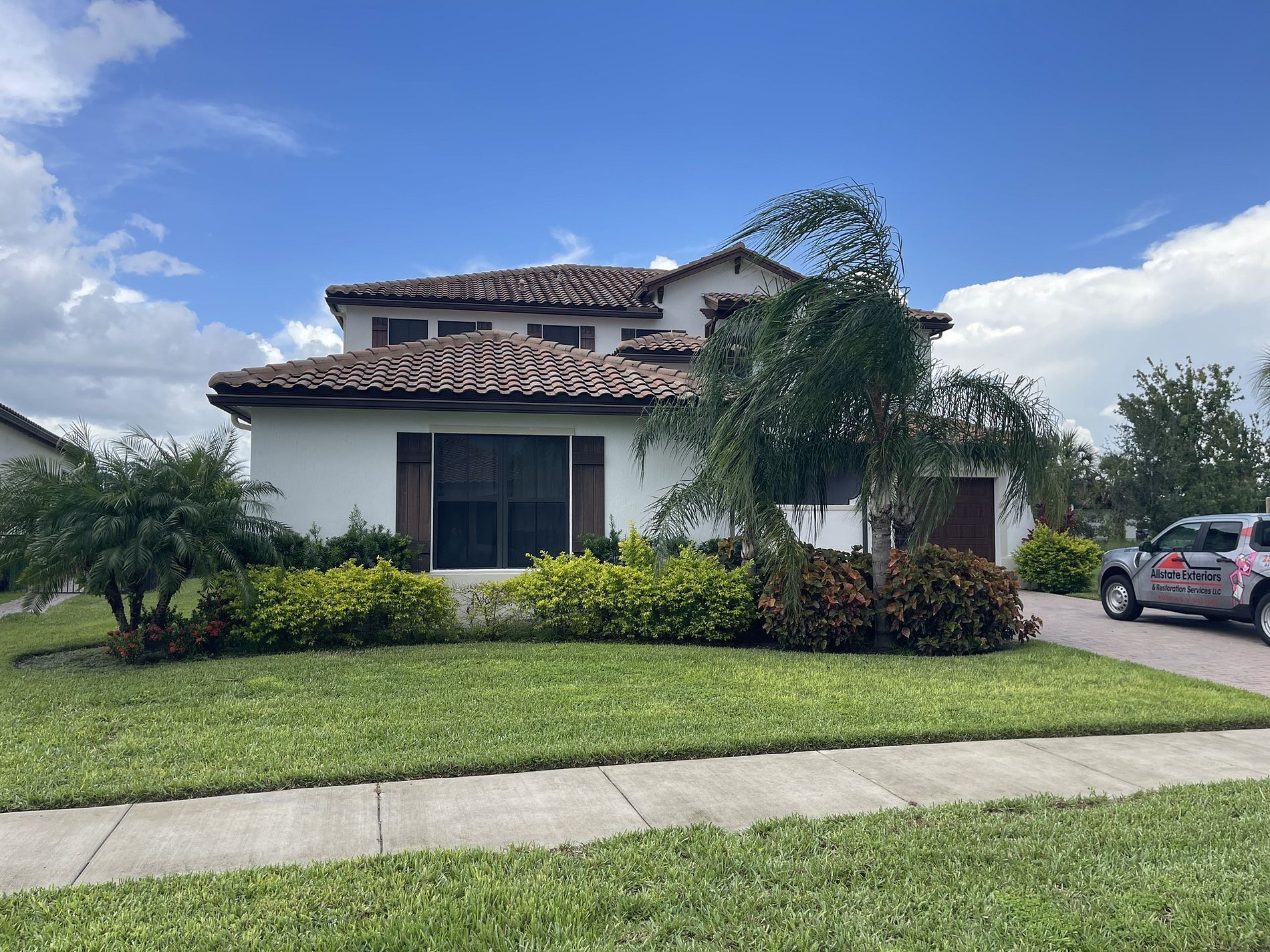
If you live in Florida, you already know that hurricane season isn’t a maybe—it’s a matter of when. While we love the sunshine, ocean breezes, and afternoon thunderstorms, that warm tropical air can flip from peaceful to powerful real quick. Every year, as the forecasts roll in and storm names start popping up, homeowners across the state scramble to “get ready.” But even with the best intentions, it's easy to overlook a few crucial things that could make a world of difference. So let’s talk about the top six mistakes Florida homeowners make when preparing for a hurricane—and more importantly, how to avoid them with confidence. 1. Waiting Until the Last Minute to Prepare We’ve all been there. One minute you're watching the weather casually, and the next you're in a mile-long line at the hardware store, fighting over the last pack of batteries. Spoiler alert: Hurricane prep doesn’t work well when it’s rushed. What to do instead: Treat hurricane prep like spring cleaning—it’s just part of your routine. Stock up early on water, flashlights, batteries, canned food, and yes—don’t forget the wine (because let’s be honest, you’ll want it). Also, get those inspection appointments on the books before everyone else does. Roofers, inspectors, and tree trimmers get backed up fast once a storm is named. 2. Ignoring the Roof Because It “Looks Fine” If it’s not leaking, it’s fine… right? Not quite. Your roof is the only thing standing between your home and Mother Nature’s worst mood swings. And unfortunately, some of the most dangerous damage is the kind you can’t see from the ground. What to do instead: Call in a local pro ( like us 😉) for a free roof inspection. Even minor damage—like a lifted shingle or loose flashing—can turn into major leaks once 100 mph winds start ripping through. Preventive care now saves you money, stress, and that awful feeling of dripping water in your living room later. 3. Overlooking the Small Stuff: Soffits, Gutters, and Vents You boarded your windows, stocked your pantry, and reinforced the garage door—but did you check your soffits? Or clean out your gutters? Or make sure your attic vents are properly sealed? What to do instead: These little details can be your weakest link during a storm. Loose soffits or clogged gutters can lead to wind uplift or water backing into your home. A quick exterior inspection can make all the difference. Better yet—have a pro do it so nothing gets missed. 4. Relying Too Much on Insurance Without Proof Here’s a tough truth: insurance companies don’t always make it easy. Especially when you can’t prove the damage happened after the storm, and not before. What to do instead: Take 15 minutes and do a walkaround video of your home before hurricane season. Capture the roof, windows, soffits, gutters—everything. Even better? Schedule a professional inspection and get documentation. Having photos, reports, and dated notes makes filing a claim way easier if you ever need to. 5. Skipping Professional Help Until It’s Too Late We get it—you’re busy, and it’s tempting to just “eyeball” your roof or rely on the neighbor who used to be a contractor 10 years ago. But DIY doesn’t always cut it when hurricanes are involved. What to do instead: Call in a professional and let us do the heavy lifting. We’ll check your roof, your soffits, your gutters, and everything in between. No stress, no obligation—just peace of mind. Final Thought: Be Proactive, Not Panicked At the end of the day, preparing for a hurricane shouldn’t feel like chaos. With a little planning—and a trusted local team by your side—you can protect your home, your family, and your sanity. Don't let these common mistakes catch you off guard. The earlier you prep, the better you sleep when that cone of uncertainty heads your way. Ready to get your home hurricane-ready? Allstate Exteriors is here to help—whether it’s a free roof inspection, storm prep guidance, or just an honest second opinion. We’re local, we’re experienced, and we genuinely care about helping Florida homeowners stay safe. Schedule your free inspection today
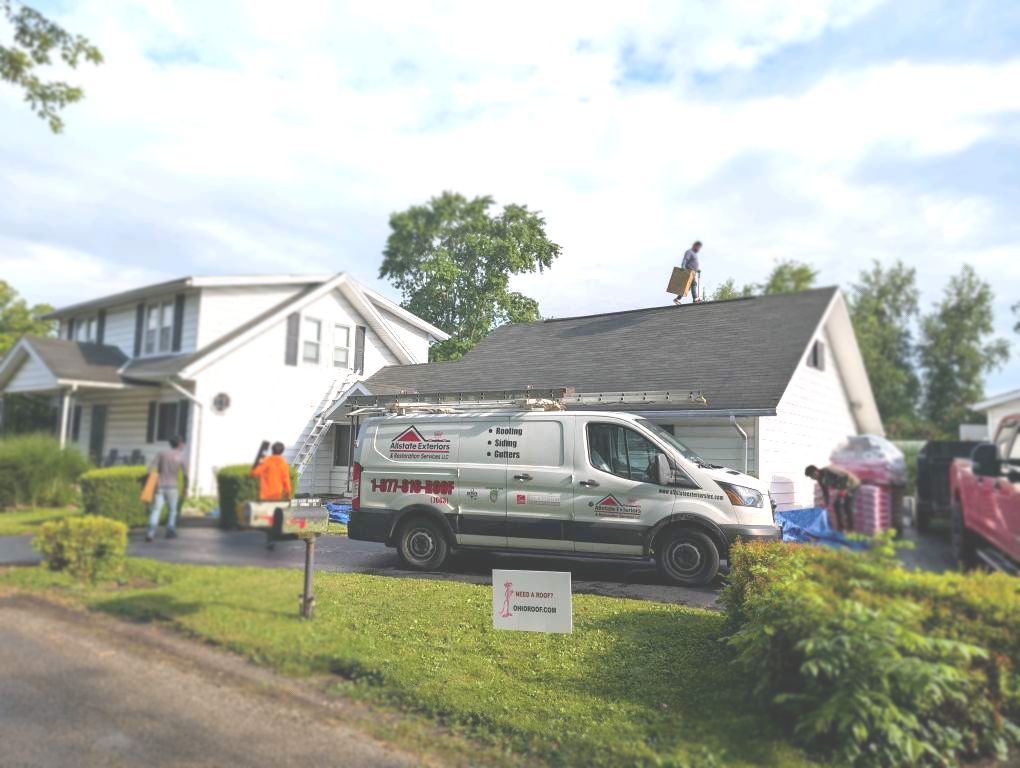
What Happens If You Say ‘Let Me Think About It’—and Wait 2 Years (The honest truth your future self will thank you for) We’ve all done it. You get a quote, take a deep breath, and say: “Let me think about it.” Totally fair. Replacing your roof or siding isn’t something you impulse buy like a new throw pillow. It’s your home. Your safe place. And making a big decision—especially one involving shingles, soffits, or surprise price tags—deserves a little time. But here’s the thing: When “Let me think about it” turns into two winters, three storms, and a whole lot of putting it off… what started as a simple project can slowly evolve into something a lot more complicated (and expensive). Let’s walk through what actually happens when you wait a little too long. 1. Your Roof (or Gutters or Siding) Keeps Aging… Even If You’re Not Ready Water doesn’t wait. Neither does mold. And that tiny leak you meant to “keep an eye on” while you thought things over? It might now be rotting the decking under your shingles or creeping into your attic insulation without making a sound. We’ve had customers come back to us after 18–24 months and say: “I wish I hadn’t waited… it was fine before. Now I need wood replaced too.” Delays lead to damage. And damage = more materials, more labor, more time. 2. The Price You Remember? It’s Probably Not the Price Today. Two years ago, your quote might’ve been $12K. Now? That same project—if the scope hasn’t grown—might be closer to $14K or more. Why? Because roofing materials, fuel, underlayments, labor rates, and even supply chain disruptions all shift season by season. That original quote wasn’t just for fun—it was based on real numbers at that moment in time. We do our best to keep things fair and transparent. But unfortunately, waiting almost always costs more in the long run. 3. Insurance Coverage May Not Work in Your Favor Later A lot of homeowners assume their insurance will save the day no matter what. But insurance companies are sneaky smart—and they look at how long you’ve let something sit. If that leak from 2023 turned into ceiling stains in 2025, your claim might be denied because the problem is now considered “gradual wear and tear” rather than sudden storm damage. That means you're paying for it out of pocket. No one wants that surprise. (Especially not when it’s followed by mold remediation bills.) 4. Curb Appeal Starts to Crumble (Even If You Don’t See It Yet) We all stop noticing the slow stuff: the lifted shingles, the warping siding, the gutters barely hanging on by a bracket. But guess who does notice? 👀 Your neighbors. 👀 Every guest pulling into your driveway. 👀 Potential buyers if you list your home. A lot of customers say: “I didn’t realize how bad it looked until we fixed it—and now I’m obsessed with the new roof !” There’s nothing like a fresh install to breathe new life into your home’s curb appeal. 5. You’re Not Alone (And You Don’t Have to Have All the Answers Yet) We’re not here to rush you. You deserve to feel confident and informed before jumping into a project. But if it’s been a year or two since your estimate, we encourage you to reach back out—not because we’re chasing a sale, but because you deserve to know where things stand today. We can: Rewalk your property to see if anything’s changed Update your pricing based on current costs Talk through financing or phased options Help you feel in control again Because your roof doesn’t need to be a stressor. It can be one of the smartest, most empowering decisions you make for your home and your peace of mind. 💬 Final Thoughts from Team Allstate You don’t have to feel bad for waiting. Life gets busy. Projects get pushed. But if your “think about it” moment is turning into year two (or more), let’s reconnect and revisit your options—before Mother Nature sends a not-so-gentle reminder through your ceiling. Click here for a free estimate!
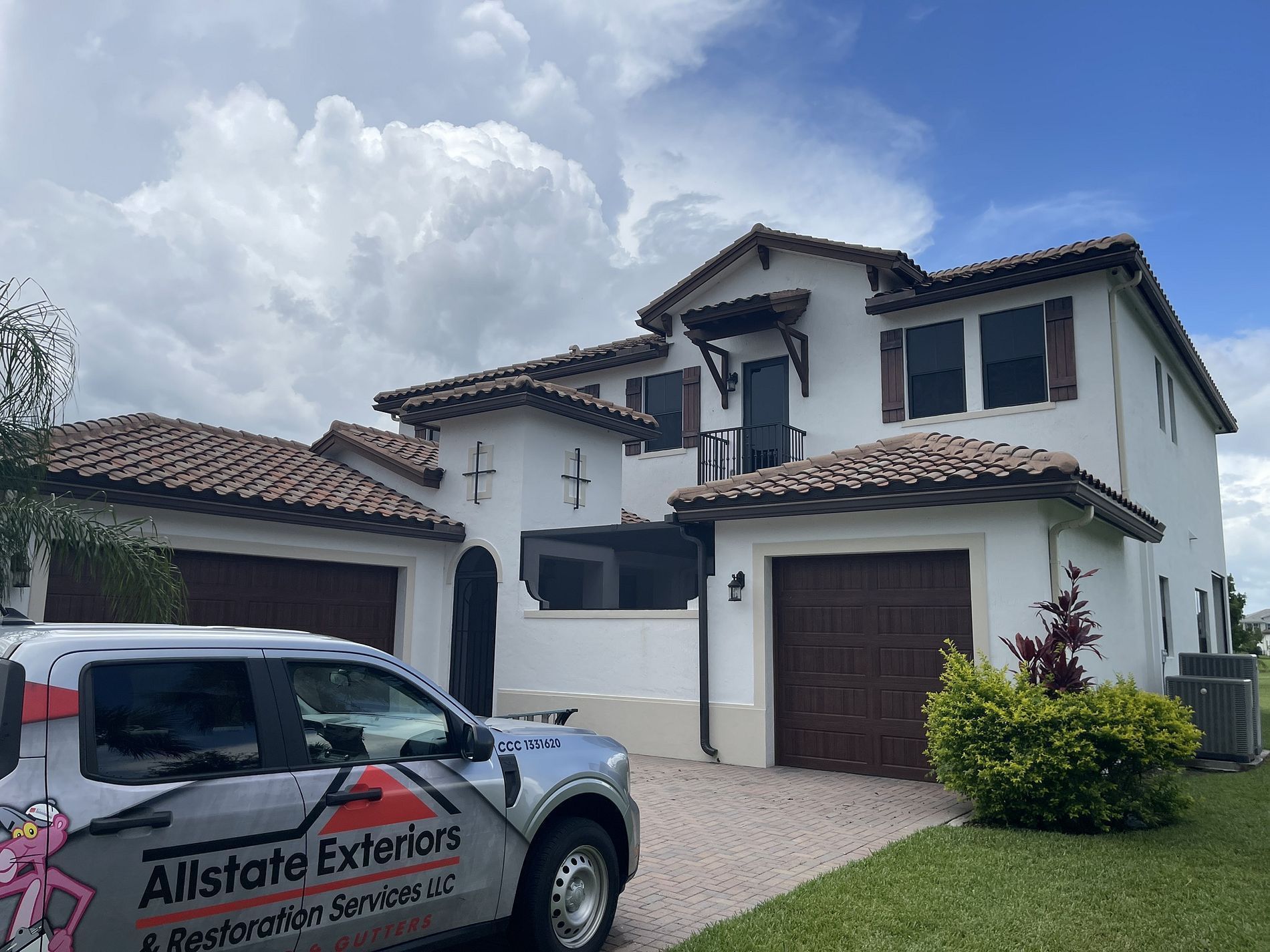
Why Orlando Homeowners Trust Allstate Exteriors Professional. Local. Dependable. When you live in Orlando , your home is constantly exposed to a mix of blazing sun, heavy rains, and the occasional tropical storm. It’s not just about making your house look great—it’s about protecting what matters most. That’s where we come in. At Allstate Exteriors, we help Orlando homeowners take care of their homes with high-quality roofing, siding, and gutter solutions built to handle Florida’s climate. We’re a family-owned company with deep roots, high standards, and a strong belief in doing things the right way—every time. Here’s why so many of your neighbors choose to work with us (and why we’d love the chance to work with you, too). We Understand What Florida Homes Really Need Let’s be honest—Florida is beautiful, but the weather can be brutal on your home. The materials you choose (and the team who installs them) matter. At Allstate Exteriors, we know what works here and what doesn’t. We help homeowners choose products that: Stand up to strong winds and heavy rain Resist UV damage from constant sunshine Hold their color and curb appeal longer Keep your home cooler and more energy-efficient Because we’re local, we don’t just install and walk away—we’re here long after the project is done. You’ll Always Be Treated Like a Neighbor (Because You Are) As a family-owned company, we take pride in treating our customers the way we’d want to be treated—honestly, respectfully, and with clear communication every step of the way. From your very first call to the final walkthrough, we focus on: Quick, courteous responses to your questions Clear timelines and expectations Respect for your time, your home, and your family Professional crews who leave the job site clean and safe No pressure. No surprises. Just good people doing great work. Trusted Credentials. Proven Results. We’re proud to be an Owens Corning Platinum Preferred Contractor, a status held by only a small percentage of roofing companies nationwide. That means: We meet rigorous training and installation standards We can offer exclusive extended warranties on materials and labor You get peace of mind that the job will be done right the first time We don’t cut corners, and we don’t believe in “good enough.” Our goal is excellence—from start to finish. What Our Customers Are Saying We’re grateful that so many Orlando homeowners take the time to leave us kind words after a job well done. Here’s just a few things our customers have said: “Knowledgeable team, very professional, they’ll work hard to find any storm damage if it’s there, they help you pick the right colors, and get you financed. Highly recommend !” “Very professional presentation with all relevant facts, answered all my questions. Showed important steps in roofing process, felt well informed at end.” “Allstate Exteriors is an outstanding roofing company. They are an Owens Corning platinum preferred contractor. I will be referring them to my neighbors.” Reviews like these mean the world to us—and we work hard every day to earn them. A Little Extra Heart in Everything We Do Yes, we take our work seriously—but we also love what we do. And that shows in the little things: a thoughtful thank-you card after a project, a post-install check-in call, or a helpful update text to keep you in the loop. And if you happen to meet our company mascot, Joe Bob Cat, along the way… well, let’s just say he’s got a real talent for making job sites a little more fun. 🐾 Schedule A Free, No-Pressure Estimate Let’s protect your home the right way—with care, craftsmanship, and a company you can count on.
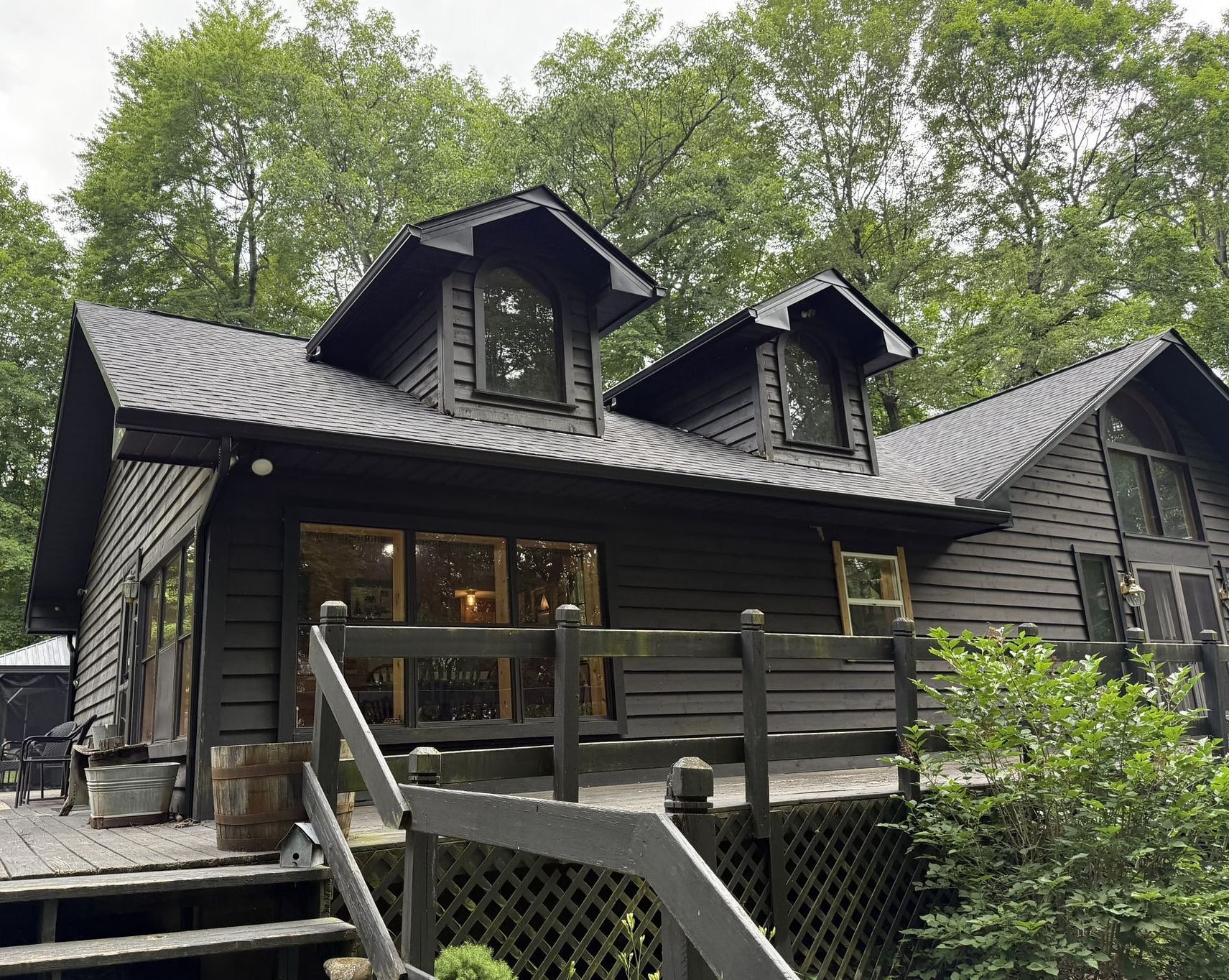
Why We Ask to Meet With All Homeowners at the Estimate It’s not just a formality—it’s how we make sure you feel confident every step of the way. Let’s be honest—your home is probably the biggest investment you’ll ever make. And when it comes to protecting it with a new roof, updated siding, or new gutters, you deserve more than a quick visit or a guess-timate thrown together over the phone. That’s why, at Allstate Exteriors, we kindly ask that all homeowners (or decision-makers) be present during the estimate appointment. We promise—it’s not to make your life harder. In fact, it’s quite the opposite. Here’s why face-to-face time matters so much (and how it actually protects your time, your money, and your peace of mind). Clear Communication = Better Decisions We’ve seen it happen: one person attends the estimate, takes a few notes, and then tries to relay everything to their spouse or co-owner later… only to end up with more questions than answers. And who could blame them? When both (or all) homeowners are there from the start, you hear the same information, at the same time, with the same level of detail—straight from our expert team. No guessing. No secondhand explanations. No mixed messages. We Want to Hear What Matters Most to You Every home—and every homeowner—is different. Some are focused on curb appeal. Others want the longest-lasting product. Some are working within a tight budget. Others are planning to sell soon and want the best return on investment. When we get to meet with both decision-makers, we’re better able to listen, understand your priorities, and make personalized recommendations that check all the right boxes. It’s a chance for us to be honest, helpful, and human—and that’s how we build trust. Avoiding the “I’ll Have to Ask My Spouse” Loop We totally get it—life is busy. But when only one person is present, it often leads to a lot of back-and-forth: “Let me double-check with my spouse.” “Can you send this over in an email for them?” “We’ll need to set up another appointment to review everything together.” And just like that, the process that could’ve taken one simple meeting now takes three. We want to respect your time and keep things simple—meeting with everyone involved upfront is the best way to do that. We Can Show, Not Just Tell When you’re physically at the home during the appointment, we can point things out in real time—damaged shingles, poor ventilation, rotted soffits, or storm damage you didn’t even know was there. We can lay out sample materials, explain the differences, and walk you through the options that fit your goals. Having all homeowners present means you all get to see the “why” behind our recommendations—not just the price tag. You Deserve to Feel Confident—Together This isn’t just another transaction for us. It’s a relationship. And we believe every homeowner deserves to feel educated, empowered, and at ease about the decisions being made for their home. So when we ask to meet with all homeowners at the estimate, it’s not a “requirement.” It’s a reflection of how seriously we take our responsibility to serve you well. Ready to schedule your free estimate? Book Now or call us anytime—we’re here to help.
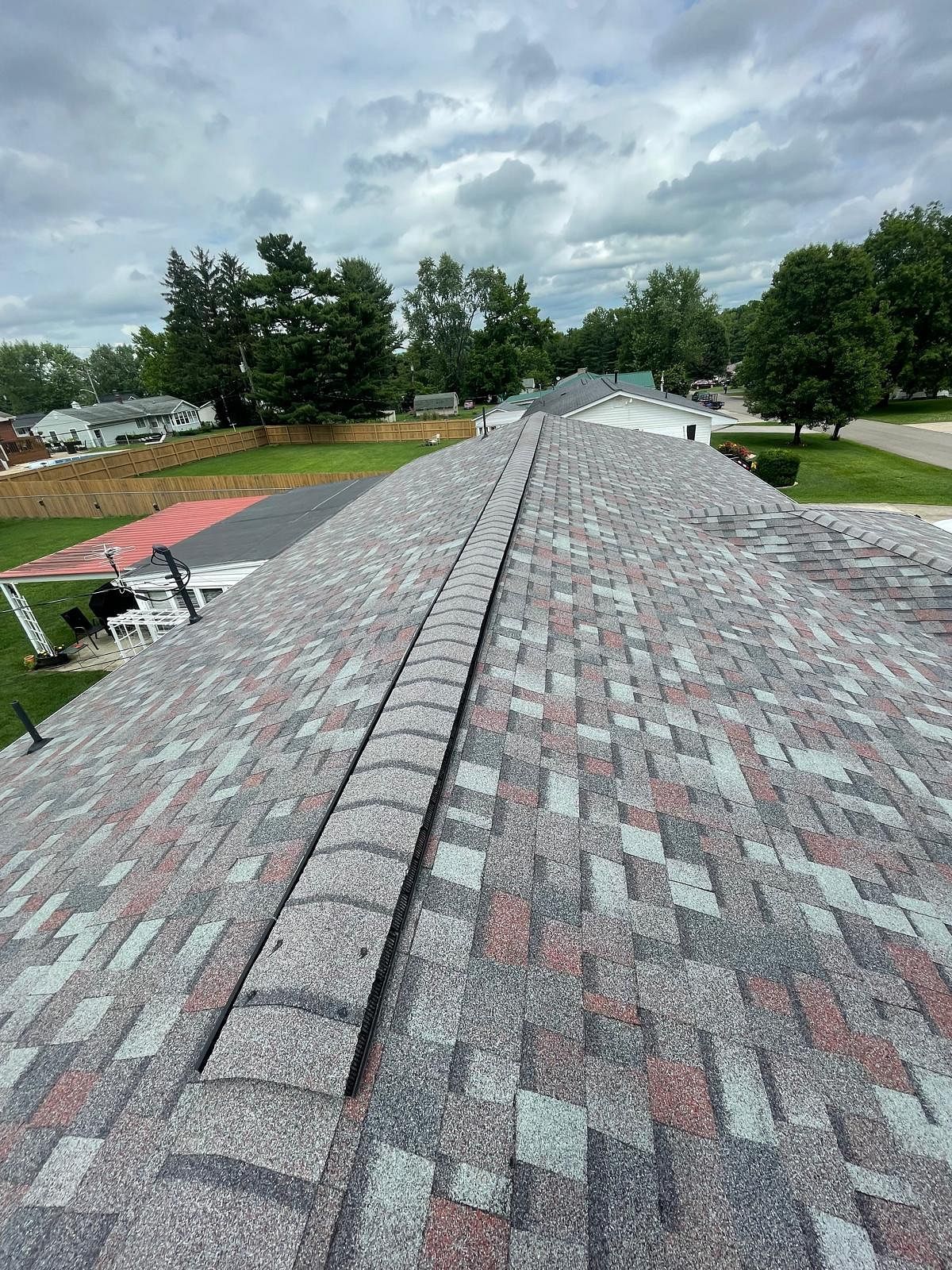
Roofing Myths That Are Quietly Costing You Money (And What You Should Know Before It Gets Expensive) Your roof is one of the most important parts of your home—but it’s also one of the most misunderstood. 🏠 Over the years, we’ve heard all kinds of myths that homeowners believe about their roofs—some of them sound harmless, but they could be silently draining your wallet and putting your home at risk. At Allstate Exteriors, we believe in honest, straightforward advice that helps you protect your home and your peace of mind. So, let’s bust a few of the most common roofing myths—once and for all. Myth # 1 : “If it’s not leaking, it must be fine.” This one gets people into trouble all the time. Just because you don’t see a leak today doesn’t mean your roof isn’t in trouble. Tiny cracks, lifted shingles, or failing flashing can allow water to sneak in—and by the time you notice a brown spot on the ceiling, there could already be mold, wood rot, or structural damage. 💡 The Truth: Early warning signs often go unnoticed from the ground. Regular inspections help you catch issues before they turn into expensive repairs. Myth #2: “I’ll just keep patching it.” It’s tempting to throw on a quick fix when something goes wrong. But if you find yourself calling for repairs every season… those patch jobs might be adding up to more than the cost of a full replacement. And worse? You’re still left with an old roof that isn’t protecting your home the way it should. 💡 The Truth: Sometimes a new roof is the smarter, longer-lasting investment—especially if you want better energy efficiency, curb appeal, and resale value. Myth #3: “All shingles are basically the same.” Nope. Not even close. Cheap shingles may look okay at first, but they don’t hold up to storms, heat, or high winds like quality products do. That can lead to faster wear, more frequent repairs , and lower energy efficiency for your home. 💡 The Truth: Premium shingles—like Owens Corning Duration® with SureNail® Technology—are engineered to stand up to real-world weather (not just look good in photos). We only install shingles we’d trust on our own homes. Myth #4: “My warranty will cover anything that goes wrong.” We hate to break it to you, but not always. A lot of warranties come with fine print. If your roof wasn’t installed properly—or doesn’t meet the manufacturer’s ventilation and pitch specs—you could unknowingly void your coverage. 💡 The Truth: A great warranty starts with proper installation. That’s why it’s important to work with a certified contractor (like us 😉) who understands the specs inside and out. Myth #5: “I can probably DIY the repair and save some money.” Unless you’ve got pro-level experience, specialized tools, and a strong sense of balance... we strongly advise against it. Roofing is dangerous work, and even small installation errors can lead to big problems later on. Plus, one wrong step can cause serious injury—or damage your roof even more. 💡 The Truth: Hiring a pro may cost a little more upfront, but it can save you thousands in future repairs—and a whole lot of stress. Myth #6: “That stain, sag, or moss? It’s just cosmetic.” We get it—it’s easy to brush off little things as "no big deal.” But when it comes to your roof, those small signs could be red flags. A sagging spot might mean waterlogged decking. Moss might be trapping moisture. And discoloration could be a hint that your shingles are wearing out. 💡 The Truth: What looks minor now can turn into a major headache later. A quick checkup from our team could save you time, money, and future frustration. Don’t Let These Roofing Myths Drain Your Wallet At the end of the day, your roof is your home’s first line of defense. Letting myths steer your decisions could leave you with expensive repairs, premature replacements, or a false sense of security. At Allstate Exteriors, we believe in educating our customers—not upselling them. Whether you’re dealing with a leak, unsure about your roof’s age, or just want a second opinion, we’re here to help. Family-owned. Platinum Preferred Contractor. 1000s of 5-star reviews. Schedule Your Free Estimate Now!
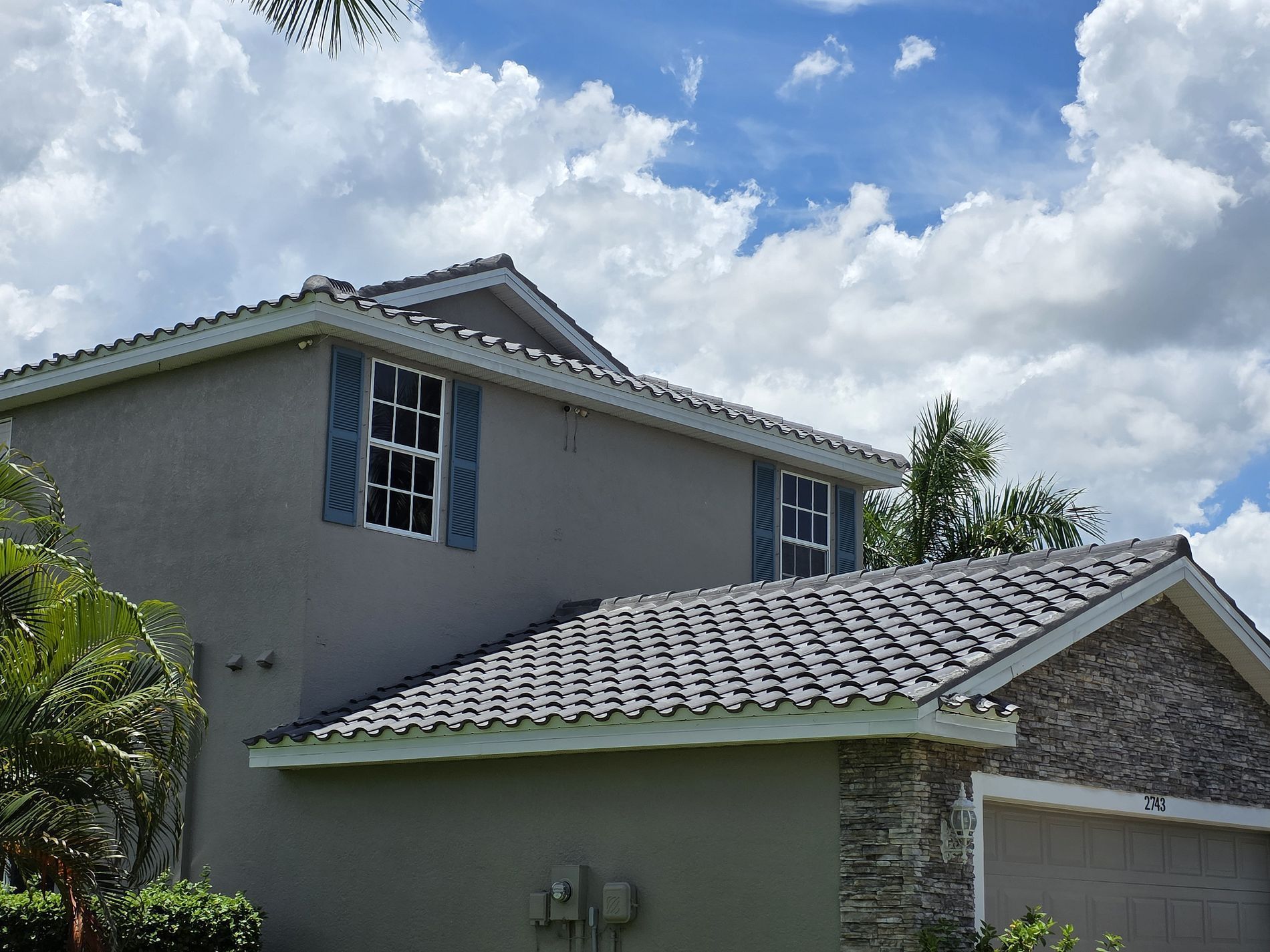
Let’s be real: hiring a roofer in Florida can feel a little overwhelming. Between hurricane season, constant humidity, salty air, and unpredictable storms—your roof does a lot of heavy lifting. And when it’s time for repairs or a full replacement, you need someone who won’t just show up—but will actually do the job right. Unfortunately, not every roofer out there has your best interest in mind. Florida sees its fair share of fast-talking “contractors” who chase storms, cut corners, and leave homeowners high and dry. At Allstate Exteriors, we’re proud to be a licensed, local, and family-owned company—and we believe every homeowner should feel confident in who they hire. So here’s your friendly, no-fluff guide to vetting a Florida roofer without getting burned. 1. Start With the Basics: License, Insurance, and Location If a contractor isn’t licensed and insured in the state of Florida, stop right there. Roofing in the Sunshine State isn’t like roofing in Ohio—there are building codes, wind zone requirements, and coastal challenges that only true local pros understand. Ask for: A valid Florida roofing license Proof of general liability & workers’ comp insurance A physical business location (not just a truck and a phone number) Tip: You can double-check a roofer’s license status at myfloridalicense.com. It only takes a minute—and could save you months of regret. 2. Local Experience Matters (Not Just “Years in Business”) Sure, someone might say they’ve been roofing for 20+ years—but how long have they been doing it in Florida’s climate? Big difference. A true Florida roofer knows: How salt air can corrode fasteners and flashing Why proper attic ventilation is non-negotiable in this heat Which materials hold up best during storm season 📸 Look for actual job photos, not just stock images. Ask about nearby projects. And don’t be afraid to request references from real Florida homeowners. 3. Understand Their Warranties (and Get It in Writing) If a contractor says “we guarantee our work,” ask them to show you the paperwork. ✅ Do they back both the materials and labor? ✅ Is it a 1-year quick fix or a long-term protection plan? ✅ What happens if something goes wrong down the road? Better yet, choose a roofer with manufacturer certifications (like Owens Corning Platinum Preferred status) that offer extended, transferable warranties. That’s peace of mind you can put on paper. 4. Check the Reviews—but Read Between the Lines Google and Facebook are great places to start, but don’t just look at the star rating. Read what people actually say. Do they mention: Good communication? Punctual crews who clean up after themselves? The company standing behind its work, even months later? Look for consistency in feedback—and how the company responds to any concerns. A roofer that listens, learns, and follows through? That’s the one. 5. Notice How They Talk to You This one’s huge. A solid contractor won’t rush you, confuse you with jargon, or pressure you into signing something "today only." They’ll take time to walk you through materials, pricing, and process—without the games. 🚫 Red flags: Vague answers or pushback when you ask questions High-pressure sales tactics “We’ll get started once you pay in full…” ✅ Green flags: Clear timelines Transparent estimates Friendly, patient conversations 6. Be Smart About Payments A small deposit is totally normal—especially when special materials are being ordered. But a contractor asking for full payment upfront? That’s a no-go. Best practices: Use a check or credit card (not cash) Don’t pay in full until the job is complete and you’re satisfied Make sure your payment schedule is outlined in writing If they avoid written contracts or try to “keep it simple” by skipping paperwork—run the other way. 7. Choose a Roofer Who Treats Your Home Like Their Own At the end of the day, your roof is protecting everything you love. Don’t trust just anyone to care for it. At Allstate Exteriors, we: Are fully licensed & insured in Florida Use local crews, never mystery subcontractors Show up on time, clean up after ourselves, and communicate every step of the way Treat your home with the same care we’d treat our own We believe in doing the right thing—even when no one’s looking. Ready for a second opinion or just getting started? We offer free, no-pressure estimates—with flexible scheduling and real people who care. Whether you're in Cape Coral, Orlando, or anywhere in between, we’re here to help. Call us today or schedule online
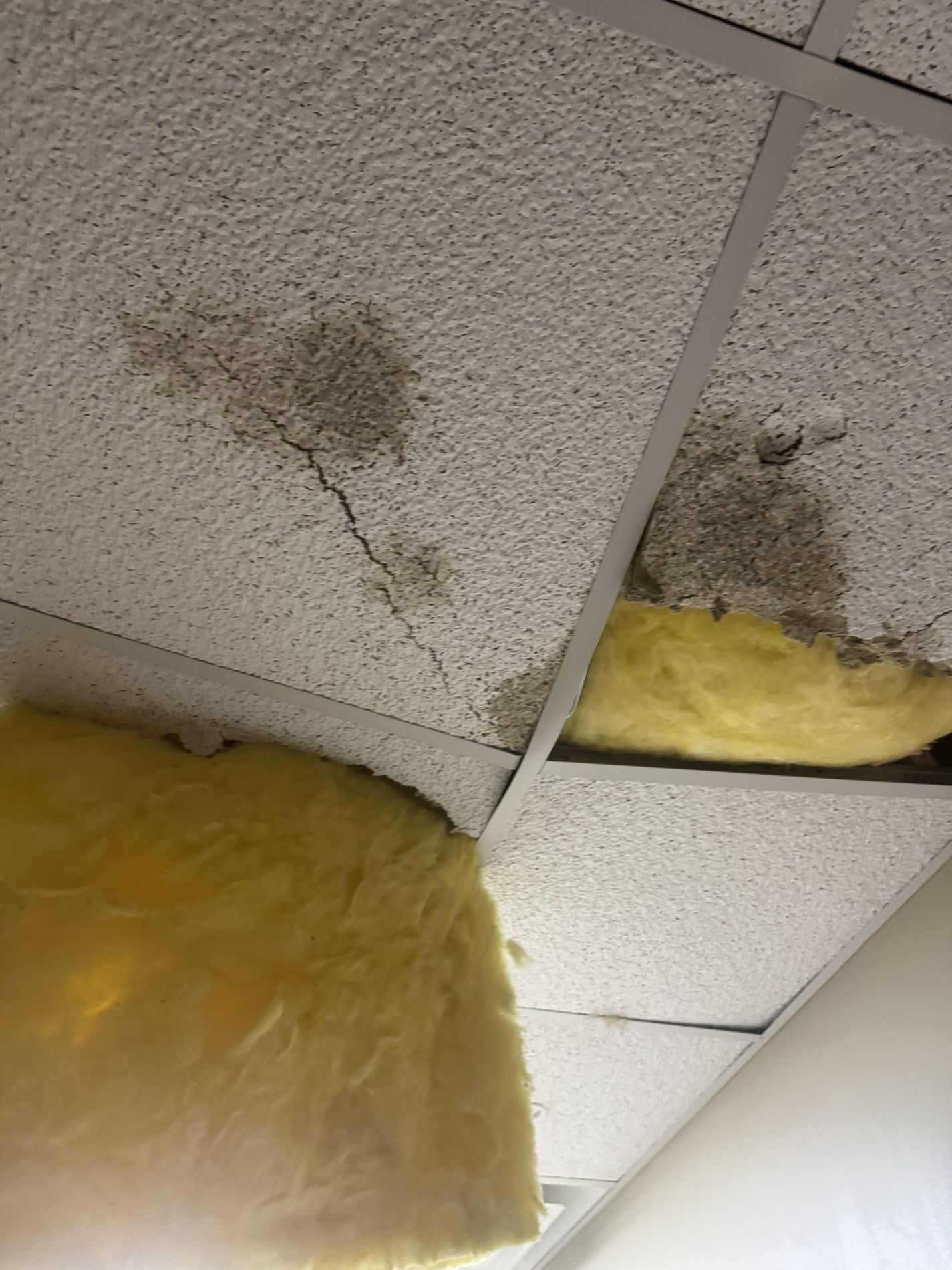
Picture this: you notice a small water stain on your ceiling. Maybe it’s barely noticeable, just a faint outline. You make a mental note to deal with it later… but by the time “later” rolls around, that small leak could have invited an unwanted guest into your home—mold. It’s a homeowner’s nightmare, and it can sneak up quicker than you'd expect. So, let’s get to the big question: how long does it take for mold to form after a roof leak? The answer: as little as 24 to 48 hours. Mold Doesn’t Waste Time Once moisture finds its way inside—whether it’s from a slow roof drip or a major storm-related leak—it gets to work. And mold spores? They're already in the air just waiting for the right conditions to grow. That’s why even a short delay in addressing a leak can lead to big problems. Warm, damp, and dark areas (like your attic or behind your drywall) become the perfect breeding ground. So while you’re going about your day, mold might already be spreading—quietly, but quickly. What Makes Mold Grow So Fast? A few key ingredients fuel mold growth, and unfortunately, a roof leak provides most of them: Moisture: This is mold’s #1 requirement. A leaky roof introduces just enough water to start the process. Warmth: Especially during the warmer months, mold grows faster in cozy, humid conditions. Poor ventilation: Closed-off spaces like attics or between walls don’t dry out easily. Porous materials: Wood, drywall, and insulation soak up water like a sponge, making them ideal places for mold to dig in. How to Know if Mold is Already Forming You might not see it right away, but mold often leaves some pretty obvious clues behind. Keep an eye (and nose) out for: A musty, sour, or damp smell Brown or yellow stains on ceilings or walls Peeling paint or bubbling drywall Fuzzy patches or discoloration (black, green, gray, or white) Worsening allergies, coughing, or sneezing indoors Even if you’re not 100% sure mold is present, trust your instincts—if something feels off, it’s worth getting checked out. What to Do If You Suspect Mold The key with mold is speed. The sooner you act, the easier (and cheaper) it is to fix. Stop the leak at its source. Bring in a trusted roofing professional to inspect the damage and make repairs. Dry out the affected area. Use fans or dehumidifiers to reduce moisture and improve airflow. Schedule a mold inspection. If you see or smell signs of mold, a professional can determine the extent and offer safe removal solutions. Prevent it from happening again. Regular roof inspections and gutter maintenance can go a long way in keeping moisture out of your home. How Allstate Exteriors Can Help At Allstate Exteriors, we’ve seen firsthand how fast mold can turn from a minor issue to a major problem. We take roof leaks seriously—because your health, your home, and your peace of mind matter. Serving both Ohio and Florida , our experienced team is here to: Quickly identify the source of the leak Recommend the best repair solution Offer guidance on next steps if mold is suspected Help prevent future leaks through expert maintenance and roofing systems We also offer free estimates and flexible scheduling, including morning, afternoon, evening, and Saturday appointments—so you don’t have to rearrange your life to protect your home. Final Thoughts: Don’t Wait Until It’s Too Late The scariest thing about mold? You often can’t see it until the damage is already done. If you notice any signs of a roof leak—no matter how small—don’t wait. Mold doesn’t give second chances, but we do. Let’s make sure your home stays dry, safe, and healthy. Reach out today for a free roof inspection.
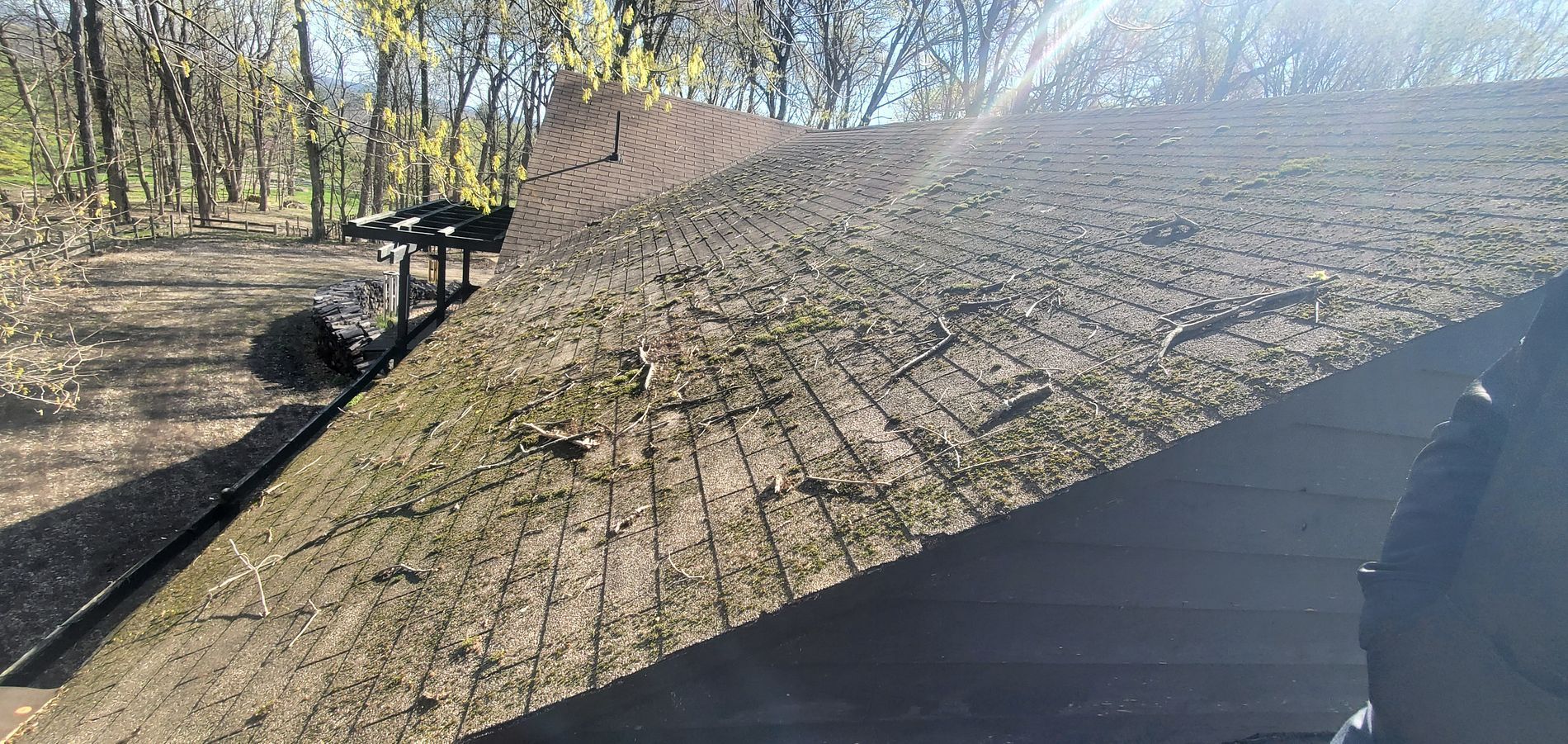
I f you’re a homeowner in Columbus, Ohio , you know how important a reliable roof is — especially with our wild weather swings. One day it’s sunny and 75, the next we’re dealing with hail, wind, and thunderstorms. And unfortunately, we’ve seen far too many homes across Central Ohio with roofing jobs that just weren’t done right. At Allstate Exteriors, we’ve repaired and replaced countless roofs that were rushed, poorly installed, or simply not up to code. So how do you know if your roof is one of them? Good news — you don’t need a ladder or a background in construction. All it takes is about 60 seconds from your driveway. Here’s how to spot a bad roofing job, Columbus-style. 1. Crooked or Uneven Shingles From the ground, take a good look at your roof. Are the shingles lined up cleanly? Do they look flat and uniform? If they’re bumpy, crooked, or spaced unevenly, it’s a sign that the installer didn’t use proper chalk lines — or simply rushed the job. 👉 Tip: A poorly aligned roof is one of the most common issues we see during roof inspections in Columbus. 2. No Drip Edge Along the Roofline This is a detail many homeowners don’t know to look for — but it matters. A drip edge is a thin metal strip that runs along the edge of your roof and helps direct water into your gutters (instead of down the side of your home). 🚫 No drip edge? That’s a shortcut no reputable Columbus, OH roofing contractor should take. 3. Exposed Nail Heads Shiny nail heads peeking out of your shingles? That’s not just ugly — it’s dangerous. Nails should always be secured under the shingle above, protected from the elements. 💦 In Ohio’s rainy climate, exposed nails can lead to fast-moving leaks and water damage. This is a red flag during any roof inspection. 4. Sagging Spots or Dips in the Roof Roofs should look solid and level. If you see spots that appear to sag, dip, or bow, it could mean there’s damage beneath the surface — like rotting decking or poor structural support. ⚠️ In Central Ohio, this can also be a sign of storm damage that wasn’t properly repaired. If you see it, get it checked right away. 5. Missing or Sloppy Flashing Flashing is the metal that seals vulnerable areas around chimneys, vents, and skylights. It should be clean, tightly sealed, and in good condition. ❌ If it looks messy, rusted, or is missing altogether, water can (and will) sneak in. That’s a big problem — especially during Ohio’s stormy seasons . 6. Your Gut Tells You Something’s Off Sometimes, you just know something doesn’t look right. If your roof looks wavy, mismatched, or just plain off — trust your instincts. A quality Columbus roof replacement should look clean, secure, and professionally installed. If it doesn’t, it might not be. 🛡️ What a High-Quality Roofing Job Should Look Like in Columbus Here’s what you should expect when you work with a trusted Columbus roofing company like Allstate Exteriors: Shingles that are straight, clean, and evenly spaced No exposed nails, missing parts, or sloppy details Proper underlayment, flashing, and ventilation A full roofing system — not just shingles Backed by solid warranties and local experience Don’t wait until your roof starts leaking or falling apart. At Allstate Exteriors, we offer free roof inspections in Columbus, Ohio — with no pressure, no sales pitch, just honest feedback. We’re local, family-owned, and proud to help our Central Ohio neighbors protect their homes with top-notch workmanship and customer care. 📍 Proudly Serving Columbus, Dublin, Hilliard, Grove City, and surrounding areas 📅 Schedule your free roof inspection today! 🔧 Residential Roofing | Roof Repair | Roof Replacement | Storm Damage Experts
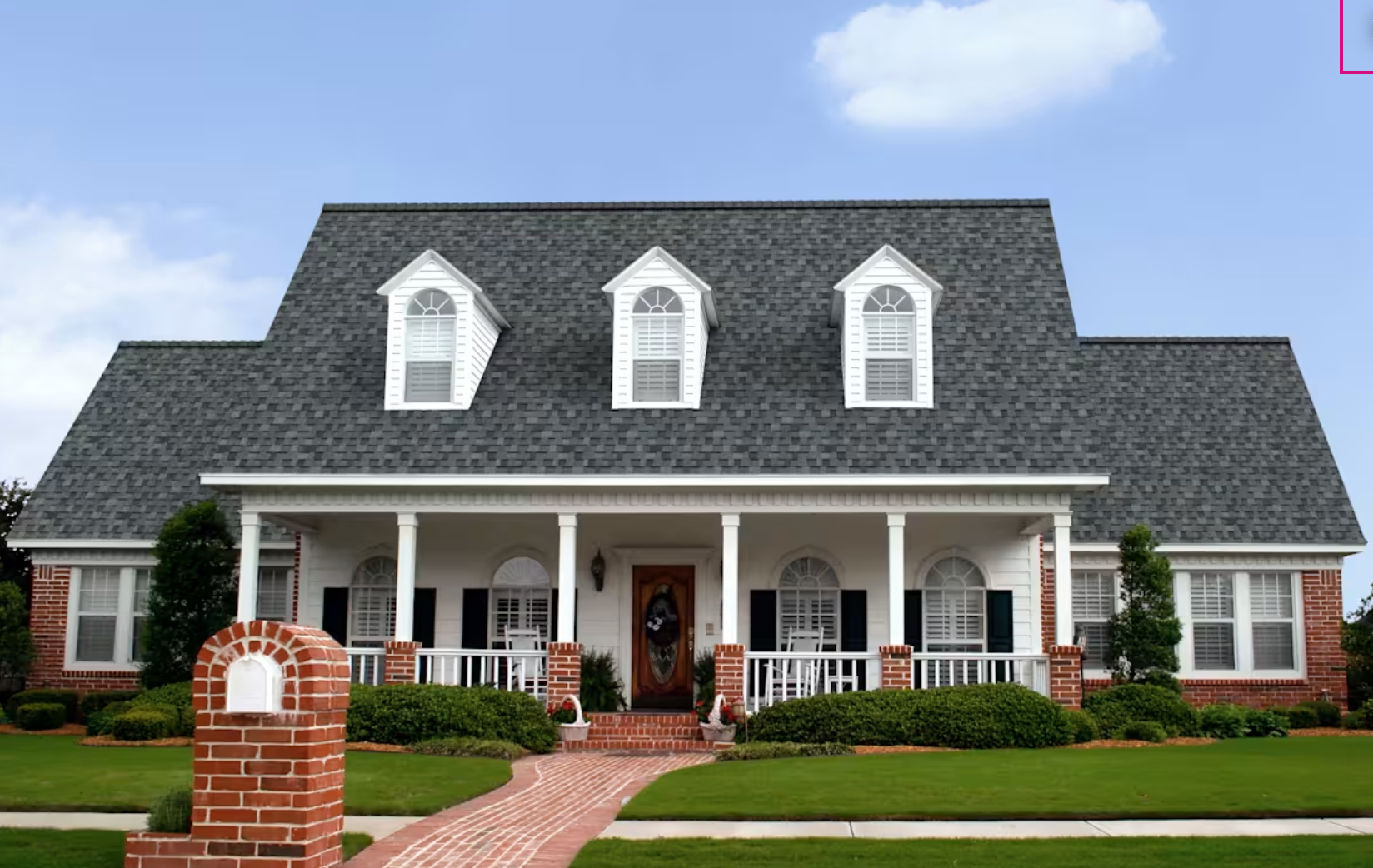
The Roof That Does It All: Why We Trust Owens Corning TruDefinition® Duration® Shingles with SureNail® Technology Your roof is one of the most important parts of your home—but it's also one of the most overlooked. It works hard every single day to shield your family from rain, wind, heat, and hail. That’s why when it comes time to replace your roof, it’s not just about choosing something that “gets the job done.” It’s about choosing a roofing system that looks beautiful, performs under pressure, and is backed by a name you can trust. At Allstate Exteriors, we believe your roof should give you more than protection—it should give you peace of mind. That’s why we proudly install Owens Corning TruDefinition® Duration® shingles, powered by their signature SureNail® Technology. It’s one of the most advanced—and dependable—shingles on the market today. Why TruDefinition® Duration® Shingles Are a Step Above We’ve worked with a lot of roofing materials over the years, and let us tell you—not all shingles are created equal. Duration® shingles stand out for three simple reasons: style, strength, and staying power. 🌟 Bold Style That Turns Heads Owens Corning’s TruDefinition® shingles are designed with color in mind. These aren’t your basic, flat-looking shingles—they have rich dimension, vibrant contrast, and deep shadow lines that give your roof a more high-end, textured appearance. It’s a small upgrade that makes a big difference in curb appeal. Whether you love a classic black or want to go bold with colors like Driftwood or Desert Tan, there’s a perfect match for every home style. 💪 SureNail® Technology: Small Detail, Big Impact SureNail® Technology might not be something you can see from the ground—but it makes all the difference once the shingles are on your roof. So, what is it? It’s a reinforced fabric strip embedded in the nailing area of each shingle. That simple-looking strip is engineered to: Help roofers nail with precision Provide a stronger, longer-lasting hold Boost wind resistance to 130 MPH Create triple-layer protection right where your roof needs it most This added layer of strength is especially important here in Ohio and Florida, where weather can be unpredictable and severe. Why We Recommend It at Allstate Exteriors Here’s the truth: we wouldn’t install something on your home that we wouldn’t trust on our own. And we trust Owens Corning. As an Owens Corning Platinum Preferred Contractor, we’ve gone through rigorous training, quality checks, and ongoing education to earn that title—and it’s one we take seriously. It allows us to offer: Extended warranty options backed by Owens Corning Exclusive access to their most advanced products Confidence that your roof is built to last We’ve seen these shingles stand up to hailstorms, high winds, and years of wear. And time and time again, they come out looking great and performing even better. A Roofing Experience That Feels Different Replacing your roof doesn’t have to feel stressful. At Allstate Exteriors, we focus on clear communication, honest recommendations, and professional craftsmanship. Our team walks with you every step of the way—from the first consultation to the final cleanup. And with Owens Corning TruDefinition® Duration® shingles, you’re not just getting a beautiful roof—you’re getting a system that’s designed to protect your biggest investment for years to come. Let’s Build Something Strong Together If you're ready for a roof that checks every box—style, performance, and long-term value—we’re here to help. We’d love to show you color samples, answer your questions, and get you started with a free estimate. 📍 Proudly serving homeowners in Ohio and Florida 🛠️ Owens Corning Platinum Preferred Contractor 📞 Call us today

When it comes to choosing a contractor for your home, there’s something reassuring about working with a company that’s not just experienced — but rooted in family values. At Allstate Exteriors, we’re proud to be a family-owned and operated business that has served homeowners for more than 20 years. But what does that really mean for you? It means your home isn’t just another job to us. It’s personal. 🏠 Built on the Values That Still Guide Us Today Allstate Exteriors was built on a foundation of strong values that continue to guide everything we do today: Care about others. Always do the right thing, even when no one’s looking. Be a team player. Strive to be your personal best. These aren’t just words on a wall — they’re the principles we bring to every project, every home, and every interaction. Being family-owned means we hold ourselves to a higher standard, because our name and reputation are on the line — and we wouldn’t have it any other way. 💬 A Personalized, Hands-On Experience Unlike national chains or high-volume contractors, we don’t treat you like a number. From the first phone call to the final walk-through, we deliver a truly personal experience — rooted in genuine care and honest communication. We take the time to understand your goals, explain your options, and guide you through the process. Whether you’re dealing with storm damage or planning an upgrade, you’ll feel supported every step of the way. 🧰 Quality Work That Reflects Our Commitment After 20+ years in business, one thing remains true: we never cut corners. Every roof we install, every siding panel we place, and every gutter we replace is done with precision and pride. Because when you’re family-owned, your name is your brand — and your word matters. We use premium materials, hire skilled professionals, and stand behind our work with strong warranties and transparent communication. We believe that striving to be your personal best means never settling for “just good enough.” 👨👩👧👦 A Team That Feels Like Family Our culture is built on teamwork — from our office staff to our crews in the field. Many of our team members have been with us for years, and that longevity shows in the way we work together and serve our customers. We show up on time. We clean up after ourselves. We treat your property with care. And if something isn’t right, we fix it — because doing the right thing, even when no one’s looking, is the only way we do business. 🌎 Proudly Serving Ohio and Florida Communities From the snow and storms of Ohio to the heat and humidity of Florida, we understand the different challenges homeowners face depending on their climate. Our team is trained and equipped to recommend the right materials and solutions for your specific region — so your home stays protected year-round. Whether you're in a quiet rural town or a busy coastal neighborhood, we’re committed to delivering top-notch service with hometown care. 💡 Why Being Family-Owned Still Matters In an industry where personal touch is often lost, being family-owned helps us stay focused on what matters most: people. We’re not just installing roofs or siding — we’re building trust, protecting homes, and showing up for our communities. When you work with Allstate Exteriors, you’re choosing a company that: Brings over two decades of industry experience Operates with heart, honesty, and teamwork Lives by values, not sales quotas There for you long after the job is done Ready to Experience the Allstate Exteriors Difference? Whether you need a roof replacement, new siding, updated gutters, or storm damage repair — we’d be honored to serve you. Let us show you what it’s like to work with a contractor who treats your home like their own. 👉 Contact us today for a free inspection or consultation — we’re here when you need us, like family should be.
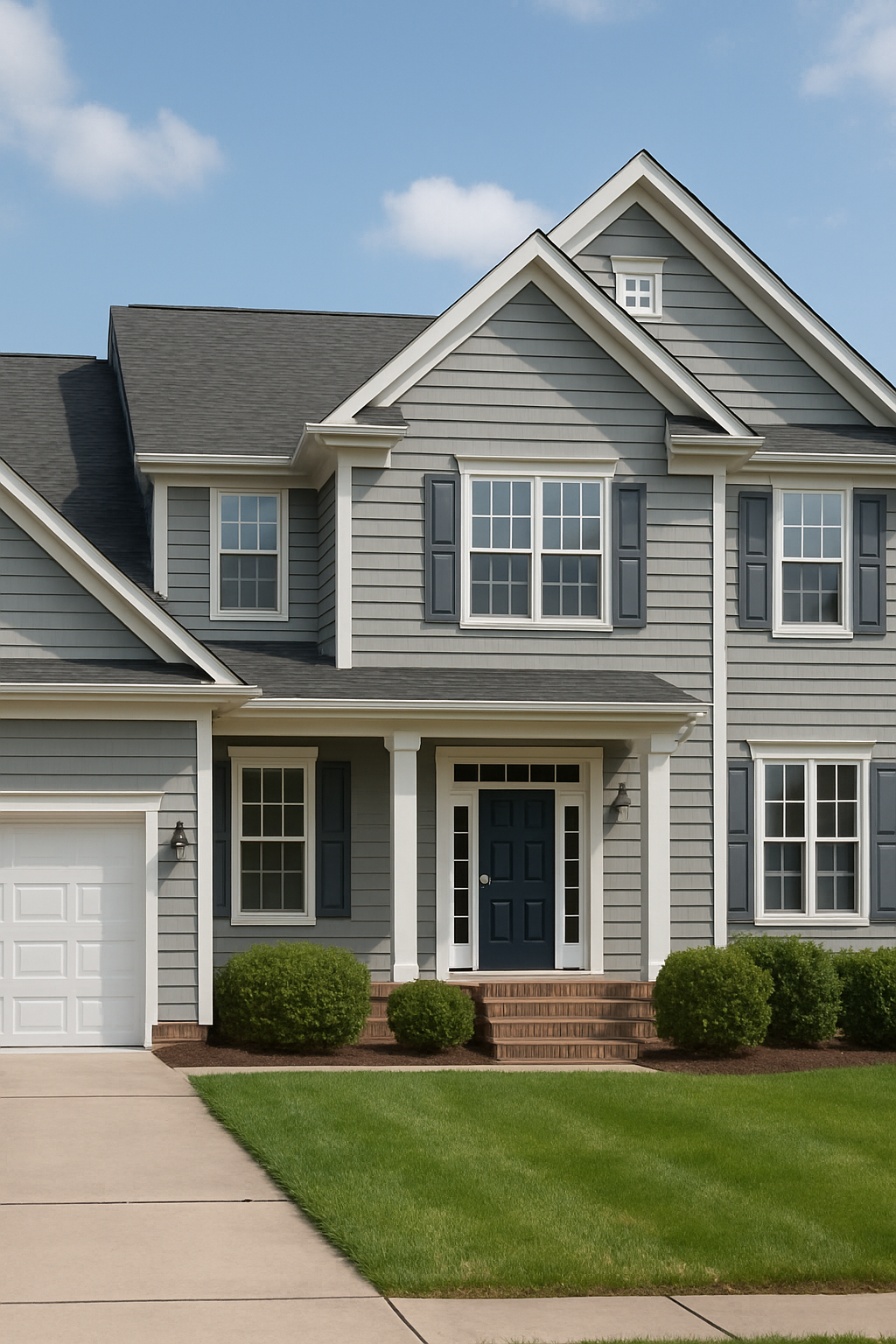
At Allstate Exteriors, we take pride in delivering exceptional roofing solutions that are built to last. One of the ways we demonstrate that commitment is by holding the title of Owens Corning Platinum Preferred Contractor—a designation that only the top roofing companies in the nation can claim. So, what does it really take to earn that status? And why should it matter to you as a homeowner? Let’s break it down. It’s Not a Badge You Can Just Buy Becoming an Owens Corning Platinum Preferred Contractor isn’t something you apply for online and get overnight. It’s invitation-only, and it’s reserved for roofing contractors who consistently meet the highest standards in workmanship, professionalism, and reliability. Out of all roofing companies in the U.S., only about 1% are selected for this elite program. What Owens Corning Looks for (and What We Delivered) To be selected as a Platinum Preferred Contractor, Owens Corning evaluated Allstate Exteriors on several strict criteria: ✅ Proven Longevity – We’ve been serving customers for over two decades with a track record of success. ✅ $1M+ Liability Insurance – To protect our customers and our team on every project. ✅ Workers’ Compensation Coverage – Meeting or exceeding all local and state requirements. ✅ Strong Financial Standing – No bankruptcies, consistent sales volume, and operational excellence. ✅ Impeccable Reputation – Verified through customer feedback and our A+ BBB rating. ✅ Workmanship Excellence – Our installations are reviewed and approved by Owens Corning inspectors. ✅ Ongoing Training – Our team regularly participates in manufacturer training to stay on the cutting edge of roofing technology and best practices. We don’t just meet these requirements—we exceed them. And that’s what earned us a place in this elite group. What That Means for You When you hire Allstate Exteriors, you're not just getting a contractor—you’re getting a Platinum Preferred Contractor backed by Owens Corning. Here’s what that means for your project: 🏠 Extended Warranties – We’re able to offer the exclusive Platinum Protection Limited Warranty, which covers workmanship for as long as you own your home. That’s peace of mind you won’t get with just any contractor. 🛠 Total Protection Roofing System – You get access to Owens Corning’s full system of products designed to work together for maximum durability, energy efficiency, and curb appeal. 📈 Higher Resale Value – That transferable warranty is a major selling point if you decide to sell your home down the road. 💬 Unmatched Customer Service – From your first phone call to your final inspection, we’re committed to delivering a 5-star experience every step of the way. Why Allstate Exteriors? There are thousands of roofing contractors out there—but only 1% earn the Platinum Preferred title. At Allstate Exteriors, we’re proud to be part of that 1%. We’ve earned Owens Corning’s highest distinction because we hold ourselves to the same standard they do: excellence in every detail. If you’re looking for a roofing contractor who’s been vetted by one of the most trusted names in the industry, we’d be honored to earn your business. Contact us today to schedule your free inspection and see the Platinum difference for yourself.
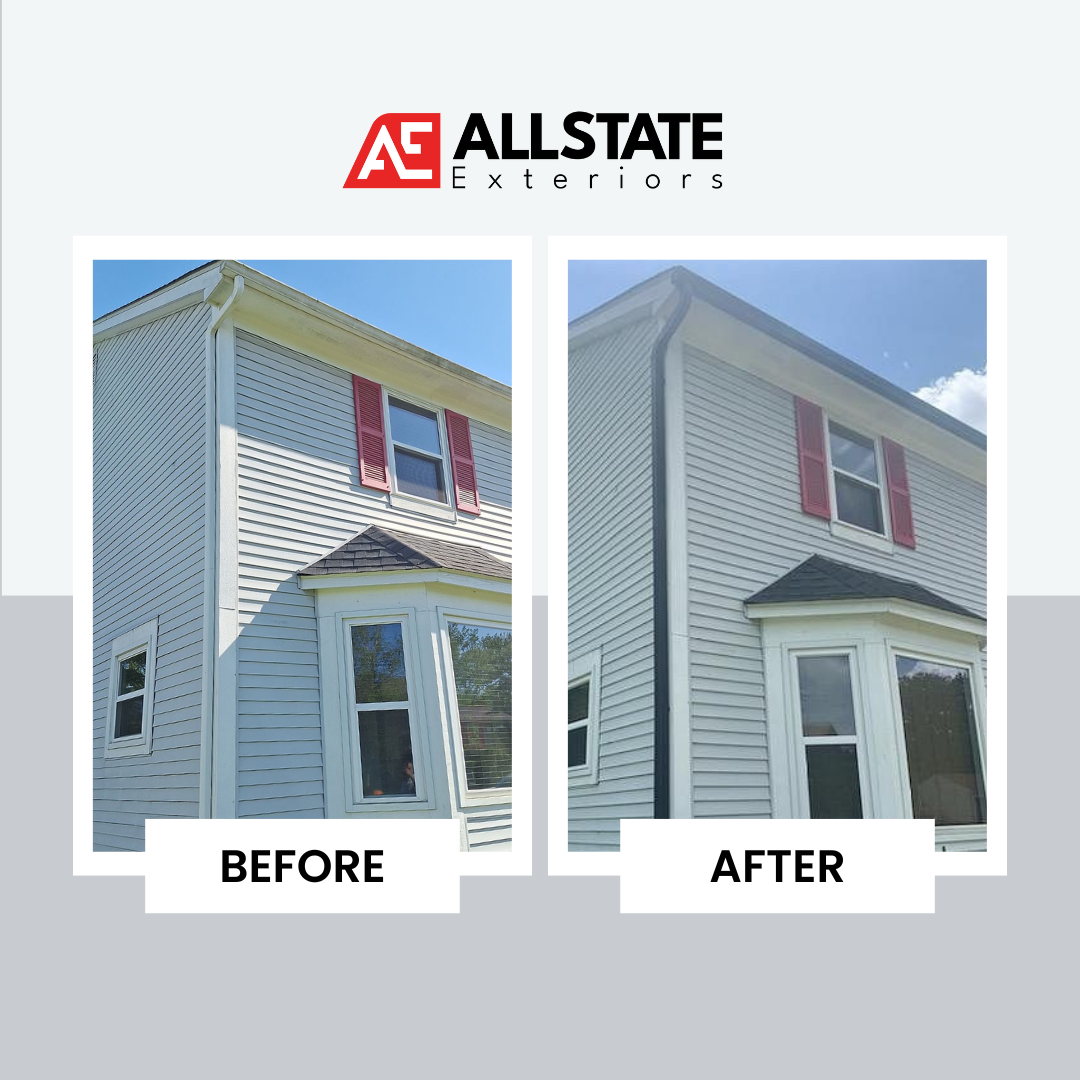
Keep Water Flowing and Big Problems Away Your gutters may not be the flashiest feature of your home, but when they’re working right, you probably don’t even notice them. And that’s exactly the point! A good gutter system quietly does the heavy lifting—protecting your roof, foundation, landscaping, and more from the damage water can cause. But when things go wrong? It doesn’t take long for a small gutter issue to become a much bigger (and more expensive) headache. At Allstate Exteriors, we’ve seen it all—from clogged-downspouts that flood basements to sagging gutters hanging on by a thread. Below, we’re sharing some of the most common gutter problems homeowners face—and the simple solutions to help you avoid serious water damage and costly repairs. 1. Clogged Gutters The Problem: Leaves, pine needles, twigs, and even roofing granules can quickly pile up in your gutters—especially in the fall or after heavy storms. Over time, these blockages prevent water from draining properly. Why It Matters: When water can’t flow through your gutters, it spills over the sides and starts soaking into places it shouldn’t—like your fascia boards, soffits, siding, or even your basement. The Solution: Gutter cleaning should be part of your regular home maintenance, ideally in spring and fall. Want a lower-maintenance option? Gutter guards help keep debris out and water flowing. 2. Sagging or Pulling Gutters The Problem: If your gutters are starting to dip, bend, or pull away from your home, it usually means they’re carrying too much weight (often from debris or standing water) or the fasteners have come loose. Why It Matters: Sagging gutters don’t just look bad—they also fail to channel water where it needs to go. Worse, they can eventually collapse or damage your home’s trim. The Solution: Reinforce the hangers or brackets and make sure the gutter slope is correct. If the gutters are old or badly damaged, a professional replacement might be the safest (and smartest) move. 3. Leaking Gutters or Seams The Problem: Leaks at seams, holes, or cracks in the gutters may seem small—but they’re often signs of aging materials or poor installation. Why It Matters: Over time, even a slow drip can erode your landscaping, damage your home’s foundation, or cause mold and mildew near your walls. The Solution: Apply gutter sealant to small cracks or leaks, or replace damaged sections. Looking for a leak-free future? Seamless gutters are a great investment that eliminate the most common leak points. 4. Incorrect Gutter Pitch The Problem: Gutters need a slight downward slope to guide water toward the downspouts. If the pitch is off—even just a little—water can start pooling. Why It Matters: Standing water can rust your gutters, attract pests (hello, mosquitoes!), and eventually cause them to sag or overflow. The Solution: Rehang the gutters or adjust the brackets to ensure proper pitch. As a rule of thumb, gutters should slope about ¼ inch for every 10 feet. 5. Downspout Dilemmas The Problem: Downspouts that are clogged, disconnected, or too short can’t do their job—which is to direct water away from your home. Why It Matters: If water pools near your foundation, you risk basement leaks, cracks, and major structural issues over time. The Solution: Make sure your downspouts are clear and properly connected. They should extend 4 to 6 feet away from your home. You can also add splash blocks or underground drainage for extra protection. 6. Ice Dams and Winter Woes The Problem: In colder climates, snow and ice can build up in your gutters, preventing water from draining. This leads to ice dams that force water back under your roof shingles. Why It Matters: Ice dams can cause roof leaks, damage to your insulation, and even mold growth inside your home. The Solution: Keep your attic properly insulated and ventilated to minimize heat loss that melts snow unevenly. In areas prone to ice, you might want to invest in heated gutter systems or schedule regular winter maintenance. Your gutters may not demand much attention—but when they do, it’s best to listen. Ignoring minor issues can lead to costly water damage, mold, foundation cracks, and more. At Allstate Exteriors, we provide expert gutter inspections , repairs, and full gutter replacement services for homeowners across Ohio and Florida. Whether you're dealing with a leaky joint or an aging system that just can't keep up, our team is here to help. Contact us today for a free estimate!
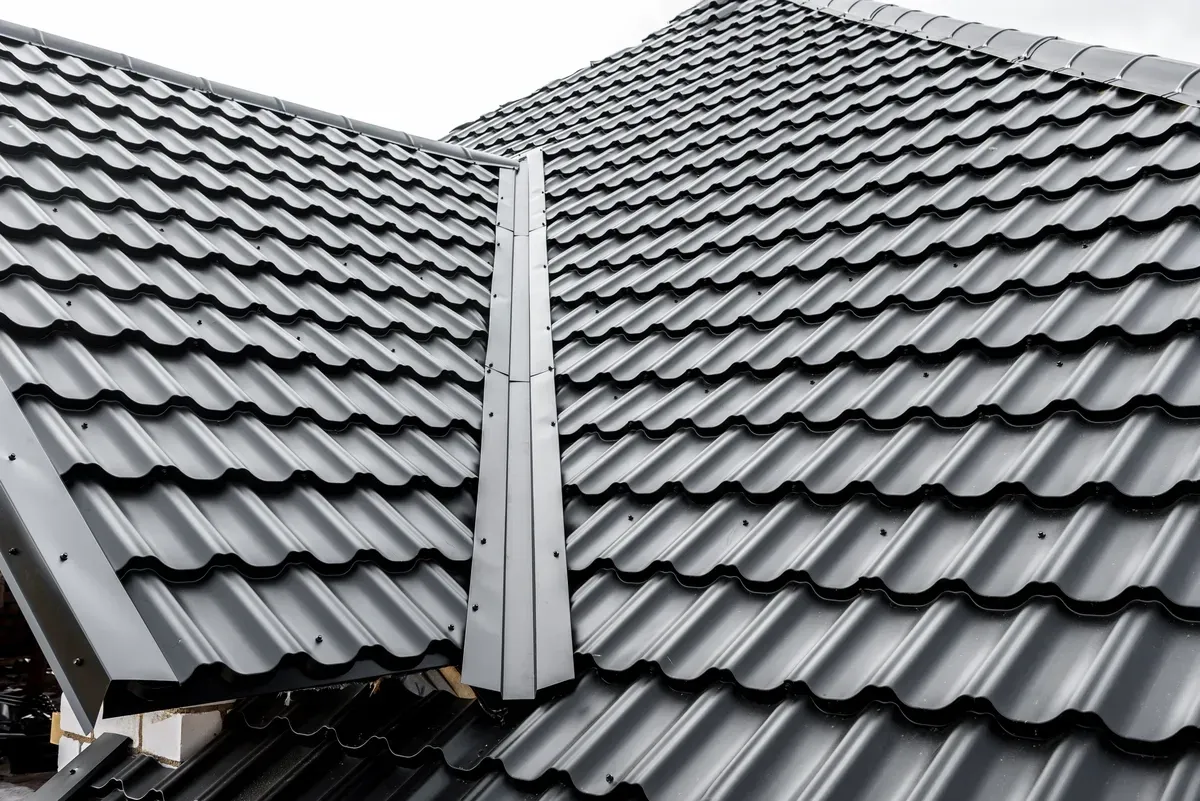
Metal Roofs That Look Like Shingles At Allstate Exteriors, we know homeowners want more than just protection—they want a roof that looks great, lasts for decades, and stands up to the elements. That’s why we’re proud to offer metal roofs that look just like traditional shingles. You no longer have to choose between durability and style. These modern roofing systems give you the aesthetic of shingles with the long-lasting performance of metal. Why More Homeowners Are Choosing Metal Roofs That Look Like Shingles ✅ Long-Term Durability Our shingle-style metal roofs are built to last 50+ years, easily outlasting traditional asphalt options. They resist wind, hail, heavy rain, and snow—making them ideal for both Florida hurricanes and Ohio winters. 💡 Energy Efficiency Metal reflects solar heat, helping you save on cooling costs—especially important in Florida's heat. It’s a smart move for energy-conscious homeowners. 🌱 Environmentally Friendly Most metal roofing materials are made from recycled content—and they’re recyclable again at the end of their life. 💸 Cost-Effective Over Time While the upfront cost may be higher than asphalt shingles, you’ll save money in the long run with lower maintenance, fewer repairs, and longer life. Curb Appeal Without Compromise Shingle-style metal roofs match beautifully with many home styles—from classic Craftsman homes to modern farmhouses. 🏡 Boost Your Home's Value A sleek, durable roof increases your resale value and curb appeal. Many of our clients say their neighbors can’t even tell it’s metal—until they mention it. Types of Shingle-Look Metal Roofs We Install At Allstate Exteriors, we offer a wide range of metal roofing options tailored to your style and budget: 🔷 Metal Shingle Panels Made from aluminum, steel, or copper, these panels closely replicate the look of architectural shingles. 🌊 Corrugated Panels with a Shingle Profile A textured, modern twist that’s perfect for rustic or industrial-chic homes. 📐 Standing Seam with Shingle-Inspired Design Clean lines meet traditional texture—great for contemporary homes with a classic touch. 🪵 Shake & Tile Metal Replicas Get the look of cedar shakes or Spanish tile—without the maintenance headaches. Design Options & Customization Whether you want subtle, earthy tones or a bold color pop, we’ll help you choose: Color options from matte black to terracotta Embossed textures for added realism Panel sizes to match your home’s style Professional Installation & Maintenance 🔧 Expert Installation You Can Trust Metal roofing requires precision. Our certified crews ensure proper underlayment, fastener placement, and ventilation—so your roof performs and looks its best. 🧽 Low Maintenance, Long-Term Payoff We recommend: Annual roof inspections Removing debris and checking for scratches Occasional re-coating to keep it looking like new What’s the Cost? We offer competitive pricing with financing options available. Most metal roofs come with 30–50 year warranties—some even lifetime. When properly maintained, you may never need another roof again. Real-World Results: See the Difference Our clients are often amazed at the before-and-after transformation. We’ve installed metal roofs that blend beautifully with historic homes, commercial buildings, and brand-new properties across Ohio and Florida. Let’s Get Started 🏠 Serving homeowners across Ohio and Florida 🔍 Free, no-pressure inspections 📅 Flexible scheduling that works for you 💬 Friendly, knowledgeable team ready to help 📞 Call Allstate Exteriors today or Schedule Your Free Estimate Online →
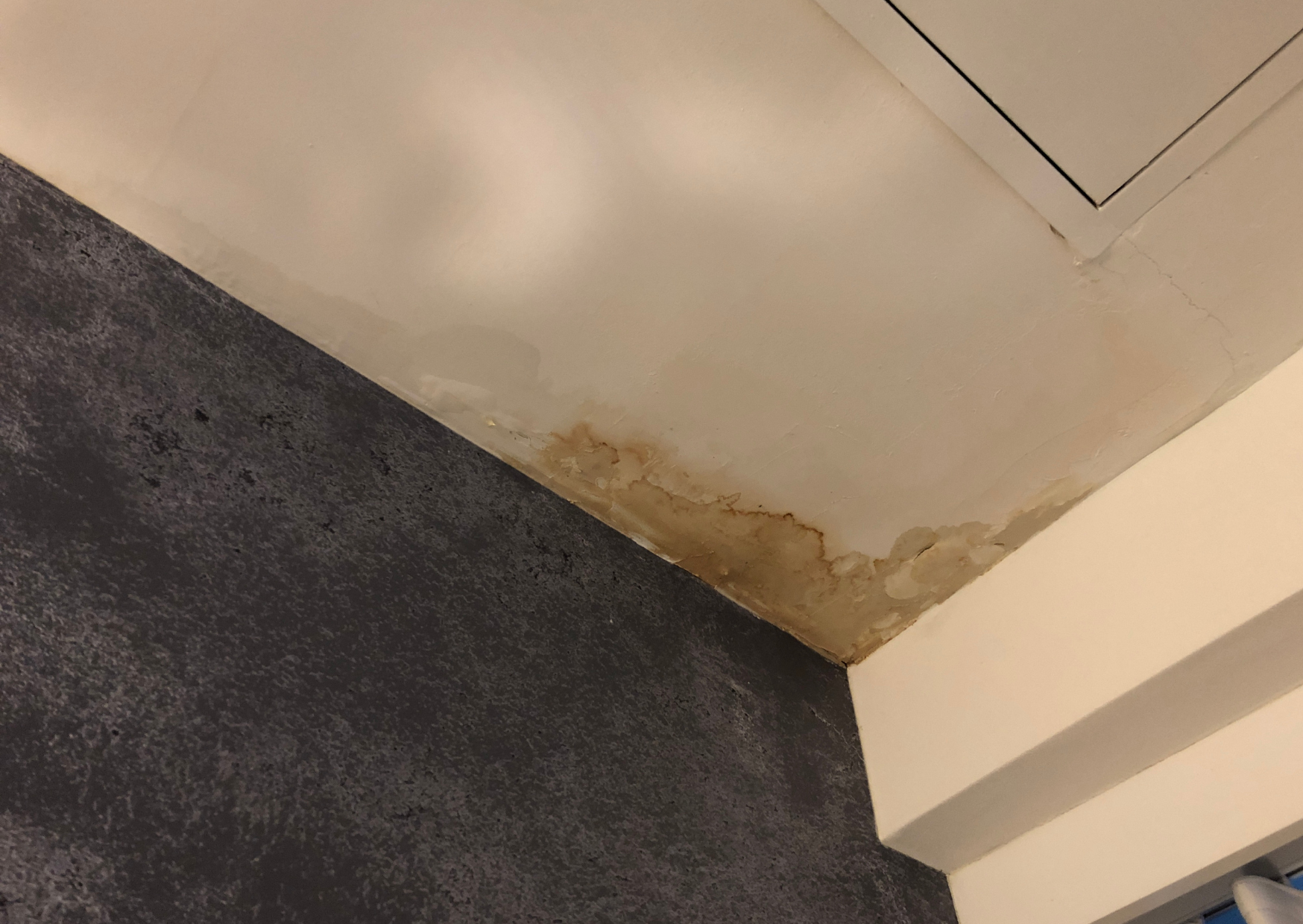
Water Dripping from Your Ceiling? Here’s What It Really Means—and Why You Shouldn’t Wait to Fix It Picture this: you’re relaxing at home when you notice a faint stain on your ceiling… or worse, you hear the slow drip drip drip of water. If you're like most homeowners, your first instinct might be to ignore it and hope it stops on its own. Unfortunately, ceiling leaks don’t go away—they get worse. At Allstate Exteriors, we’ve seen it all, and we’re here to help you understand what a ceiling leak could mean for your home—and what to do about it before it turns into a much bigger, more expensive problem. What Does a Ceiling Leak Really Mean? A ceiling leak is almost never just a ceiling leak. It’s a warning sign that something behind the scenes isn’t right—and it’s usually related to your roofing system, gutters, or even attic ventilation. Common causes include: Damaged or missing shingles Improper roof installation Clogged or overflowing gutters Worn flashing or cracked vent boots Ice dams (in colder climates) Poor attic insulation or ventilation Regardless of the cause, the longer you wait, the more damage can occur to your ceiling, walls, insulation, and even your foundation. Signs of a Ceiling Leak Even if you haven’t noticed a full-on drip, your ceiling might be warning you that water is getting in. Watch for: Yellow or brown discoloration on the ceiling Bubbling or peeling paint Sagging drywall Musty smells or signs of mold Water stains that seem to grow over time These small signs can lead to big headaches—like mold growth, structural rot, and ruined insulation—if not handled quickly. What to Do if You Spot a Ceiling Leak If you see any of the signs above, don’t panic—but do act fast. Here’s your action plan: 1. Contain the water – Place a bucket under any active drips to prevent floor damage. 2. Protect your belongings – Move furniture, electronics, or anything valuable out of the way. 3. Call Allstate Exteriors – Our team will inspect your roof, attic, and exterior to find the *true source* of the leak—not just patch it up temporarily. 4. Get a detailed, free estimate – We’ll walk you through exactly what needs fixed, why, and how we can prevent future issues. Why Choose Allstate Exteriors? With over 20 years of experience in roofing, siding, and gutter systems, Allstate Exteriors is your trusted partner when your home’s been compromised. We're family-owned and operated, and we treat every home like it’s our own. We offer: ✅ Honest inspections ✅ Fast, professional repairs ✅ Owens Corning Platinum Preferred quality ✅ Insurance claim assistance ✅ Long-lasting peace of mind From small repairs to full roof replacements , we’re here to protect your home—and everything inside it. If you’ve noticed discoloration, drips, or water damage in your ceiling, now is the time to act. A ceiling leak might feel like a small inconvenience today, but it can lead to thousands of dollars in damage if left untreated. 📍 Serving Ohio and Florida homes with expert care and craftsmanship. Call us or request an estimate online—we’ll be there before the next drop falls.
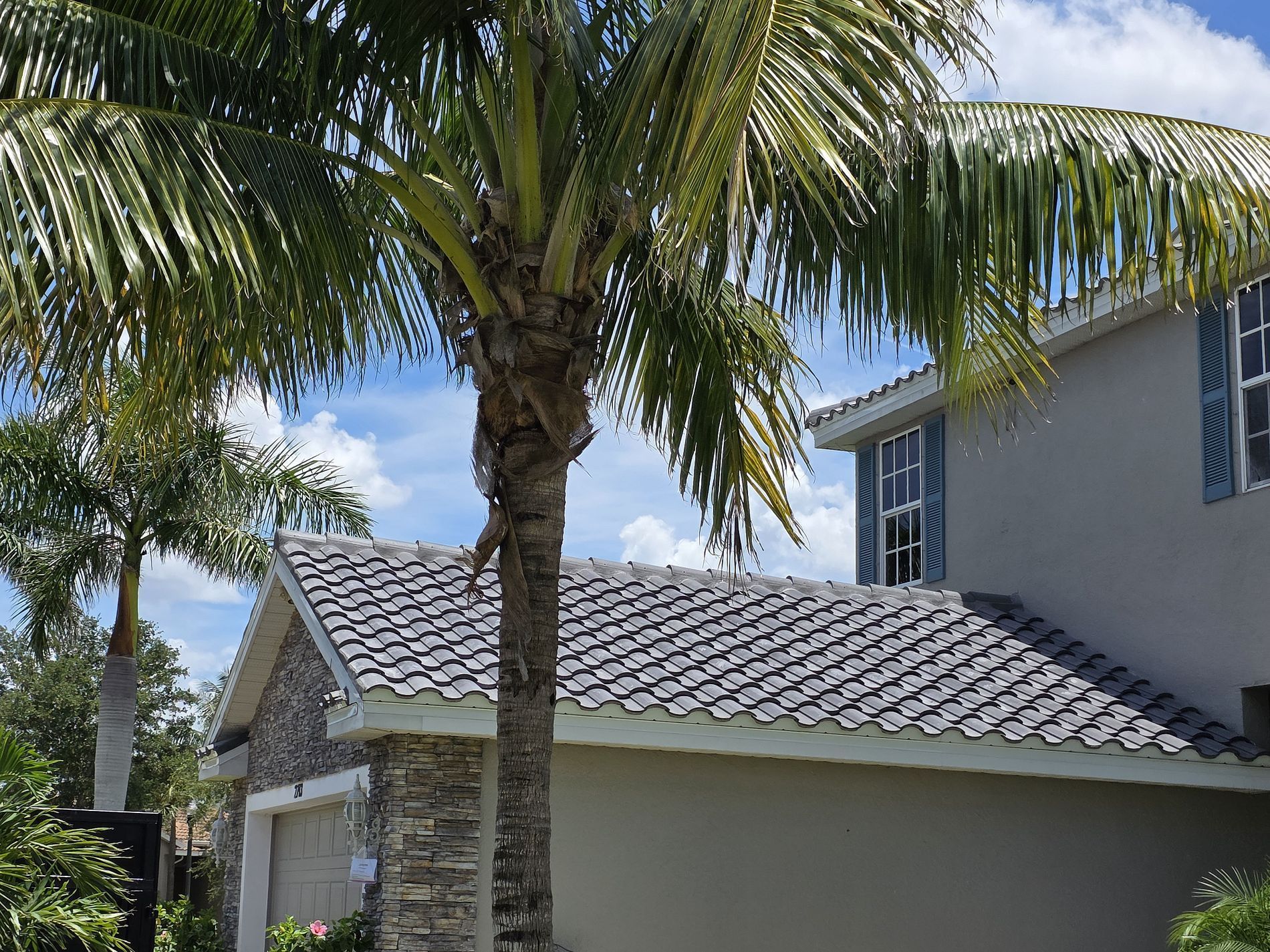
Why That “Too Good to Be True” Price Might Be Exactly That From Allstate Exteriors | Roofing Experts You Can Count On in Florida & Ohio We get it — shopping for a new roof isn’t exactly fun. And when you're staring down a stack of quotes, one of them usually jumps out: 💥 A super low price. Maybe $5,000 for the full job. Sounds like a win, right? Not so fast. At Allstate Exteriors, we’ve had way too many homeowners call us a few years after going with the cheapest bid, saying, “I wish we would’ve known.” And honestly? We wish they would’ve too. So, let’s talk about what’s really going on behind those lowball roofing quotes — and how to protect your home from future headaches. What’s Usually Missing From a $5K Roof? If a quote comes in way lower than the others, there’s almost always a reason — and it usually means something essential got left out. Like: ❌ No Premium Underlayment Quality roofs need a protective barrier under the shingles. Many cheap quotes skip the synthetic underlayment or ice & water shield altogether — opening the door for future leaks. ❌ Old Flashing Gets Reused Flashing is what seals areas around chimneys, vents, and valleys. When it’s reused instead of replaced, it can let water in behind the scenes. ❌ Ventilation? What Ventilation? Proper attic airflow is critical to a roof’s lifespan. A lot of budget contractors won’t even check your vents, let alone upgrade them — which can cause mold, heat damage, and early shingle failure. ❌ Cover-Ups Instead of Tear-Offs Some roofers just install new shingles over the old ones to save time and labor. It’s faster, cheaper, and totally voids most manufacturer warranties. No thanks. ❌ Questionable Crews We’ve seen some shockingly low quotes come from crews with no insurance, no licensing, and no long-term plan to stick around. That’s not just a risk — it’s a liability. What That Cheap Roof Can Actually Cost You Let’s say you go with the $5,000 roof. It looks fine at first. But within a few years: The shingles are curling Water starts leaking in during storms You find soft spots in the decking The original roofer? Gone. No warranty. No support . Now you're looking at a $15,000 tear-off and redo — on top of the original cost. That “cheap” roof just got very expensive. What a Quality Roofing Quote Should Actually Include At Allstate Exteriors, we don’t cut corners to win bids. We build roofs that last — and we’re transparent about everything included. When you get a quote from us, here’s what’s part of the package: ✔️ Full tear-off (no cover-ups!) ✔️ Ice & water shield in all the right places ✔️ Premium synthetic underlayment ✔️ Upgraded ventilation and intake systems ✔️ Brand new flashing and drip edge ✔️ Manufacturer-compliant install (to keep your warranty valid) ✔️ Our 2-year workmanship warranty We’re not here to be the cheapest. We’re here to be the most trusted. Smart Questions to Ask Any Roofer Before You Hire Whether you go with us or not, here’s what you should always ask: What underlayment are you using? Will the old roof be torn off or shingled over? Are you upgrading attic ventilation? Will all flashing and drip edge be replaced? What kind of warranty comes with the work? If they hesitate, dodge, or brush you off — trust your gut. Final Thought: Pay Now or Pay Later A new roof is a big investment — and it should be one you only have to make once. A bargain quote might feel good today… until the leaks, the rot, and the bills start adding up. So take a breath. Ask the right questions. And choose a roofing partner who’s in it with you for the long haul. 📞 Schedule your free roof inspection with Allstate Exteriors today — and let’s build something that lasts.
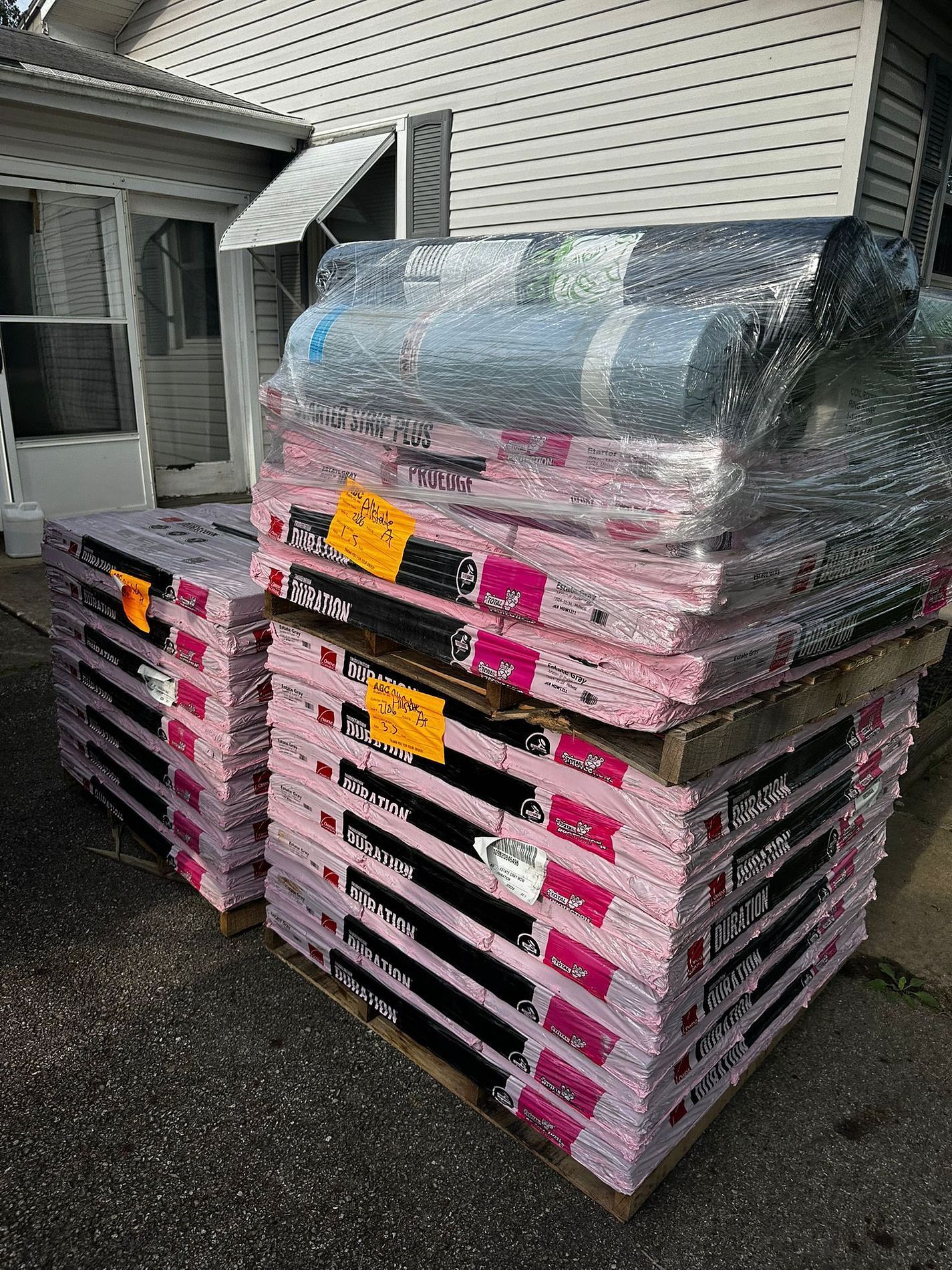
Roofing FAQs: What Homeowners Are Asking in 2025 Roofing isn’t something most homeowners think about—until there’s a leak, missing shingles, or storm damage. At Allstate Exteriors , we talk to homeowners every day who have questions about their roofs. To make things easier, we’ve rounded up the top roofing FAQs of 2025—and our expert answers to each. 1. How do I know if I need a new roof or just a repair? Look for signs like: Missing or curling shingles Water stains on ceilings Granules in your gutters Visible sagging or soft spots If your roof is over 15 years old, it may be time for a replacement. Our team offers free inspections to help you decide. 2. How much does a new roof cost in 2025? Costs vary based on roof size, materials, pitch, and complexity. On average, a roof replacement can range from $8,000 to $20,000+ in 2025. Insurance may cover storm damage—ask us about your options. 3. What roofing materials are best for my home? It depends on your location and budget. In 2025, these are the most popular: Asphalt shingles: Affordable and durable (especially Owens Corning Duration®) Metal roofing: Great for longevity and energy efficiency Architectural shingles: Stylish, layered look with better performance We’ll help you compare the pros and cons during your estimate. 4. Does homeowner’s insurance cover roof damage? Usually—if it’s caused by a sudden event like hail, wind, or falling debris. Wear and tear over time isn’t typically covered. If you’re unsure, we can help you understand your policy and assist with the claims process. 5. How long does it take to replace a roof? Most homes can be re-roofed in 1–2 days, depending on the size and weather. Our crews are quick, clean, and efficient—minimizing disruption to your home and routine. 6. How long does a new roof last? Average lifespans: Asphalt shingles: 20–30 years Architectural shingles: 30–50 years Metal roofing: 40–70 years Proper installation and ventilation make a big difference—so does choosing a certified roofing contractor like Allstate Exteriors. 7. What is a roofing warranty , and what does it cover? There are typically two types: Manufacturer’s warranty: Covers defects in materials Workmanship warranty: Covers installation issues We offer both—including options backed by Owens Corning for added peace of mind. 8. What should I ask before hiring a roofing contractor? Ask about: Licensing and insurance Local experience References or online reviews Warranties offered Whether they work with your insurance company. (Pro tip: Allstate Exteriors checks all those boxes.) 9. Can I finance my roof replacement? Yes! We offer flexible payment options and financing plans to fit most budgets—plus guidance on using insurance or grant programs when available. 1 0. What time of year is best to replace a roof? Spring and fall are ideal, but our crews work year-round. In emergencies (like leaks or storm damage), we act fast no matter the season. Got More Roofing Questions? We’ve Got Answers . At Allstate Exteriors, we believe in keeping homeowners informed. Whether you need a full replacement, a small repair, or just a second opinion, we’re here to help. Book your free estimate
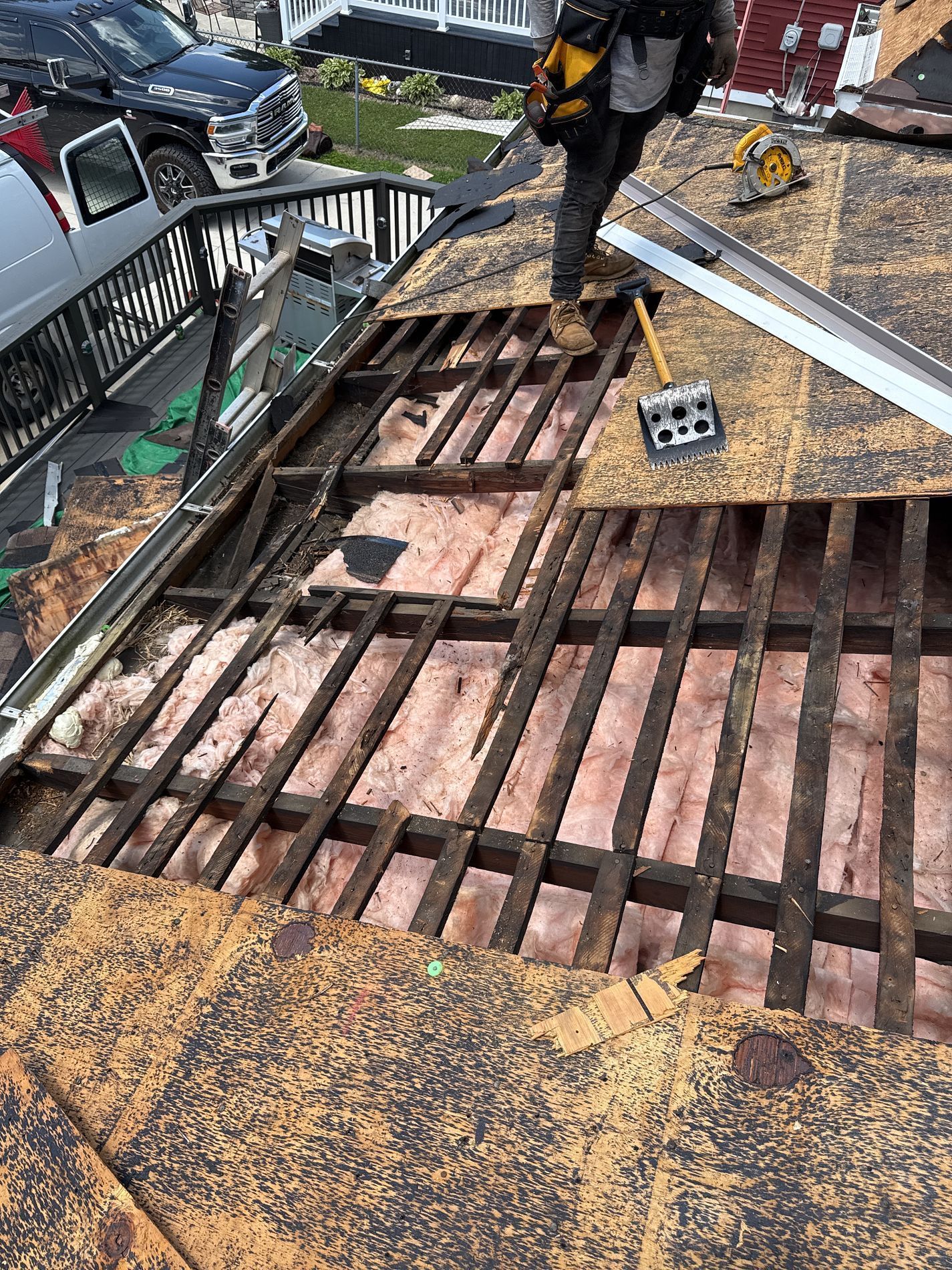
When most homeowners think about a roof, they picture shingles—and for good reason. Shingles are the most visible part of your roof, and they play a huge role in protection and curb appeal. But here at Allstate Exteriors , we know that a roof is only as strong as the system beneath it. Let’s break down all the unseen heroes of your roofing system—and why each one matters for keeping your home safe, dry, and protected for the long haul. 1. Roof Decking: The Foundation of it All Before we can install a single shingle, we need a solid foundation. Roof decking is the plywood or OSB layer that’s nailed to your roof trusses. It’s what every other roofing component is attached to. Why It Matters: If your decking is soft, rotted, or uneven, it can’t hold nails properly, leading to shingle blow-offs, leaks, and structural issues. That’s why we always inspect—and replace decking when needed—to give your roof a strong start. 2. Ice & Water Shield: Your First Line of Defense Ice & water shield is a self-adhering waterproof membrane installed in the most leak-prone areas of your roof—like eaves, valleys, and around penetrations (chimneys, vents, skylights). Why It Matters: It acts as a barrier against wind-driven rain and ice dams, which can cause water to back up under your shingles and into your attic. Especially in Ohio’s snowy winters or Florida’s hurricane season, this layer is crucial for preventing water damage before it starts. 3. Synthetic Underlayment: A Secondary Shield Beneath your shingles sits a layer of synthetic underlayment. Think of it as your roof’s backup plan—if water gets past the shingles, this layer is there to stop it. Why It Matters: Unlike outdated felt paper, modern synthetic underlayment is stronger, more breathable, and resistant to tearing or wrinkling, especially in high heat and wind conditions. 4. Flashing: The Unsung Hero Around Penetrations Flashing is the metal installed around chimneys, skylights, roof edges, valleys, and vents to direct water away from vulnerable areas. Why It Matters: Poor or rusted flashing is one of the most common causes of roof leaks. At Allstate Exteriors, we make sure it’s installed right—and replaced if it’s compromised. 5. Ventilation: The Key to a Healthy Roof (and Home) Proper roof ventilation allows hot, moist air to escape from your attic. This helps regulate temperature and reduces condensation, mold growth, and ice dams. Why It Matters: A poorly ventilated attic can shorten the life of your roof, increase energy bills, and lead to moisture damage inside your home. We design every ventilation system to keep airflow balanced year-round. 6. Ridge Cap Shingles & Starter Strips: Small Details, Big Impact Starter strips help prevent wind uplift along the edges of your roof Ridge cap shingles finish the job with a clean look and added protection along peaks Why They Matter: They might be small, but these components ensure your roof is sealed properly—and look great doing it. Why a Complete Roofing System Matters At Allstate Exteriors, we don’t just slap on shingles and call it a day. We install complete roofing systems using the best materials, expert craftsmanship, and proven installation methods. Every component we use is designed to work together to: Prevent leaks Improve energy efficiency Extend the life of your roof Maximize your warranty coverage Let’s Build a Roof That Lasts Whether you’re dealing with storm damage, age-related wear, or planning ahead, we’re here to make sure your next roof is more than just pretty—it’s protected, top to bottom. 📞 Call today for a free, no-pressure roof inspection!
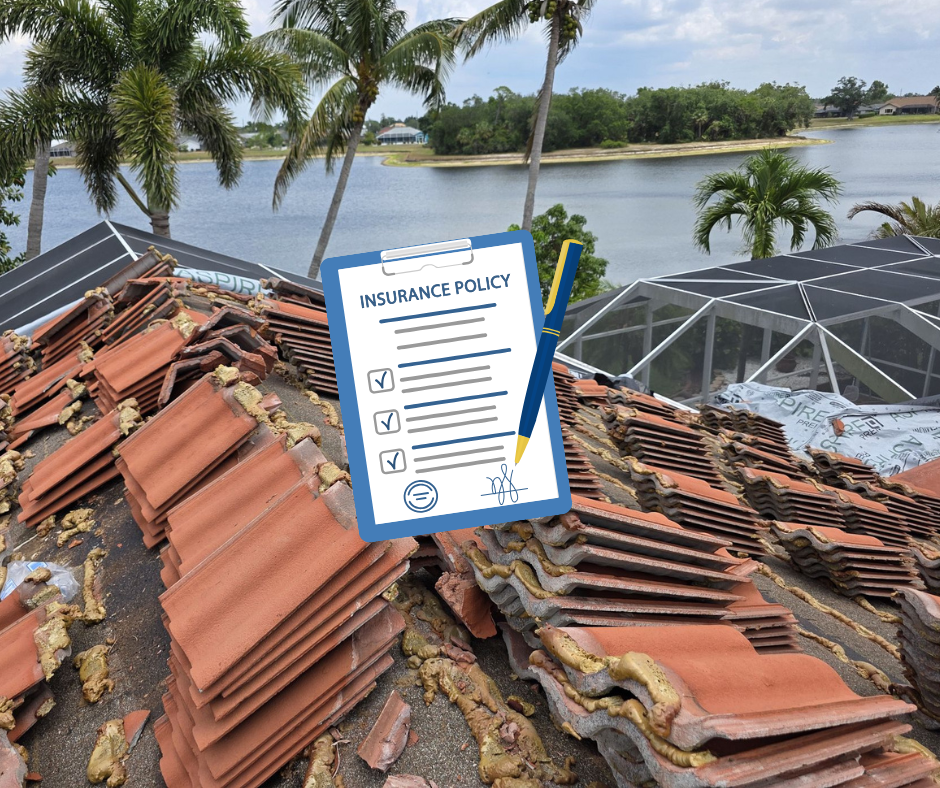
When a major storm rolls through Florida or Ohio , your first thought is likely about keeping your family safe — but once the skies clear, your next priority should be checking your home for damage. Roofing issues are some of the most common (and costly) storm-related repairs, and the good news is your homeowner’s insurance may help cover the costs. Filing a roofing insurance claim can feel overwhelming, especially when you’re already dealing with stress after a storm. That’s why we’ve put together this step-by-step guide to help you navigate the process with confidence — and get your home back to pre-storm condition as quickly as possible. Step 1: Inspect Your Roof for Visible Damage Start with a visual inspection. You don’t need to climb up on the roof — in fact, we recommend you don’t. From the ground (or with binoculars), look for: Missing or curled shingles Dents in metal flashing or gutters Granule loss or bald spots on shingles Pieces of shingles or roofing debris in your yard Water stains on ceilings or in the attic In Florida, hurricanes and heavy winds can rip shingles off or loosen flashing. In Ohio, hail and tornado-force winds can cause both visible and hidden damage. Step 2: Document Everything Take clear, dated photos of any damage you notice — and if it’s safe, get interior shots of leaks, water stains, or ceiling damage. The more evidence you have, the stronger your claim will be. Pro tip: Snap photos from multiple angles and save them in a digital folder titled by storm date. This makes it easy to submit to your insurance provider later. Step 3: Contact a Local Roofing Company for an Inspection Before calling your insurance company, have a reputable roofing contractor (like Allstate Exteriors 😉) perform a free storm damage inspection. This ensures: You know exactly what damage was caused by the storm You’re not relying solely on the insurance adjuster’s findings You have a written inspection report and estimate for repairs A good roofing company will also walk you through the insurance claim process — and in many cases, even meet with your adjuster to make sure nothing is missed. Step 4: File the Claim with Your Insurance Provider Once you’ve confirmed there’s storm-related damage, it’s time to officially file your claim. Most providers allow you to do this: Online via your insurance portal, t hrough a mobile app, or b y calling their claims department. Be prepared to provide: Your policy number Date and time of the storm A general description of the damage Photos and inspection report (if available) Step 5: Meet with the Insurance Adjuster After filing, the insurance company will schedule an adjuster to inspect the damage in person. It’s crucial that your roofing contractor is there too. This helps: Advocate for all damage to be noted Prevent missed or overlooked issues Ensure you get a fair, full estimate for repair or replacement At Allstate Exteriors , we meet adjusters on-site to represent your best interest — so nothing falls through the cracks. Step 6: Review the Insurance Estimate Once the adjuster completes their report, you’ll receive a damage estimate and coverage breakdown. This will include: What’s covered and what’s not, y our deductible amount, and t he total payout you’ll receive. If something seems off or missing, your contractor can help you supplement the claim with additional documentation. Step 7: Schedule the Repairs After approval, you’re free to move forward! Choose a licensed and insured roofing company to complete the repairs or replacement. Keep all invoices and receipts — your insurance provider may need them for final reimbursement. * Bonus Tip: Keep Records of Everything* From emails and texts to photos and receipts, hold onto all communication throughout the claims process. This protects you in case of disputes or delays. Dealing with storm damage can be stressful, but filing a roofing insurance claim doesn’t have to be. With the right steps (and the right roofing partner), you can restore your home quickly and confidently. Whether you’re facing hurricane aftermath in Florida or hail damage in Ohio, our team at Allstate Exteriors is here to help. We’ve worked with countless homeowners through the insurance process — and we’re happy to do the same for you. Need a free storm damage inspection? Schedule yours today and let us handle the hard part.
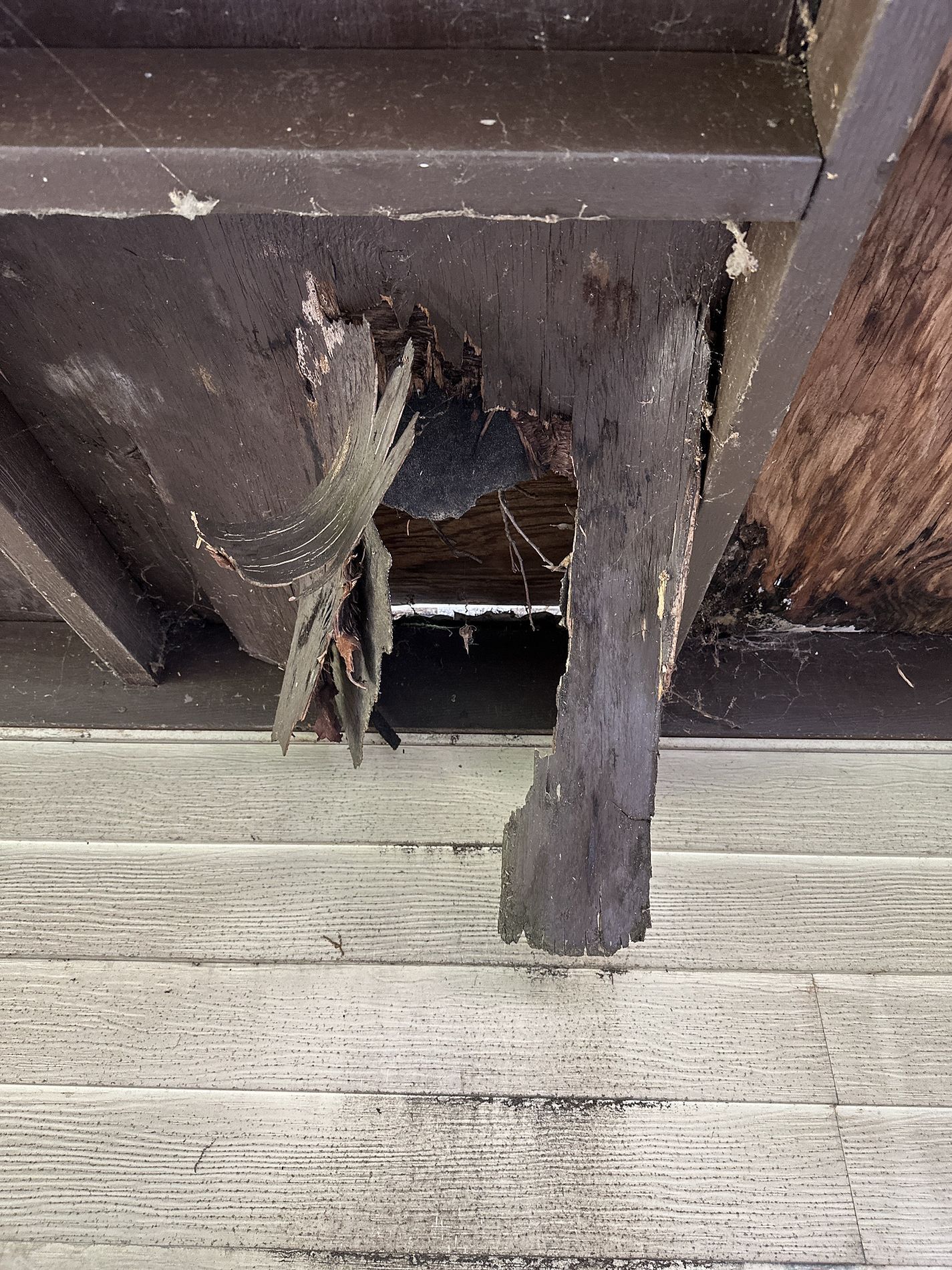
How to Handle a Roofing Emergency: A Florida Homeowner’s Quick Guide Living in Florida comes with its perks—sunshine, beach days, and year-round warmth. But if you’ve lived here long enough, you know that our beautiful weather can turn on a dime. One minute it’s sunny skies, the next it’s a full-blown thunderstorm, complete with whipping winds and pounding rain. And when that happens, your roof is your first line of defense. But what happens when that defense gives out? Whether it’s a sudden leak, a tree branch through your shingles, or storm damage you didn’t see coming—roofing emergencies are stressful, fast-moving situations. But with the right steps, you can take control and minimize the chaos. This guide will walk you through exactly what to do when your roof is in trouble. 🚨 Step 1: Keep Calm and Prioritize Safety We get it—seeing water pour into your living room or spotting shingles scattered across the yard can send anyone into panic mode. But your safety is the #1 priority. If part of your ceiling is sagging or leaking, steer clear of the area. Do not climb onto the roof yourself—especially if it's still raining or dark outside. *Keep kids and pets away from any active leaks or debris. No emergency repair is worth risking your safety. Let the pros handle the roof. 💧 Step 2: Stop the Drip, Save the Space If it’s safe, take steps to minimize interior damage: Place buckets, towels, or trash bins under leaks. Use tarps or plastic sheets to cover furniture and floors. Move electronics and valuables to a dry spot. Pro tip: If you notice a ceiling bubble forming, puncture the center carefully with a screwdriver to release the water slowly. It’s better than letting the entire thing burst unexpectedly. 📞 Step 3: Call an Emergency Roofing Expert (Like, Now) This is not the time to scroll endlessly through Google reviews or wait until Monday. You need help—fast. Call a trusted Florida roofing company that offers emergency services. Look for: 24/7 availability Fast response times Local storm damage expertise Help with insurance paperwork Here at Allstate Exteriors , our Florida team is ready at a moment’s notice with tarps, tools, and experience. We’ve been through the wildest storms—and we know how to patch, protect, and rebuild. 📸 Step 4: Document Everything Before any temporary repairs are made, grab your phone and start snapping pics. Take wide shots and close-ups of the damaged areas. Don’t forget the attic or ceilings if water made it inside. Note any damaged belongings for your insurance claim. The more evidence you have, the smoother your insurance process will be later. 🛠️ Step 5: Get it Covered—Literally In most cases, your roofer will install emergency tarps or protective covers to prevent more water from getting in. This is a short-term fix—but it buys you time and keeps the damage from spreading. Think of it like putting a Band-Aid on your home until the real healing can begin. 🧰 Step 6: Schedule a Full Roof Inspection Once the storm has passed and your roof is safely tarped, schedule a full inspection . You’ll want a licensed roofing professional to: Check for shingle, flashing, or structural damage Look underneath the surface for soaked underlayment or rotted decking Inspect your siding, soffits, and gutters too It’s common to find **hidden damage** days or even weeks after the storm—especially in Florida’s humid climate. The sooner you catch it, the better. 🏚️ Step 7: Don’t Delay Permanent Repairs Out of sight, out of mind? Not so fast. That emergency patch might hold for a few days or weeks, but the longer you wait to make permanent repairs, the more damage can build up behind the scenes. Ignoring a damaged roof can lead to: Mold and mildew growth Higher energy bills from poor insulation Major water damage inside your home Bigger, more expensive fixes later on Final Thoughts: Roofing Emergencies Don’t Have to Be a Disaster If you’re dealing with a roofing emergency, you’re not alone—and you’re not helpless. With the right actions and the right roofing partner, you can protect your home and avoid long-term stress. Storms may be unpredictable, but your response doesn’t have to be. Save this guide, share it with a neighbor, and most importantly—stay prepared. Need Emergency Roofing Help in Florida? Whether you’re in Cape Coral, Orlando, or anywhere along the coast, Allstate Exteriors is just a phone call away. We offer 24/7 emergency services, expert inspections, and high-quality repairs built to weather the next storm. Schedule an Inspection Today
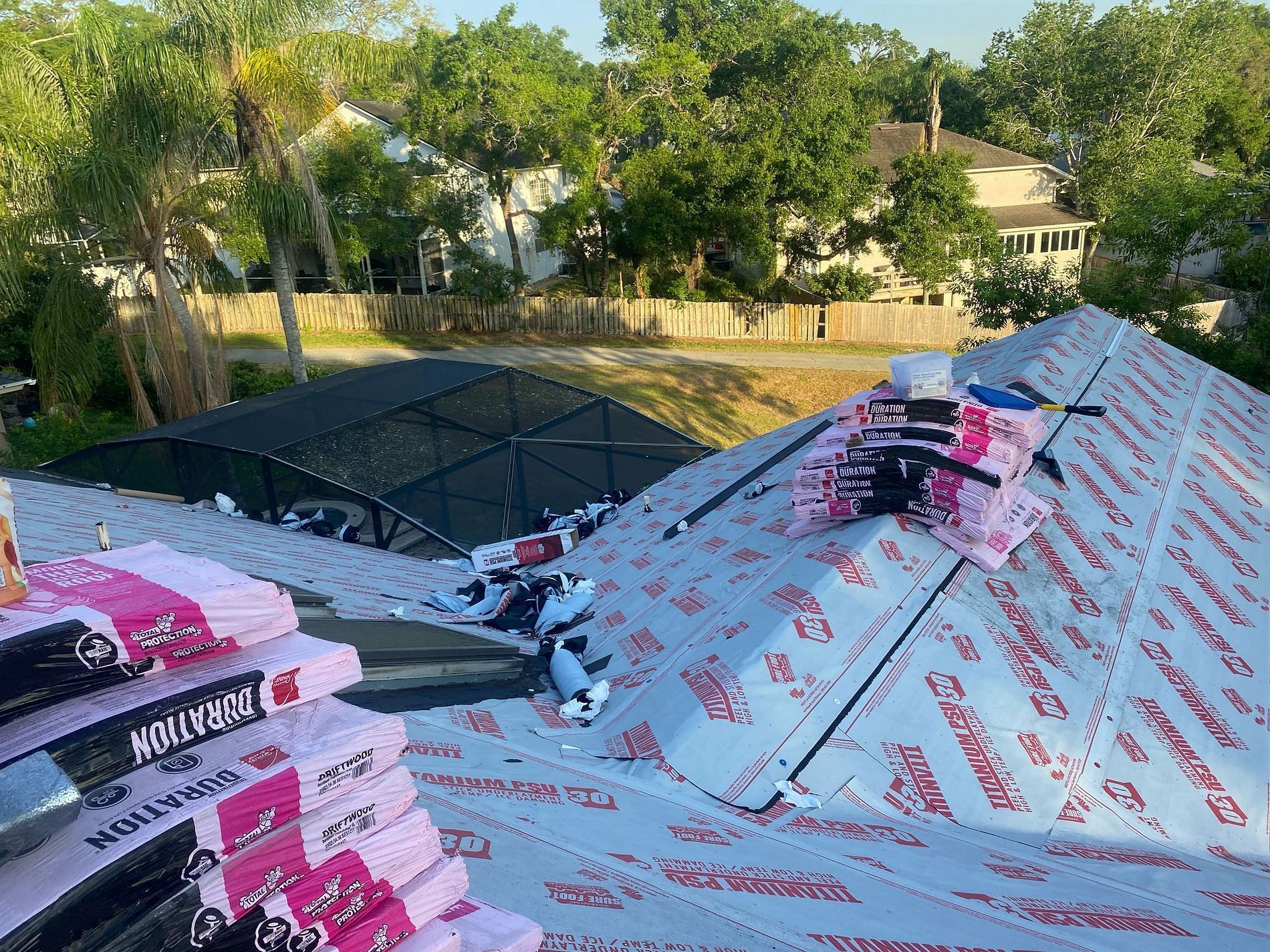
Do You Need a Permit to Replace a Roof in Florida? Essential Guide for Homeowners Introduction Thinking about replacing your roof in Florida? It’s a major project that requires more than just hiring a contractor and choosing shingles. You need to understand if you need a permit before breaking ground. Failing to get the right permits can lead to big trouble, including fines, work delays, or worse—an unsafe roof. With recent updates to building codes and hurricane season approaching, more homeowners are asking if permits are really necessary. Knowing the rules helps protect your home, your wallet, and your legal standing. Florida Roofing Regulations and Permit Requirements Overview State and Local Regulations Florida has strict building codes aimed at keeping homes safe from storms and wear. The Florida Building Code (FBC) sets the minimum standards for roofing , including durability, wind resistance, and safety. But rules don’t stop at state lines. Local counties and cities often add their own rules, which can change from one neighborhood to the next. For example, a permit needed in Miami might not be required in a smaller town. Always check with your local building department to stay on top of specific regulations. Types of Roofing Projects Requiring Permits In Florida, certain projects definitely need permits. These include: Complete roof replacements replacing the entire roof system. Changing materials—say, switching from asphalt shingles to metal. Installing a new roofing system after damage, especially if it involves structural work. Even minor modifications can trigger permit requirements if they alter how your roof functions. Keep in mind, insurance policies may request proof of proper permits for claims or warranties to stay valid. When Permits Are Not Required Not all roofing work calls for a permit. Small repairs such as fixing a few shingles, cleaning gutters , or replacing broken tiles usually fall into this category. Emergency repairs to prevent further damage might also be exempt temporarily. Some local jurisdictions may waive permits for minor projects or if you’re only doing maintenance. Always double-check with your local building department before assuming no permit is needed. Why Permits Are Necessary for Roof Replacement in Florida Ensuring Compliance with Building Codes Building codes are designed to make sure your roof can withstand Florida’s weather. This includes high winds, heavy rain, and hurricanes. When you get a permit, your work has to follow these standards. Without it, you risk getting a subpar roof that may not hold up during a storm. Violating codes can lead to fines or having to redo the work later. Protecting Property and Residents Permits mean inspections. A licensed inspector checks your roof at various stages, catching problems early. They verify the quality of work, materials, and proper installation. This process helps ensure your roof is safe and will last longer. Better workmanship means fewer leaks, less damage, and peace of mind for your family. Insurance and Resale Implications Thinking about selling your home someday? Unpermitted work can cause trouble. Some insurance companies might refuse to cover damages if your roof work wasn’t permitted. Plus, future buyers or appraisers could see unpermitted repairs as red flags, lowering your home’s value. Always get the proper permits to avoid legal and financial headaches down the road. Avoiding Potential Fines and Legal Penalties Failing to secure permits can lead to hefty fines—sometimes thousands of dollars. Local authorities can require you to remove unpermitted work or pay penalties. In some cases, they might halt your project altogether. Playing by the rules keeps your project smooth and avoids unnecessary costs. The Permitting Process for Roofing in Florida How to Determine If You Need a Permit? The easiest way is to call your local building department or visit their website. They often have handy online tools to check if your project needs a permit. Talking to a licensed contractor can also clarify what’s required. Remember, it’s better to ask upfront than deal with surprises later. Steps to Obtain a Roofing Permit Here’s a quick overview: Gather documents: drawings, project details, and permit application forms. Submit your paperwork to the local building office. Pay permit fees—costs vary depending on location and project size. Wait for approval—this usually takes a few days to a couple of weeks. Schedule inspections during and after the work. Inspection and Approval Procedures An inspector visits your property to verify work meets Florida’s standards. They check during different phases—say, after framing and after installation. Common issues they spot include improper nailing, missing flashing, or substandard materials. Once everything passes, your permit is closed, and you get official approval. This documentation is useful for future reference or resale. Hiring Licensed Roofing Contractors in Florida Importance of Certification and Licensing Working with licensed contractors guarantees your roof is installed correctly. Licensing shows they understand Florida’s specific building codes and safety standards. It also means they’re insured—protecting you if someone gets hurt or damages your property. Questions to Ask Before Hiring Make sure to verify: Their license number and credentials. References from past clients. Proof of insurance coverage. How they handle permits and inspections. A reliable contractor will be transparent about permit processes and ensure everything is approved before finishing the job. Cost Implications of Permitted vs. Unpermitted Work Permits may add to your project’s upfront costs, but ignoring them can be more expensive in the long run. Unpermitted work might save money initially but can lead to fines, rework, or legal problems later. A licensed contractor will factor permit costs into their estimate, saving you headaches. Practical Tips for Homeowners Verify Permit Status Always check if a permit has been issued. You can contact your local building department or look online. Confirm that the permit is active before work begins, and ask to see the final approval once completed. Keep Documentation Safe Save copies of all permits, inspection reports, and receipts related to your roof project. These documents are your proof your work was done legally and correctly. Stay Informed About Local Regulations Building codes and permit requirements may change. Check with your local officials periodically, especially before big projects. Staying updated helps you avoid accidental violations. Benefits of Proactive Compliance Following the rules and securing permits gives you peace of mind. Your home becomes safer, more valuable, and less likely to face legal issues later. It’s a smart move every homeowner should make. Conclusion Replacing a roof in Florida isn’t just about choosing shingles and hiring a contractor. It’s about making sure your project is legal, safe, and up to code. Permits protect your home, your family’s safety, and your investment. Always check local requirements, work with licensed professionals, and keep your paperwork in order. Proper permitting isn’t a hassle—it’s a smart step to keep your home secure against Florida’s toughest storms. Make that call today and safeguard your roof for years to come.
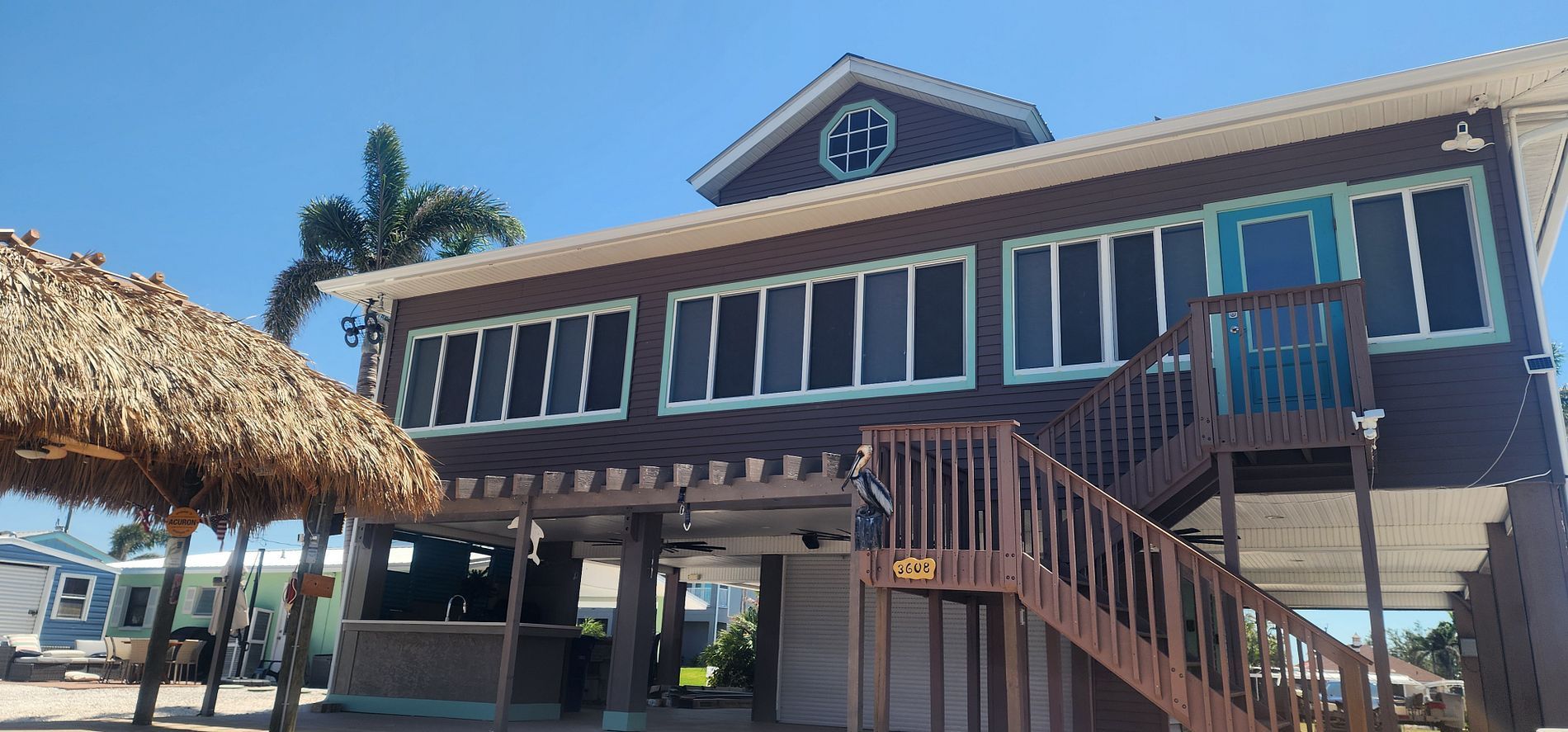
If you’ve lived in Florida for any length of time, you know that the weather here is no joke. From blazing sun and salty coastal air to surprise downpours and hurricane-force winds, your home’s exterior is constantly under pressure. While many homeowners focus on roofing, your siding is just as important—it's your home's protective shell and one of the first things people see. At Allstate Exteriors, we understand what Florida homes go through. Our team has helped thousands of homeowners across Cape Coral , Orlando , and surrounding areas choose the right siding to protect their investment—and boost their curb appeal. If you're considering an upgrade or wondering whether your current siding is doing its job, here’s what you need to know. 🌴 What’s the Best Siding for Florida Weather? Common search: “Best siding for Florida homes” Choosing the right siding for a Florida home isn’t just about looks—it’s about performance. Here in the Sunshine State, siding has to stand up to high humidity, intense UV rays, heavy rainfall, and strong winds. Here are the most popular and proven options: Vinyl Siding – One of the most cost-effective choices for Florida homeowners. Vinyl is fade-resistant, moisture-proof, and requires little maintenance. It’s also available in a wide range of colors and styles, so you can personalize your home’s look. Fiber Cement Siding (like Hardie® Board) – This heavy-duty siding is a favorite in hurricane zones. It resists warping, pests, fire, and moisture damage. It’s also incredibly durable and holds up beautifully in Florida’s unpredictable climate. Engineered Wood Siding – A great middle ground between real wood and synthetic materials. It gives your home a warm, classic look with added resistance to moisture and insects, though it may require more upkeep than other options. The siding you choose should be based on your location, budget, aesthetic preferences, and how much maintenance you’re willing to commit to. That’s where we come in—our experienced team is happy to walk you through your options with no pressure. ☀️ Will New Siding Help with Energy Efficiency? Common search: “Does siding help keep my house cool in Florida?” Absolutely! Insulated siding acts as an extra thermal barrier, keeping Florida’s brutal heat outside and your cool air inside. This not only makes your home more comfortable but can also lead to lower energy bills—a win-win. Many of our customers are surprised at just how much of a difference quality siding makes in their monthly costs. And with today's materials, you don’t have to sacrifice style for performance. It’s a smart investment in both function and beauty. 🏚️ How Do I Know If My Siding Needs to Be Replaced? Common search: “Signs I need new siding” Sometimes the signs are obvious—other times, damage hides in plain sight. Here’s what to watch for: Cracks, warping, or bubbling Discoloration or fading Mildew or mold buildup Higher-than-usual energy bills Pest issues or unexplained drafts Even small imperfections can lead to big problems over time, especially in Florida’s wet, humid environment. A free inspection from Allstate Exteriors can help you catch these issues before they become costly repairs. 🌀 Is My Siding Hurricane-Ready? Common search: “Best siding for hurricane areas” In Florida, storms can be sudden and severe. That’s why it’s crucial to have siding that’s built to withstand high winds, flying debris, and water intrusion. Materials like fiber cement and reinforced vinyl are designed with storm protection in mind, and when installed properly, they meet or exceed Florida’s building code requirements for wind resistance. We also make sure your siding is sealed correctly and securely attached—because how it’s installed is just as important as the product itself. 🛠️ Why Choose Allstate Exteriors for Your Siding Project? We’re more than just siding installers—we’re your neighbors. As a family-owned and operated company, we treat every home like it’s our own. Our team is honest, reliable, and truly passionate about helping Florida families protect what matters most. When you work with Allstate Exteriors, you get: Friendly, no-pressure consultations Expert advice from local professionals High-quality materials from trusted brands Clean, respectful crews who do the job right Honest communication every step of the way We’ve earned our reputation by putting people first—and we’d be honored to do the same for you. Ready for a Siding Upgrade ? If you’re seeing signs of wear, dealing with high energy bills, or just ready to refresh your home’s look, let’s talk. Our siding solutions are designed to protect your home, increase its value, and make it look fantastic for years to come! 📞 Call today to schedule your free siding inspection or estimate
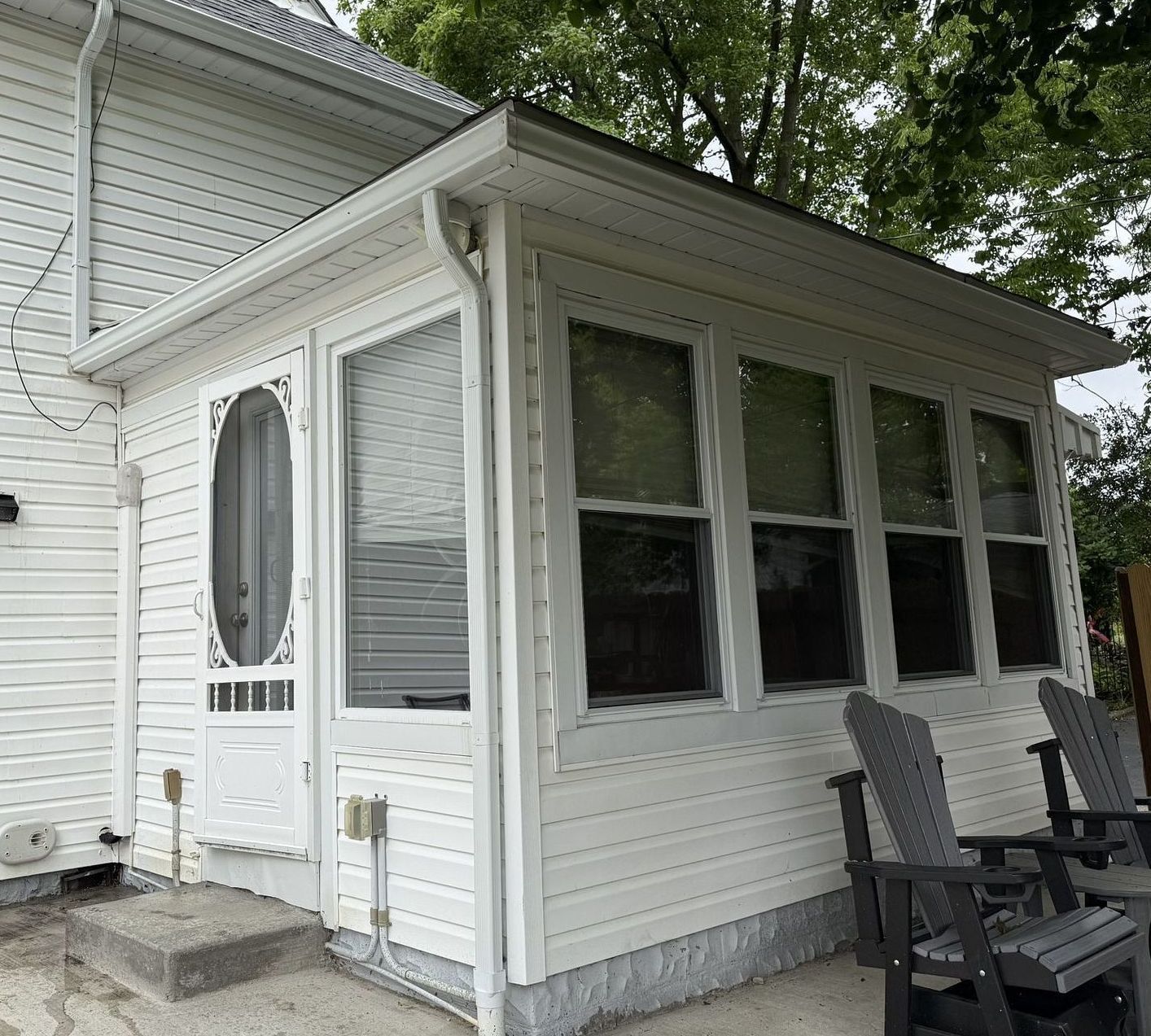
Gutters play a crucial role in protecting your home from water damage by directing rainwater away from your foundation, siding, and landscaping. However, over time, gutters can wear out, sustain damage, or become inefficient due to clogging. If you are considering a gutter replacement in 2025, understanding the costs involved is essential. As a homeowner in Columbus, Ohio, finding a reliable roofing contractor is key to ensuring that your gutter replacement is done correctly and efficiently. In this guide, we’ll break down the factors affecting the cost of gutter replacement, the different materials available, and what you can expect when hiring a professional. How Much Does Gutter Replacement Cost? The cost of gutter replacement depends on several factors, including the type of material, the size of your home, labor costs, and additional features such as gutter guards. Here’s a general breakdown of what you can expect: Average Cost of Gutter Replacement in 2025 Aluminum Gutters: $5 – $12 per linear foot Vinyl Gutters: $3 – $6 per linear foot Steel Gutters: $8 – $15 per linear foot Copper Gutters: $15 – $40 per linear foot Seamless Gutters: $10 – $25 per linear foot For a standard 2,000-square-foot home, a full gutter replacement can range from $1,200 to $5,000, depending on the materials and labor costs. Factors Affecting Gutter Replacement Costs Type of Gutter Material The material you choose will significantly impact the overall cost of the replacement. While vinyl is the most affordable, it may not last as long as aluminum or copper. Aluminum gutters are a popular choice due to their balance of cost, durability, and low maintenance. Size and Length of Gutters The more linear feet of guttering your home requires, the higher the overall cost. Larger homes or homes with complex rooflines may need additional downspouts and custom gutter configurations, increasing expenses. Labor Costs Hiring a professional roofing contractor ensures a proper installation. Labor costs typically range from $2 to $5 per linear foot. The complexity of the installation, such as working around multiple rooflines, can increase labor charges. Additional Features If you choose to install gutter guards, downspout extensions, or a leaf filtration system, expect to pay extra. Gutter guards alone can add $7 to $15 per linear foot, but they help reduce long-term maintenance costs. When Should You Replace Your Gutters? Ignoring gutter issues can lead to costly water damage and structural problems. Here are some critical warning signs that suggest it's time to replace your gutters: Visible Cracks, Holes, or Splits: Even small cracks can expand over time, leading to leaks that damage your home’s foundation and siding. Water Pooling Around the Foundation: If you notice standing water near your home after rainfall, your gutters may not be directing water away properly, increasing the risk of basement flooding. Sagging, Detached, or Misaligned Sections: Gutters that pull away from the roofline indicate structural failure and can no longer channel water effectively. Peeling Paint, Rust Spots, or Mold Growth: Excess moisture from failing gutters can cause exterior paint to bubble and peel, leading to rust or mold formation. Frequent Basement Flooding or Interior Moisture Issues: If water is seeping into your basement or crawl space, ineffective gutters might be the culprit. Should You Replace Gutters Yourself or Hire a Professional? DIY Gutter Replacement: Is It Worth the Risk? Replacing gutters yourself might seem like a great way to cut costs, but it comes with significant challenges. Without proper tools, experience, and safety measures, a DIY installation can quickly become overwhelming. Pros of DIY Gutter Replacement: Cost Savings: You can avoid labor costs, which can be a significant portion of professional installation fees. Hands-On Satisfaction: Completing a project yourself can be rewarding, providing a sense of accomplishment. Material Control: You get to personally select your preferred materials and customize the installation to your needs. Cons of DIY Gutter Replacement: Safety Hazards: Climbing ladders and working at heights can lead to serious injuries, especially for those without proper safety gear. Time-Consuming: Gutter replacement requires precise measurements, cutting, and securing, which can take several days for a beginner. Risk of Installation Errors: Improperly installed gutters may not drain water correctly, leading to leaks, foundation damage, and costly repairs in the future. Lack of Professional Tools: Many professional contractors use specialized tools that ensure a seamless fit and longer-lasting performance. Benefits of Professional Installation Expertise in proper gutter alignment and slope Access to high-quality materials and tools Warranty coverage for labor and materials Faster and more reliable installation For expert gutter installation, check out our roofing and gutter services to get a quote and schedule a consultation. How to Choose the Right Roofing Contractor When selecting a contractor, consider the following: Experience & Reputation: Look for reviews and testimonials from past customers. Licensing & Insurance: Ensure the company is properly licensed and insured. Warranty & Guarantees: A reliable contractor offers warranties on both materials and labor. Transparent Pricing: Request a detailed estimate before starting the project. Local Expertise: A contractor understands regional weather conditions and can recommend the best gutter solutions. Gutter Replacement: Your Top Questions Answered How long does it take to replace gutters? Most professional installations take one to two days, depending on the size of the home and weather conditions. What is the best material for gutters? Aluminum is the most popular due to its durability, affordability, and resistance to rust. Are seamless gutters worth the investment? Yes! Seamless gutters reduce leaks and require less maintenance compared to traditional sectional gutters. How often should gutters be replaced? On average, gutters last 20–30 years, but regular maintenance can extend their lifespan. What maintenance is required for new gutters? Regular cleaning, checking for clogs, and inspecting for damage will help keep your gutters in top shape. Wrapping Up: Is Gutter Replacement Worth It? Gutter replacement is a crucial home improvement investment that protects your property from costly water damage. By understanding the costs, materials, and professional installation options, you can make an informed decision for your home. For a hassle-free experience, contact a trusted roofing contractor today to get a customized quote. Schedule Your Free Gutter Inspection Today!


